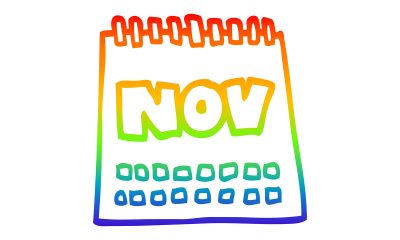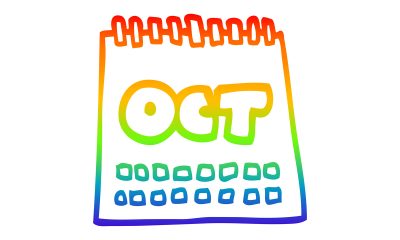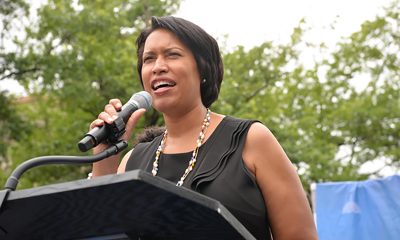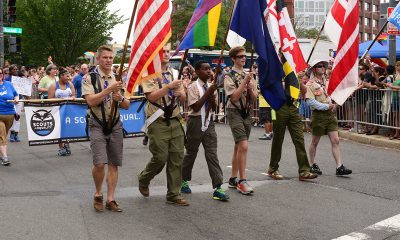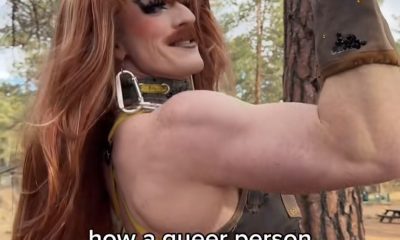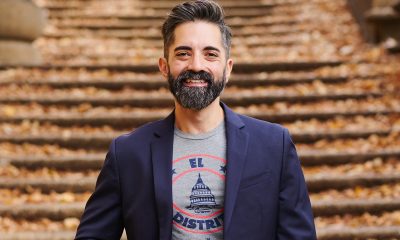a&e features
Netflix doc ‘Disclosure’ explores Hollywood’s history of offensive trans depictions
Laverne Cox, Candis Cayne, Chaz Bono featured in sweeping survey of film, TV past
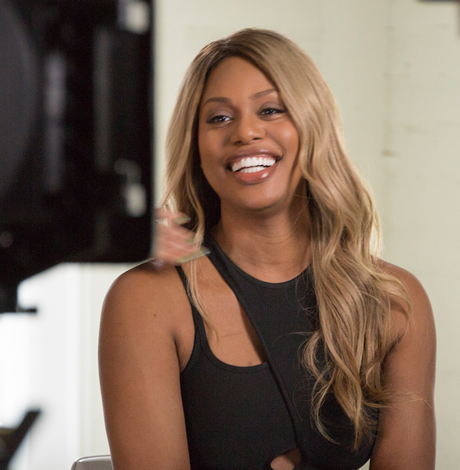
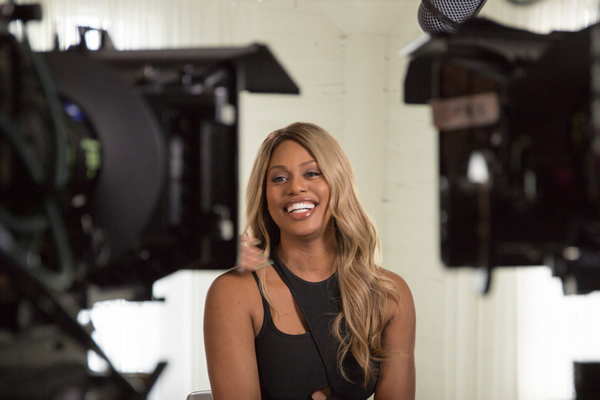
Dil (Jaye Davidson) disrobes for Fergus (Stephen Rea) in “The Crying Game” and he runs to the bathroom to vomit. The scene is later parodied in “Ace Ventura.”
Candis Cayne makes history as a trans actress in a trans role as Carmelita on ABC’s “Dirty Sexy Money” only to discover watching it they’ve lowered her voice electronically in her first scene.

Trans is a trope used for cruel comedic effect in dozens of movies and shows from “Soapdish” to “Married … With Children” and used to exploit guests on trashy ‘90s talk shows such as “The Jerry Springer Show.”
A new eye-opening and mostly comprehensive documentary on Hollywood’s depiction of the transgender experience titled “Disclosure” created by trans filmmaker Sam Feder starts streaming on Netflix on June 19.
The documentary follows several transgender media industry leaders and their experiences watching transgender representation on screen throughout their lives and later becoming actors and filmmakers themselves. Well-known creatives such as Laverne Cox, Lilly Wachowski and Chaz Bono are featured as well as clips from everything from early silent D.W. Griffith movies to classic Hollywood fare like the Cary Grant vehicle “I Was a Male War Bride” to Flip Wilson and Milton Berle to “The Jeffersons,” “Paris is Burning,” “Boys Don’t Cry,” “The Crying Game,” “Ace Ventura” and dozens more.
“Disclosure” covers a wide range of topics, from studying the dawn of the film industry in the early 20th century to problematic storylines in the present day.
Feder, who directed, and Cox, executive producer, spoke by Zoom Monday about the process with the Blade and the Windy City Times, a Chicago LGBT newspaper.
WASHINGTON BLADE: How did this film get made and what was the impetus for it?
SAM FEDER: There were two documentaries that really changed my life. One was “The Celluloid Closet,” and that’s about gay and lesbian representation in Hollywood. The other is “Ethnic Notions” by Marlon Riggs, which is about black representation in film in Hollywood. I always wanted to see that history for trans people with that type of critique and analysis and nuance. Then fast forward to 2014 and trans visibility was increasing and mainstream society was talking about us more than ever before, and I wanted to give trans and non-trans people more context to understand these changes in our culture, this history and how we got to this point of visibility. And, it was really important that we not lose sight of the fact that visibility in itself is not a goal. It is the means to an end. So, I felt like there was more to the story than what the public was seeing and talking about and I wanted to tell that story.
WINDY CITY TIMES: Why do you call it “Disclosure”?
FEDER: I don’t even know where to start with this one. So the idea that the responsibility of the trans person is to disclose their identity is so pervasive and it is such a violent assumption that anyone owes someone else an explanation of their history. It’s framed in this way, that you have done something wrong if you do not disclose. I think most trans people can relate to that tension and that understanding and I think a lot of us have internalized that as well, that we feel this anxiety around like, “Do we need to tell? Do they know?” But that is always upfront, first and foremost, so it really came from the idea that also all the images we see really also rely on the fact that we’re not real. They just say, over and over again, that we’re not who we say we are. Laverne, do you have anything to add to that because that’s you know, I mean, it’s your thing. You came up with the title and I assume it resonated with you in some way.
LAVERNE COX: Absolutely. I was on a reality show in 2008 called “I Want to Work for Diddy” and I remember I met a guy at the Duane Reade Pharmacy, I think around 2009 or 2010-ish. I am in the Dwayne Reade Pharmacy, and then he asked for my number, and then we meet like an hour and a half later or something for drinks at a nearby bar. We are sitting at the bar and I was just like, “So yeah, I’m trans” and “I’m transgender, whatever.” This was like 2009. He knew that I was trans but he was just so surprised that I just sat down and just was like, “Yeah, I’m trans, whatever.” He had dated trans women before who were scared to disclose, who were not always comfortable disclosing. It was obviously for safety reasons, too — to disclose sometimes meant violence. Unfortunately that is their history of what it means to be trans and so I just — it was so empowering for me to just sit there at that bar and just be like, “I’m trans. What’s the problem?”
And it’s been such a beautifully empowering thing for me to just be able to stand up, or I’m like, “oh Google me” … I love owning my transness. It’s so freeing to be in this space of full ownership of who you are, for me personally. I’m not saying this needs to be, you know, the situation for other trans folks — but my God. How freeing it’s been you just be able to sit at that bar, and I’m like, “You have an issue? OK, let’s go. I have stuff to do, if you have a problem then I can move on.” It is just a beautiful thing.
BLADE: How did you get permission to use all those movie and TV show clips in the film?
FEDER: All the clips that we use in the film came from personal stories and personal anecdotes and that was the nexus of telling this history. I did about 80 interviews with trans people who have worked on one side of the camera or the other and wanted to gather their memories of transgender representation, and from there accrue the database from which became the primary document of the film. While we were creating the story, it was crafted in such a way that you create original arguments with the footage. When you can create an original argument among certain context, you have fair use over material. So, we practiced our first amendment right.
TIMES: How do you think things could change where we can have trans people playing non-trans roles?
COX: It takes a casting agent, it takes a showrunner, or a director or a producer. It’s a few different entities. I mean, I’m proud to say that in the Netflix series “Inventing Anna,” that we are on hiatus from shooting because of COVID-19, I play a woman named Kacy Duke who is a naughty trans woman. I was cast because … the team thought I was the best person for the job. I mean, there are other instances too, like Candis Cayne plays a non-trans character. Hari Nef on “You” plays a character that is not trans in the first season. So it’s already happening, which is great.
FEDER: I want to just add to that though. I think you know, what does it mean to play a trans or a non-trans character, right? Just because there’s … no disclosure we still don’t know what’s happening. I’m always curious to know that emphasis on whether the characters trans or not.
COX: That’s a brilliant point. I think with Kacy Duke because she is a real walking, talking, human being in real life, we can’t say, “In case he’s not trans.” But with fictional characters, the character could be trans, and does it matter? Should it matter? You know, years ago,I had a joke that was if it doesn’t involve periods or pregnancy I can play it.
BLADE: Do you think the era of cis actors swooping in and winning Oscars for trans roles is over?
COX: You know, I don’t know. I mean, I don’t like to predict the future. My therapist told me years ago that making positive or negative predictions of the future is not reality. I think it’ll be really interesting after “Disclosure” and after the consciousness that hopefully we’ll be raised because of this film, if that happens again. I think that’ll be really interesting and curious and we’ll have a much more educated audience and industry winning if that is the case.
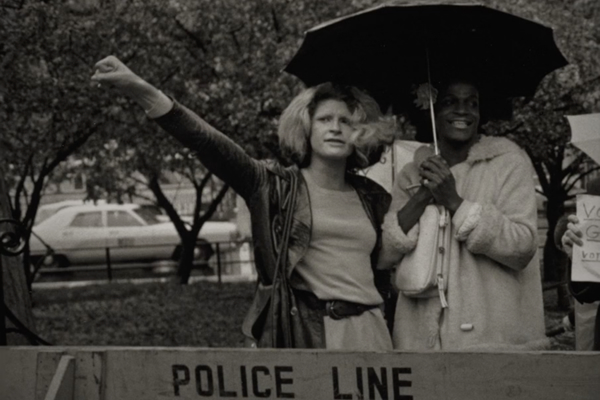
(Editor’s note: The Blade covered many of these topics last fall in a story on the 20th anniversary of “Boys Don’t Cry” called “Boys Don’t Cry” at 20: rethinking trans actors.”)
a&e features
Guillermo Diaz on his role as a queer, Latino actor in Hollywood
Shattering stereotypes and norms with long resume of roles
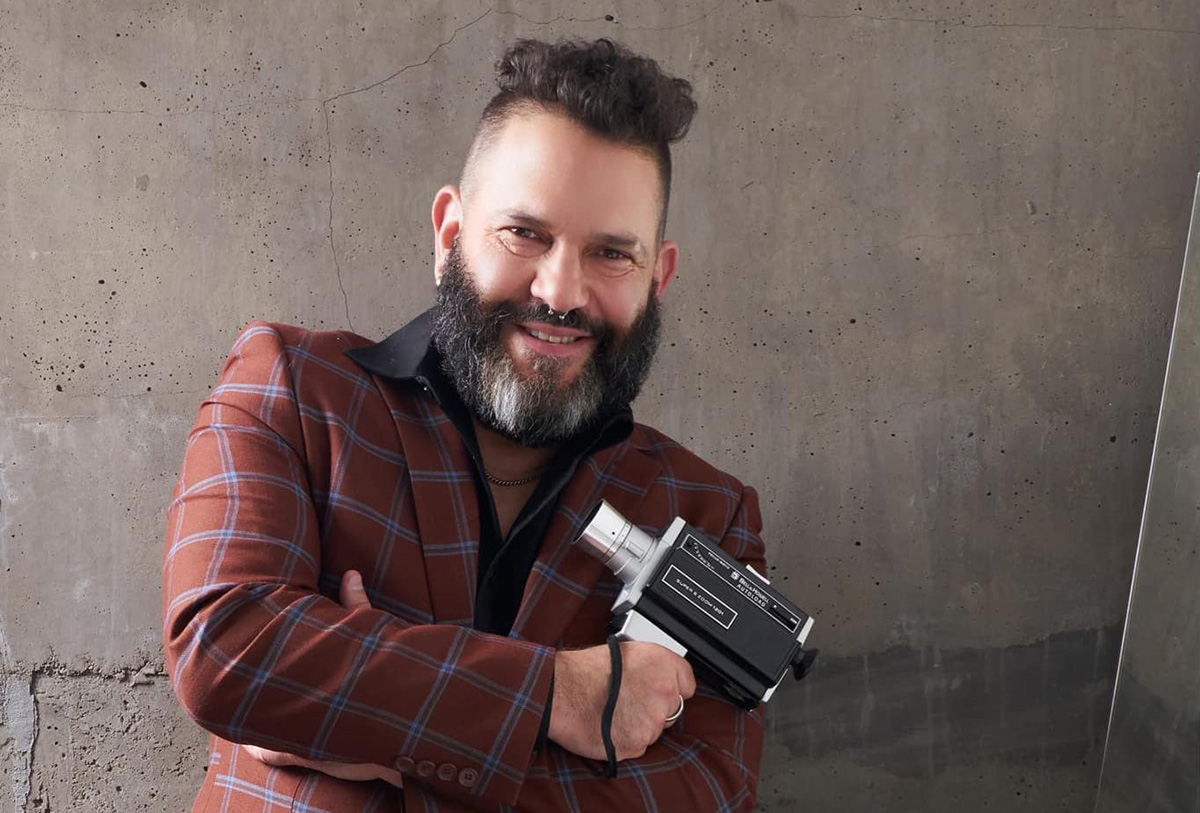
Actor Guillermo Diaz has been working hard in the entertainment industry for more than three decades. Proud of his heritage and queer identity, he has broken through many glass ceilings to have a prolific career that includes tentpole moments such as roles in the films Party Girl, Half Baked, and Bros, and in major TV shows like Weeds and Scandal, and even in a Britney Spears music video. This season, he made his feature-length directorial debut with the film Dear Luke, Love Me.
In an intimate sit-down with the Blade, Diaz shares that he attributes a lot of his success to his Cuban upbringing.
“Well, it prepared me to learn how to lie really well and be a good actor because it was a lot of acting like you were straight, back in the eighties and nineties (laugh). Another thing I learned from my Cuban immigrant parents is that they work super hard. They both had two jobs; we were latchkey kids, and I just saw them constantly working and wanting to provide for us by any means. So that was super instilled in me. That was the one thing that really stuck out that I admire and respect.”
Besides Diaz’s recurring roles on TV, his resume includes appearances in just about every genre of programming out there. If there is a major show out there, he was probably on it. Law and Order, Girls, The Closer, Chappelle’s Show, ER, Party of Five, and the list goes on. He’s accomplished more in his career thus far than most actors do in a lifetime. There is no doubt he is a hard worker.
“It’s a sign that I just loved to work, and it’s funny looking back at it now because you see all those things, but at the time it was just the next gig, the next job. I was just wanting to keep working and acting and learning and doing all that stuff. Then it sort of accumulates, and you look back and you’re like, damn! That’s a lot of stuff!”
Acting was never on Diaz’s radar until he was asked to fill in for a friend in a Beastie Boys medley for a talent show when he was a sophomore in high school.
“I did it and fell in love with it. I was teased a lot in high school. Then, when I did that performance, all those people who teased me were like, you were so great! So I looked at it initially as a thing of like, oh, this is where I’m accepted and people like me when I’m on stage. It’s kind of sad, too, because that’s what I latched onto. And then of course, I fell in love with the craft and performing and acting, but that initial rush was because all these people who were messing with me and teasing me all of a sudden liked me. And I was like, this is what I have to do.”
Little did Diaz know that he would break the mold when it came to stereotypical casting. When he first hit the industry, diversity and positive representation were not a thing in Hollywood.
“You just kind of accepted at the time. It was the early nineties. 90% of the time, it was playing a thug or a gun dealer, or a crack head – it was all bad guys, negative characters. But it was either that or not act and not be in anything. So you just kind of accept it, and then you have this sort of vision or hope that in the future it’s going to get better.
Diaz’s management was trepidatious about him playing gay roles for fear of being typecast. But Diaz did play a handful of gay roles early on, although he passed on But I’m A Cheerleader, which went on to become a gay cult classic. Diaz decided early on that he was not going to hide his sexuality. Diaz appeared in the film Stonewall. That was the defining point for him in sharing his identity.
“Being cast in that historical sort of dramatization of the 1969 Stonewall riots – I couldn’t believe I was in the midst that I was in the middle of doing this and playing the lead drag queen on the film. I just felt so honored, and I knew it was important, and I knew I needed to do a really good job. I thought, what a special moment this is. And it kicked my ass shooting that movie.
I remember after doing Stonewall, people saying, well, now you’re either going to have to make a choice if you’re going to lie, or if you’re going to just be honest, and you’re going to have to be out from now on if you’re going to be honest. And I was like, I’m not going to freaking lie. When they’d asked me, I would say I was gay. I think because I never tried to hide it, it didn’t become a thing. So people just kind of ignored it. It didn’t mess with me or my career. I don’t know. Or I just got lucky. I don’t freaking know.”
As a queer, Latin actor, Diaz is all too aware of what is happening politically and socially in the world towards minority communities. Does he think actors have a place in politics?
“For sure. I mean, we’re people first, right? Like, I hate when people sort of are like, oh, you’re an actor, shut up. I’m super political and outspoken, and I’m that guy who will say shit. I’m on the right side of history, at least. I’m not being complicit and silent. So, yeah, I think actors for sure have a place in politics. Absolutely.”
While directing was on Diaz’s radar, it wasn’t something that he was actively searching out. But as life would have it, his friend Mallie McCown sent him her script for Dear Luke, Love Me, a film she would play the lead in. Diaz was hooked.
“It was one of those scripts that I had to keep putting down every like 20 pages. I would put it down because I didn’t want it to end. It was so good. Originally, I was just going to come on as a producer of the film, and then the director dropped out, and then Mallie asked me if I was interested in directing. I was scared as shit. I had never directed a feature film. But I was like, it’s now or never.”
The film covers a decade of the friendship between Penny and Luke, covering themes of platonic love, asexuality, co-dependence, and self-identity. With most of the film focusing on just the two leads, Diaz has crafted an intimate and raw film. What is his message with the film?
“That love is complicated, but it’s beautiful and rewarding and worth all the heartache. I believe that. I don’t want to give away too much in the film either, but I think everyone can relate to it because there’s heartache and there’s pain, and there’s beauty and there’s love.”
And in looking at his past work and in looking toward his future career, what kind of legacy does Diaz want to build?
“That I broke some ground, that I knocked down some walls as an artist; I’m hoping that made a difference. It’s funny because when you’re in it, you’re not thinking about all this stuff that could possibly pave the way for other people. You’re just kind of moving along and living your life. But yeah, I would hope that I broke down some walls as a queer Latino.
I hope that people can sort of get something out of me trying to live as authentically as I can, just being my queer self. Hopefully, that helps someone along who is having some troubles being accepted or being comfortable with who they are.”
a&e features
Exhibit showcases trans, nonbinary joy in Maryland and Virginia
‘Becoming Ourselves’ proclaims that our lives are ‘expressions of divine creation’
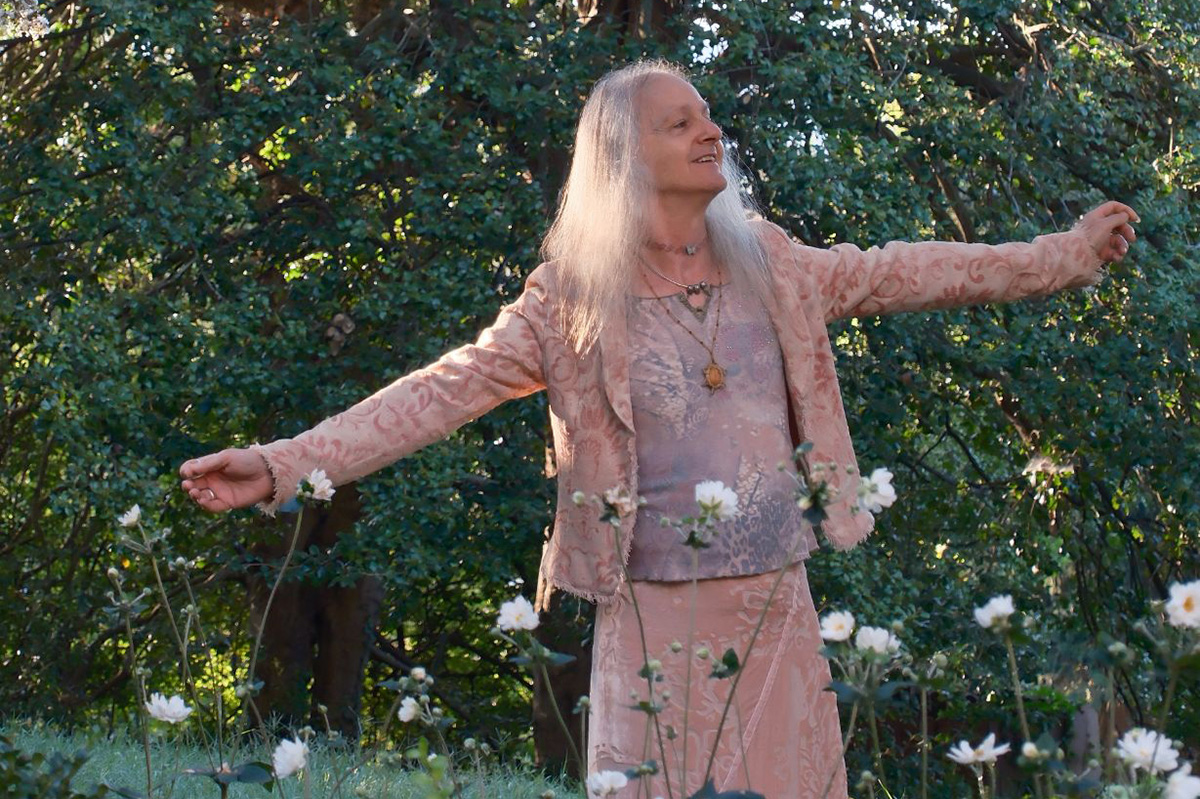
Gwen Andersen was putting up posters for her photography exhibition “Becoming Ourselves” in and around Takoma Park shortly following the death of Nex Benedict. “Everybody’s heart was heavy,” the lesbian photographer said, “and I’m waltzing around town putting up these posters.” At a bookstore, she asked the person working at the front desk if she could put up one of the posters. They immediately looked at it more closely because of the trans flag, and said yes.
“When they read it and saw that it was something positive, beautiful, happy, they started to cry,” Andersen said, and she instinctively asked if she could give them a hug. With permission, she walked around the counter and embraced them — and in many ways, herself — in a world where negativity and violence takes aim at and harms the LGBTQ community. It was a powerful moment, she admitted, because “the first person didn’t even see the pictures.”
“That’s when I realized.” she said, “just how the idea of this is making an impact.”
“Becoming Ourselves” is an exhibition of 26 photos featuring happy and joyful trans and nonbinary adults and children that has been displayed at six different spaces of worship and one gallery in Maryland and Virginia. From the United Universalist Congregation of Rockville (UCCR) to its eighth spot that opened at the Sandy Springs Meeting House on Oct. 1, the exhibition originally started after Andersen’s friend Marian Bowden connected her with Sandra Davis, then president-elect for the Women’s Caucus of Art. Davis, seeing that Andersen had something critical to say during a time of intense anti-trans violence, became her mentor.
Andersen decided to host the exhibition at the UCCR based on the suggestions of her friend Rev. Jill McCrory, an affirming pastor and justice advocate, who along with Stevie Neal had previously invited Andersen to help found Montgomery County (MoCo) Pride. McCrory recommended UCCR and Davis shared that the church had their own hanging system, but for Andersen, their eager acceptance of the show sealed the deal.
“They were so happy to have been asked,” Andersen said. “They weren’t just consenting. They were wildly enthusiastic about it. I could not have had a better first place to host this.”
Rev. Dr. Rebekah Savage echoed this affirmation. Andersen approached her in October 2023 and from the very beginning, Savage acknowledged, we knew it would be a vital gift to congregants. Showcasing queer and trans people in spaces of worship, as the portraits hung in the Sanctuary during Sunday morning worship for Transgender Day of Visibility is critical, Savage explained, and it “does more than challenge exclusion,” Savage said. “It proclaims to the world that LGBTQ+ lives are sacred, beautiful, and an essential expression of the divine creation.”
“This visibility is both healing and life-saving, especially right now: for trans youth and families who need to know that there are faith communities ready to celebrate with them fully,” Savage continued. “Becoming Ourselves,” she said, visualized the leadership of our trans loved ones and held space for joy and celebration during times of intense violence. It has, Savage said, “become a beacon of hope, within our congregation and beyond, witnessing to the power of love, equality, and justice as sacred commitments.”
But there was a time crunch — the exhibition would open in March 2024, so all photos had to be taken by December 2023 and to her surprise, there was great interest in being part of the project. She had taken some photos already, but when a friend’s child asked if their friends could be part of it, they realized they would need extra enforcements to get the photos taken and processed in time for printing, so she connected with Salgu Wissmath, a nonbinary photography who recently opened their own exhibition “Divine Identity,” and other photographers from Los Angeles, London, and Baltimore.
She also reached out to Natasha Nazareth from Gaithersburg and Elias Nikitchyuk who worked locally and contributed photos to the exhibition.
She also brought a child — Emery — on as the Formal Youth Adviser, recognizing that the show’s most important audience would be trans and nonbinary children. The resulting 26 photos of joyful trans and nonbinary adults and children were chosen by LGBTQ young people from across the United States who shared their selections through a virtual survey, and the group just made the tight deadline. Sadly, Stevie (a nickname for the beloved Petra Stephanie) Neal passed before the project was put on display, but their estate covered photography printing costs.
Soon, the UCCR was filled to the brim with photos of happy and joyful trans people. While UCCR has designated a room for its display, there were too many so the photos spilled out into the hallway, entryway, and anywhere else they would fit. It was only the first of many surprises.
She anticipated just displaying the show at the church in Rockville, but at the opening, McCrory shared that she would love for the show to be on display at Bethesda United Church of Christ (UCC) where she was then and is now working as an interim pastor, so it went to Bethesda UCC next, but that wasn’t its final stop as church members attended other parishes, they shared that they wanted the photos displayed in their own spaces of worship, and soon the photos had travelled to Christ the Servant Lutheran Church in Gaithersburg, Pilgrim Church in Wheaton, Hope United Church of Christ in Alexandria, PhotoWorks at Glen Echo, and finally, Third Space in Baltimore — its most recent stop at the recommendation of one of the photographers. A friend of Octavia Bloom, a Baltimore photographer, wanted the show to come to their hometown.
The exhibition at Third Space came to an end on Aug. 8, but as before, another church —this one Sandy Springs Meeting House — stepped up to host the show. The brick Sandy Springs Meeting House was originally constructed in 1817 and has stood ever since, making the Sandy Spring Meeting of the Religious Society of Friends one of the oldest Quaker Meetings in Maryland. Sandy Spring just put up their hanging system, on loan from a local artist, this month and aims to have the show on display to the public soon.
For some, the choice to display the exhibition in churches may seem like a strange or at least surprising one, but for Andersen, it was a meaningful choice. For Andersen, it helps counter the narrative of churches being places of hostility and part of campaigns against us. While recognizing the history of harm that churches and other religious institutions have caused through conversion therapy, exclusion, hate speech, and more, Andersen’s exhibition showcases how spaces of faith can also be key centers of LGBTQ advocacy and organizing. In fact, D.C. has a rich history of LGBTQ activism based out of and supported by faith communities.
“The fact that it was held in a church made so many people so happy. It also made many people cry because the church has been a place of hostility because the resistance, the hatred, of lesbians, gays, bis and transgender people has been biblical, both in terms of its size and in terms of its purported origin, and so having churches hold this exhibit was dearly important symbolically,” Andersen said.
Andersen shared that so many friends of hers who came to the show had not visited churches in decades because they (justifiably in some cases) viewed them as completely hostile locations. When they went to the exhibitions in the churches and were treated well, she said, she believes it was a healing experience, as it was for many trans and nonbinary children and adults and their parents who are facing a world of negative representation — either hostile from conservative, Christian nationalist groups or media portraying trans and nonbinary people as victims.
Andersen wanted to create a show that offered hope to trans and nonbinary kids, as It Gets Better did many years before. sharing videos and photos of happy and joyful LGBTQ adults as a way to share positivity and hopefully prevent suicide among LGBTQ children. It was more than timely than ever following Benedict’s death in February 2024. The previous day, Benedict was assaulted by other high school students in a girls’ restroom and later died by suicide.
“The purpose of the show was to counter all of the negativity because with Republicans running and now Trump in office there was so much animosity and hostility and people trying to pass these hateful laws that I knew this had to be having a negative impact on the mental health of trans kids.”
Andersen hopes that this exhibition enriches this rich tradition and sparks new conversations — and maybe even more happy tears — at Sandy Springs Meeting House this fall.
The show will be open most days between about 10 and 4 except for Mondays and Saturdays. Viewers are advised to call Sandy Springs Meeting House at 301-774-9792 first on weekdays. The show will continue until the end of December.
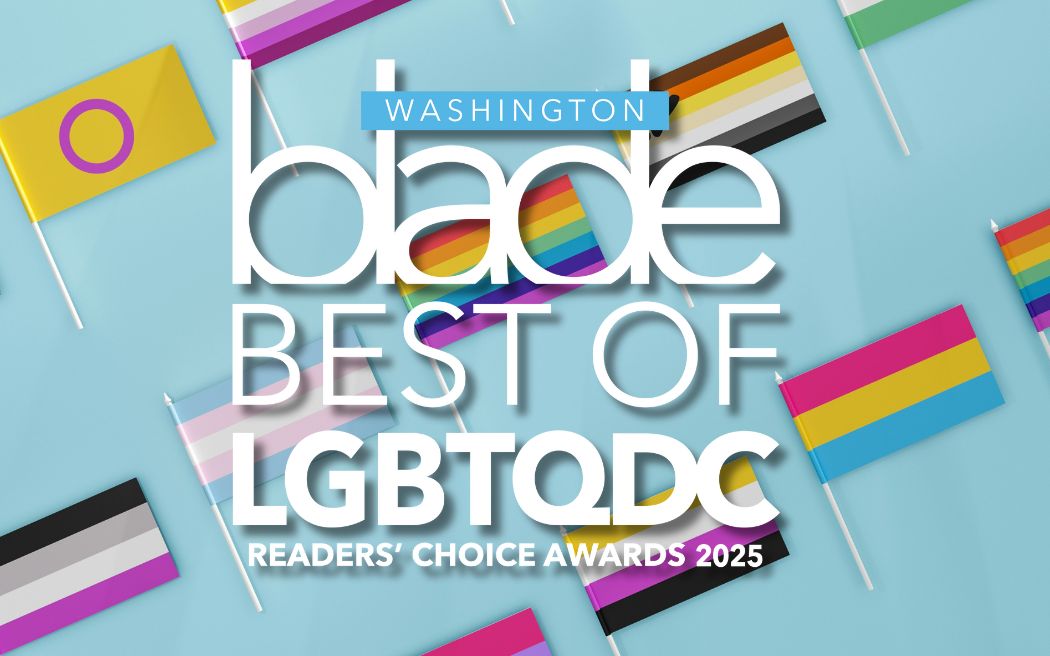
In a challenging year for D.C. and the local LGBTQ community, it’s important to remember that there are people, places, and organizations that work hard each day to support us. From activists to bartenders, politicians to drag queens, the Blade’s annual review of D.C.’s best is a welcome break from the news.
We need to support our queer-owned businesses now so please review the list and then patronize as many of them as you can. Our community has a long history of pulling together and dancing our way to better days, so you know what to do.
This was a big year for our annual friendly competition with more than 5,000 nominations in 75 categories and nearly 20,000 votes. The Blade’s Stephen Rutgers coordinated the voting, while Michael Key shot most of the photos. This year’s contributing writers are: Lou Chibbaro Jr., Michael K. Lavers, Joe Reberkenny, Kevin Naff, Tinashe Chingarande, Shreya Jyotishi, Evan Caplan, and Patrick Folliard.
This year’s Local Hero Award goes to Stonewall Sports, which is celebrating its 15th anniversary this month, in recognition of all its leaders do to promote unity in our community and to give back. Congratulations to all the winners and nominees.
Local Hero: Stonewall Sports
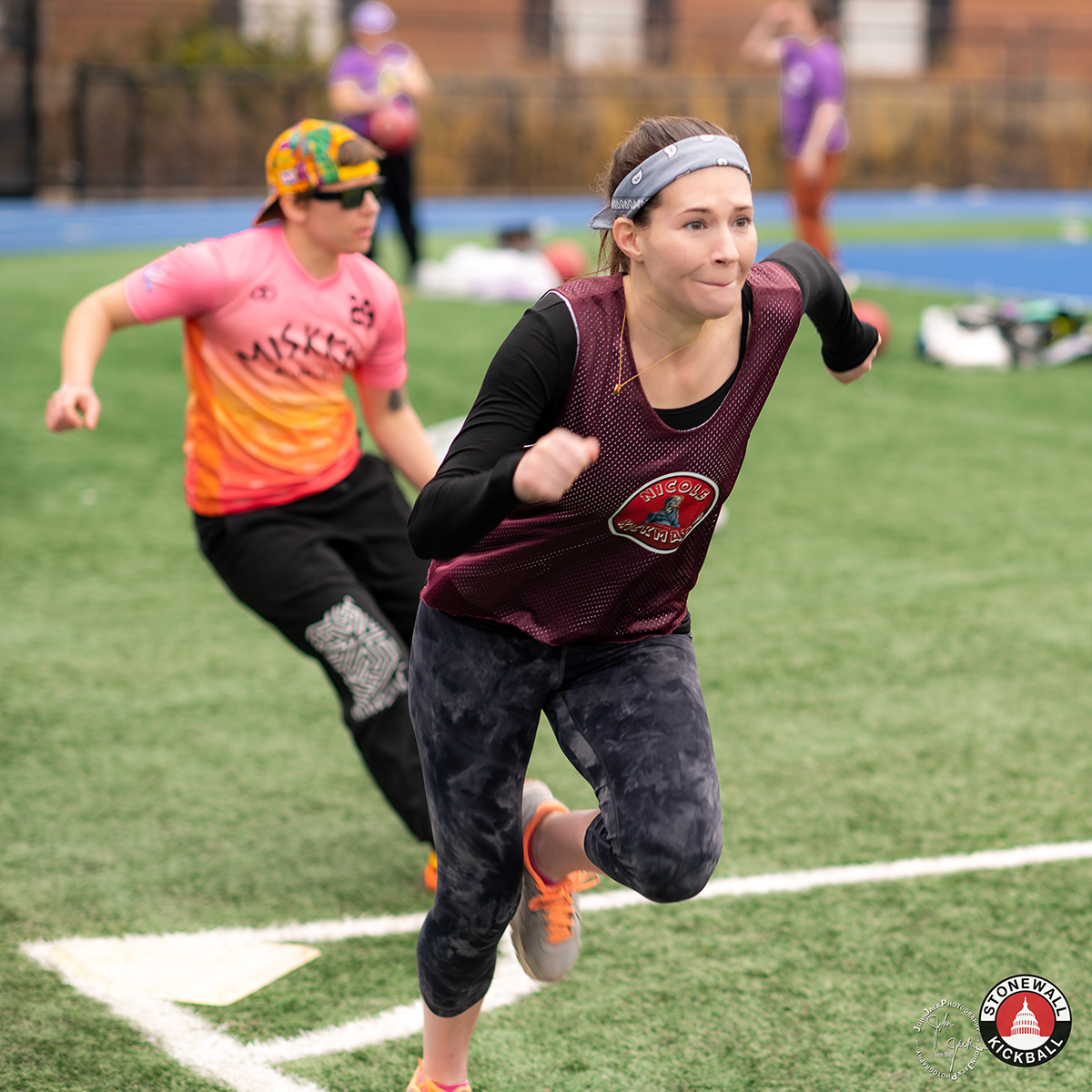
Sports, for a lot of LGBTQ people, stir up complicated feelings — for some, they bring back memories of uncomfortable gym classes or the sense of not quite fitting in with other teammates. Stonewall Sports, a community-based nonprofit for LGBTQ people and their allies, was created to push back against the idea that sports aren’t a welcoming space for queer people — and to build a place where the community can grow, thrive, and support one another.
Founded in D.C. in 2010 by Martin Espinoza, Mark Gustafson, Melvin Thomas, Scott Moorehead, and Scott Filter, Stonewall Sports began as a small kickball team. Fifteen years later, it has exploded into a national network with 27 chapters across the U.S., offering a wide range of sports in the DMV — including billiards, bocce, climbing, dodgeball, and kickball.
“We seek to be the premier social sports organization for LGBTQIA+ individuals in the DMV and nationwide, really focusing on building community that lasts,” Stonewall President Stu Wales told the Blade. “This is an opportunity for people to feel comfortable in their own identity in organized sports… to participate fully without having to worry about who they are.”
Stonewall Sports’s mission is clear: sports for all. At a time when trans athletes are being singled out and excluded from participation, the organization continues to provide inclusive, affirming spaces for every member of the LGBTQ community. “We make sure everyone feels welcome — from how we recruit to how we build teams — so no one ever has to question if they belong here,” Wales said.
But building community isn’t the only thing Stonewall Sports has achieved. Over the past 15 years, the organization has raised hundreds of thousands of dollars for local charities.
“We’re as much a philanthropic organization as we are a social sports organization,” Wales said. “There was one year where we raised over $100,000 just in a single year, and that really demonstrated our commitment to one of our key pillars — that was part of what we were founded on and what sets us apart from other local social sports organizations in the DMV.”
From donating money to Whitman-Walker Health, DC Black Pride, The Boys and Girls Club of Greater Washington, and House with a Heart senior pet sanctuary — just to name a few — the organization continues to reinvest in the community in a wide array of ways.
Whether it’s on the National Mall on Sundays for kickball or in Logan Circle on Wednesdays for bocce, Stonewall Sports continues to bring people together — on and off the field — proving that in D.C., sports can be competitive, impactful, and community-driven.
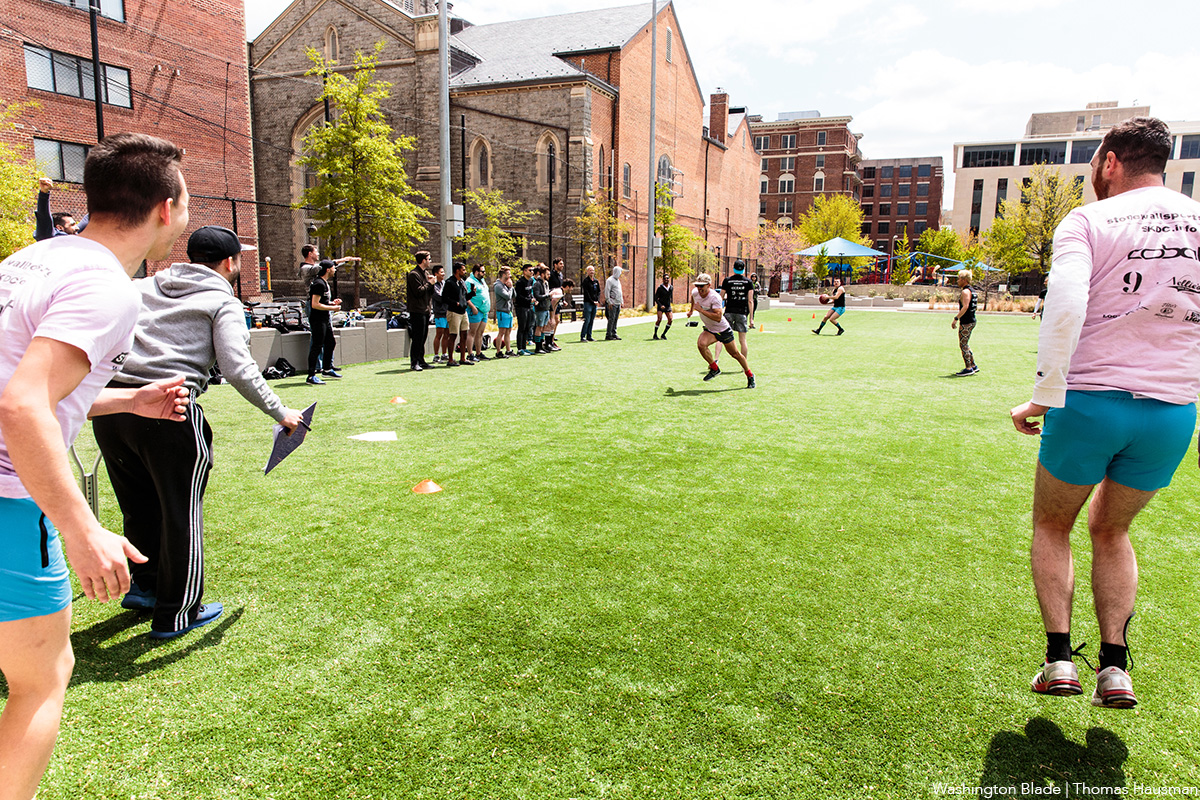
NIGHTLIFE
Best Drag Queen: Cake Pop!
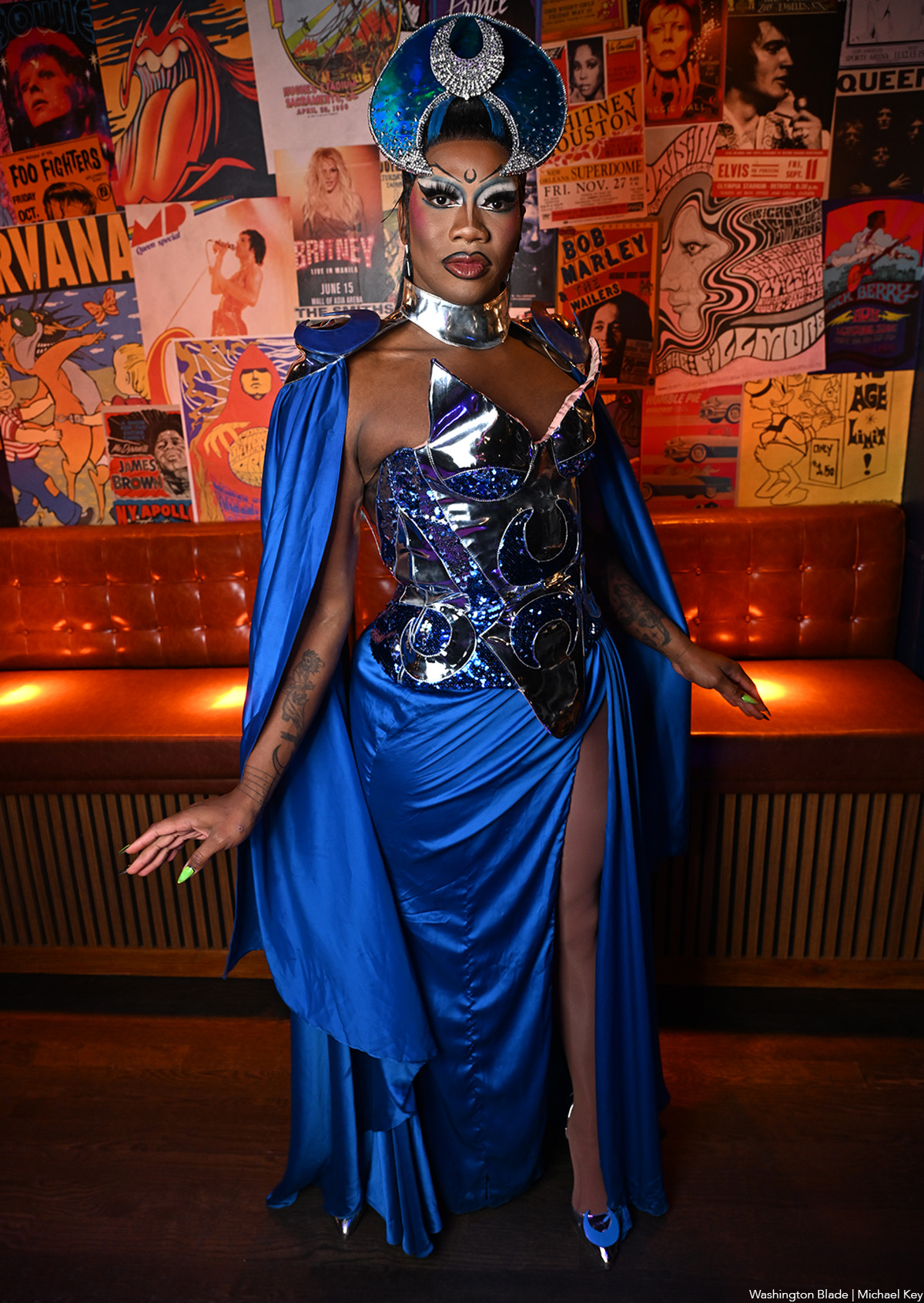
From her larger-than-life costumes to her beat-thumping DJ sets and growing “Pop” drag family, Cake Pop has quickly become a fixture in D.C.’s drag scene. The Chicago-born, D.C.-based queen is constantly on the move — whether she’s hosting a show, spinning a set, or running her “Pop-Up” bar that took over the top floor of Pitchers earlier this year. After first winning Best Drag Queen in 2022, Cake Pop is once again taking the crown — proving she’s a true D.C. favorite.
Editor’s Choice: Sasha Adams Sanchez
Best Drag King: King Molasses
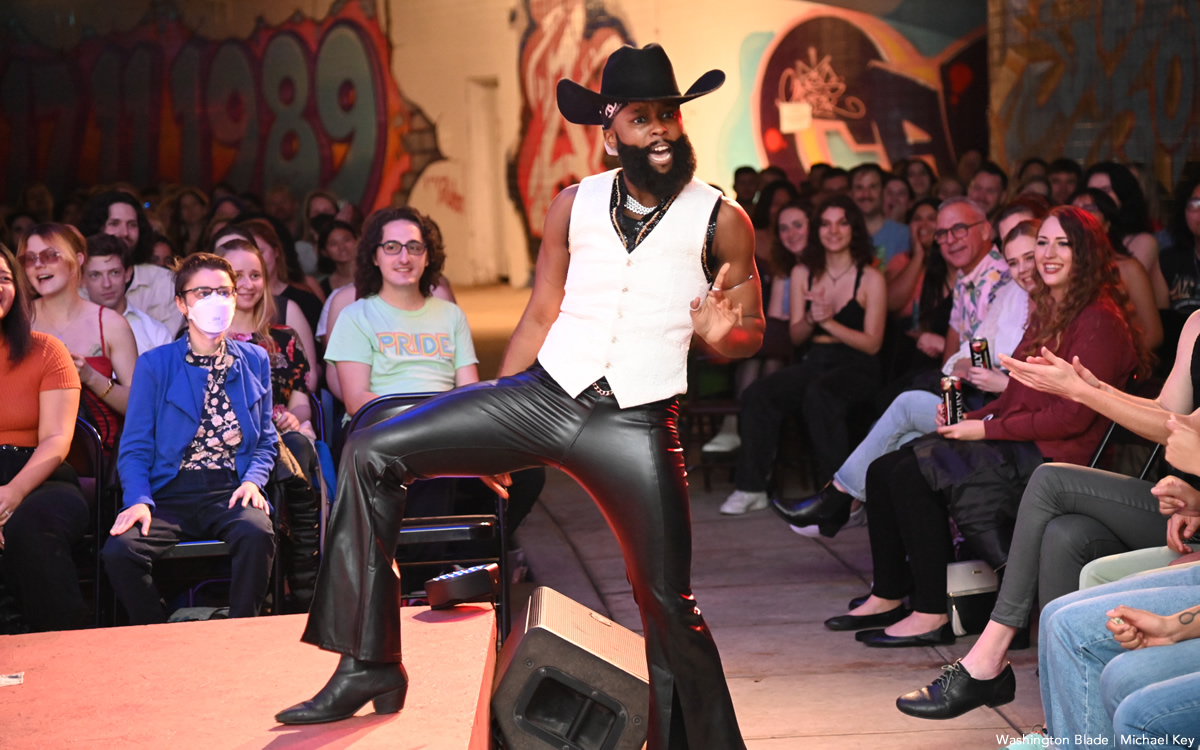
For the fourth year in a row, the freshly crowned “King of Drag” has taken home another honor. King Molasses knows how to command a stage — delivering performances that get the crowd cheering for the sticky-sweet king. With more than 37,000 Instagram followers, Molasses showcases a bold mix of color, confidence, and masculine flair. Fresh off winning the first-ever drag king reality TV competition in July, this is one king D.C. is more than happy to bow down to.
Editor’s Choice: Dylan Dickherson
Best Transgender Performer: Gigi Paris Couture
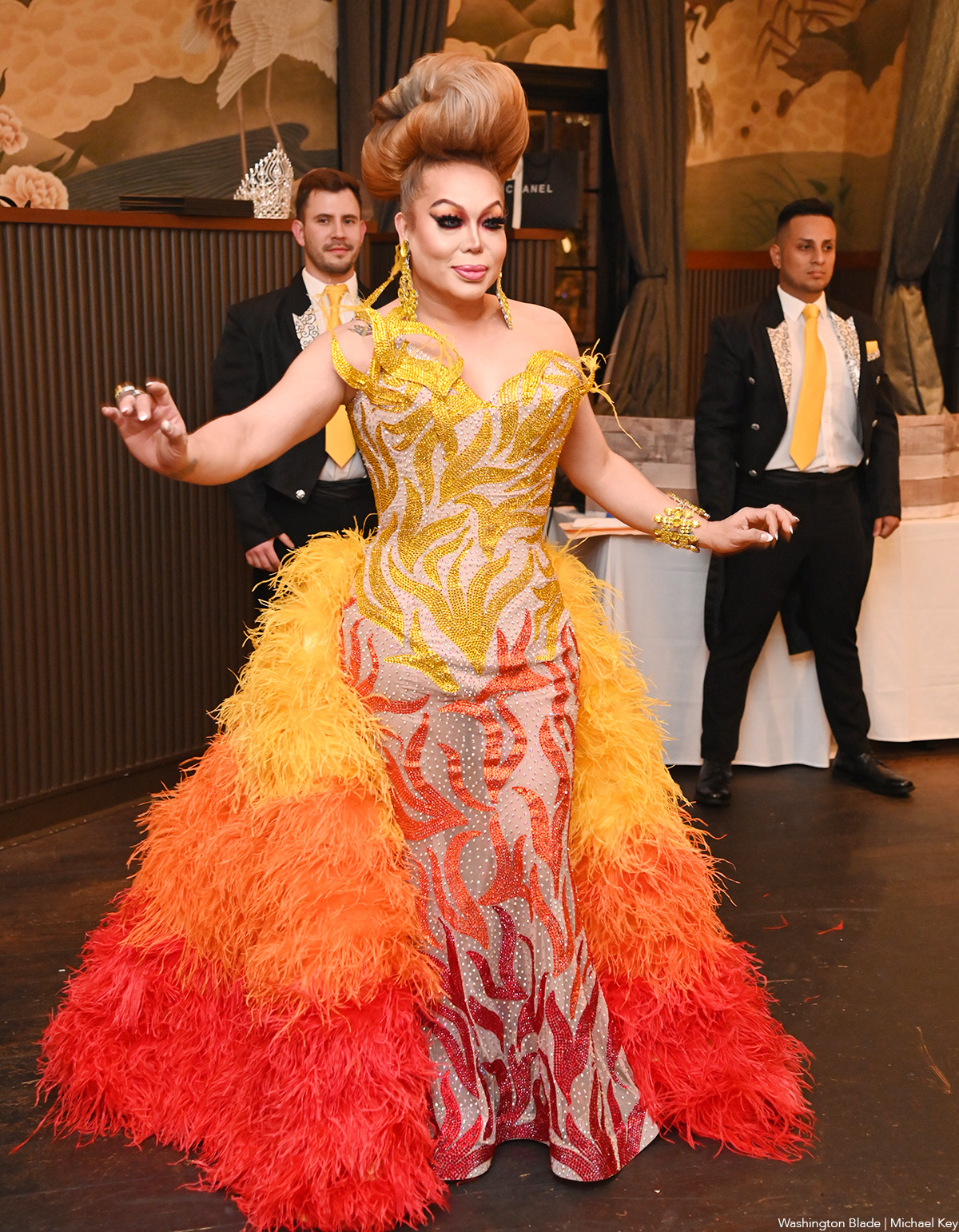
Hailing from Arlington across the Potomac, Gigi Paris Couture is a celebrated name in DMV drag and beyond. With a career spanning decades, Miss Couture has dazzled audiences nationwide with her stunning performances and sexy, show-stopping costumes. Her trophy case is as impressive as her talent: most recently winning Miss Perry’s in 2023, along with Miss Freddie’s 2015, Miss Diamond International 2007, Miss Tennessee Continental 2003, Miss New York, New York Continental 2002, and Miss Luchos Continental 2001. With so many crowns, it’s a wonder she has room for them all.
Editor’s Choice: Brooke N Hymen
Best Drag Show: Daddy Issues at Kiki
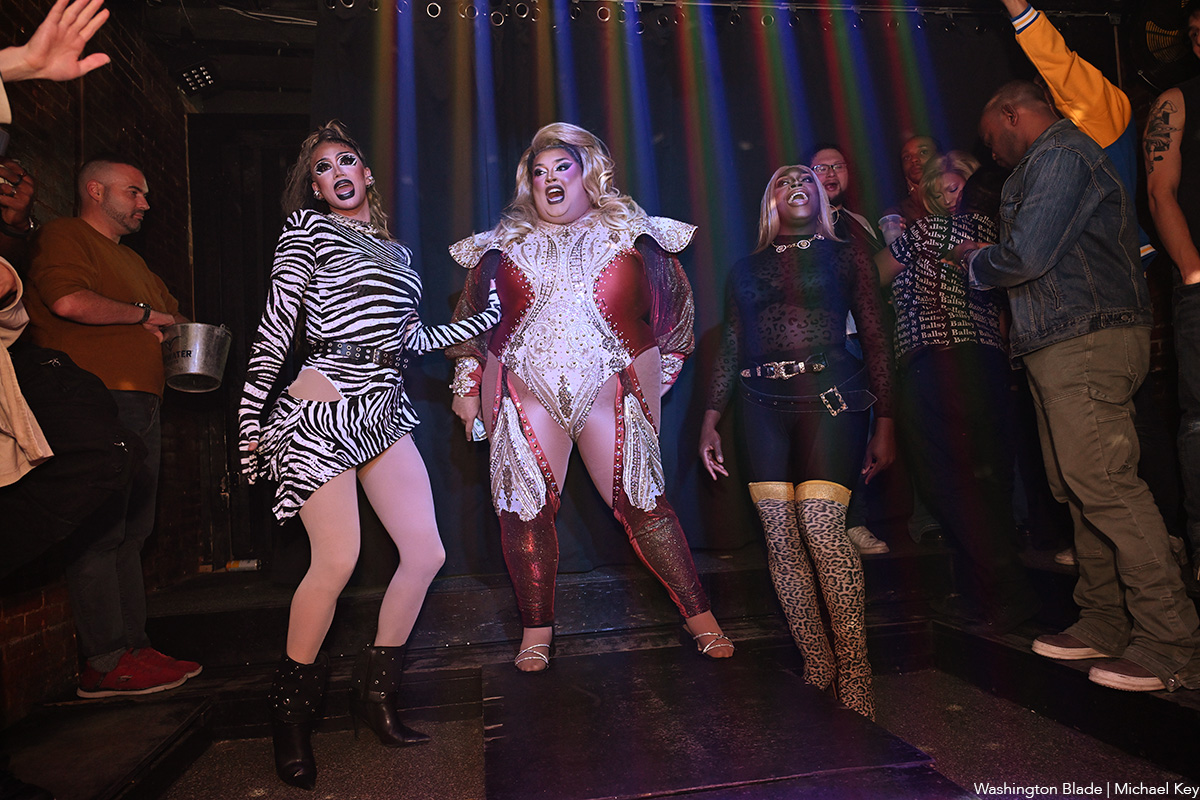
915 U St., N.W.
Who says drag is only for the weekends? Not Daddy Issues! Each Wednesday at 10 p.m., some of the DMV’s best drag performers take over the second-floor stage at Kiki with incredible performances, games, and a vibe that “might help you catch a daddy!” Hosted by Evry Pleasure and featuring a rotating cast including Cake Pop, Druex Sidora, Indiana Bones, and Crimsyn, this midweek extravaganza proves that drag in D.C. never takes a day off.
Editor’s Choice: Freddie’s Follies
Best LGBTQ Party: Flower Factory
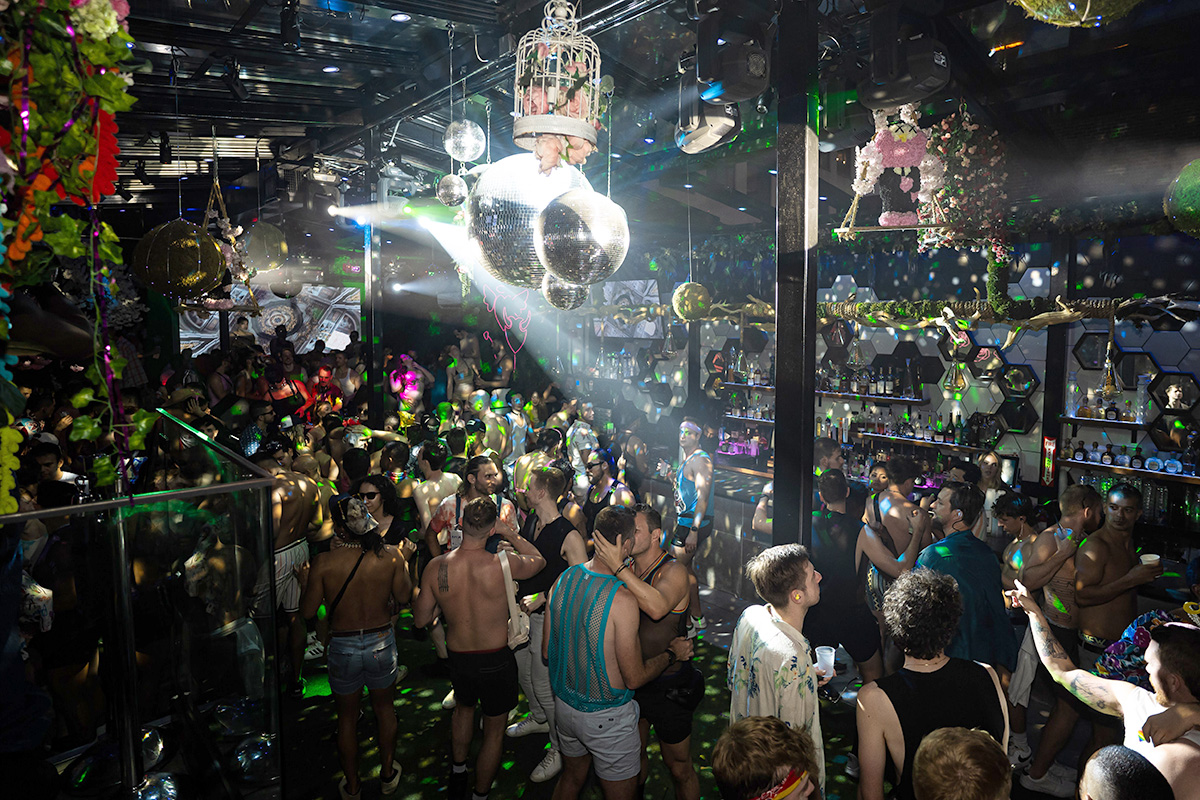
1223 Connecticut Ave., N.W.
Since its debut in 2021, this queer DJ collective dance party has become a staple of D.C.’s LGBTQ nightlife. Held once a month at Zebbie’s Garden in Dupont Circle, Flower Factory turns the neighborhood into a cross between a daytime rave, Studio 54, and your favorite gay bar. If it’s the second Sunday of the month and you spot fabulously dressed revelers radiating color, florals, and queer joy, odds are they’re heading to Flower. The collective has grown immensely over the past few years, spinning sets at Somos in Mexico City, venues across Provincetown and New York City, and even hosting a special WorldPride party in 2025 — and it shows no signs of slowing down.
Editor’s Choice: Grizzly Bear Happy Hour
Best Bartender: Stephen Sides, Little Gay Pub
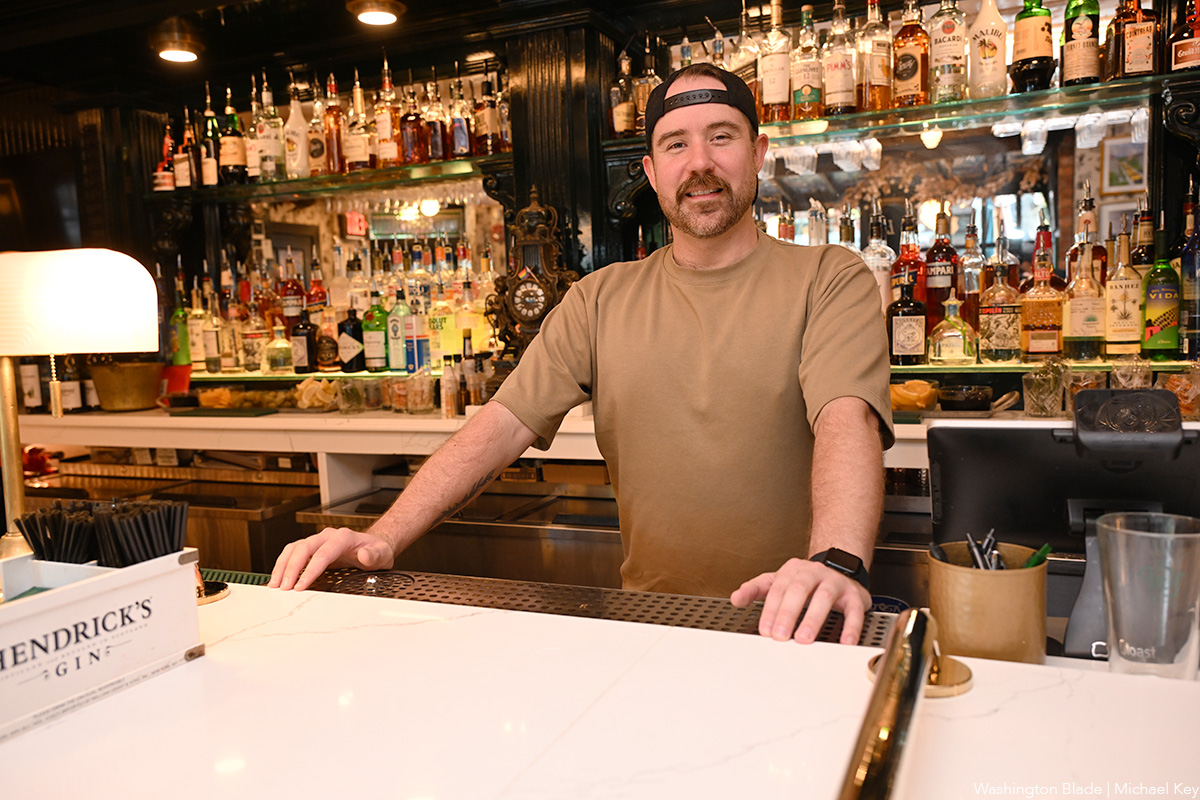
1100 P St., N.W.
With his warm smile and handsome facial hair, Stephen Sides is one face you definitely want to see on the other side of the bar. Sides has an extensive history in the food service industry, and an even longer list of friends who request LGP’s signature espresso martini poured by him. Whether it’s a busy Friday night or a quiet weekday, Stephen makes every guest feel like part of the little gay family.
Editor’s Choice: Ben Oursler, Annie’s
Best DJ: DJ Honey
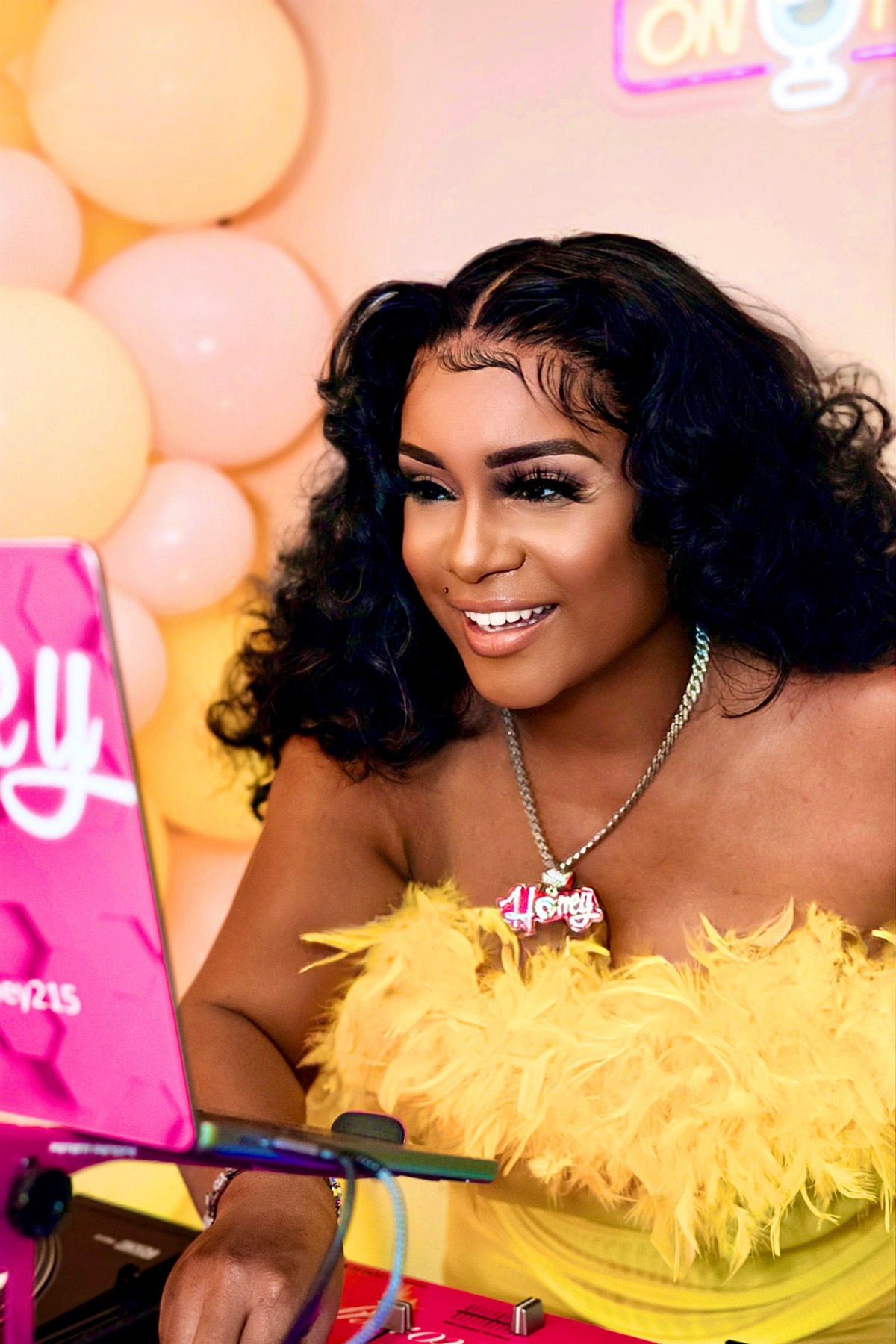
Honey Johnson, better known as DJ Honey, continues to break barriers as a Black lesbian DJ, spinning at venues across the country. From BET events to World AIDS Day celebrations and even the Library of Congress, her resume proves that success comes from hard work. Her unique style gives a platform to underrepresented musical talent in Thurst Lounge and beyond, making every set unforgettable.
Editor’s Choice: DJ Matt Bailer
Best Neighborhood Bar: As You Are Bar
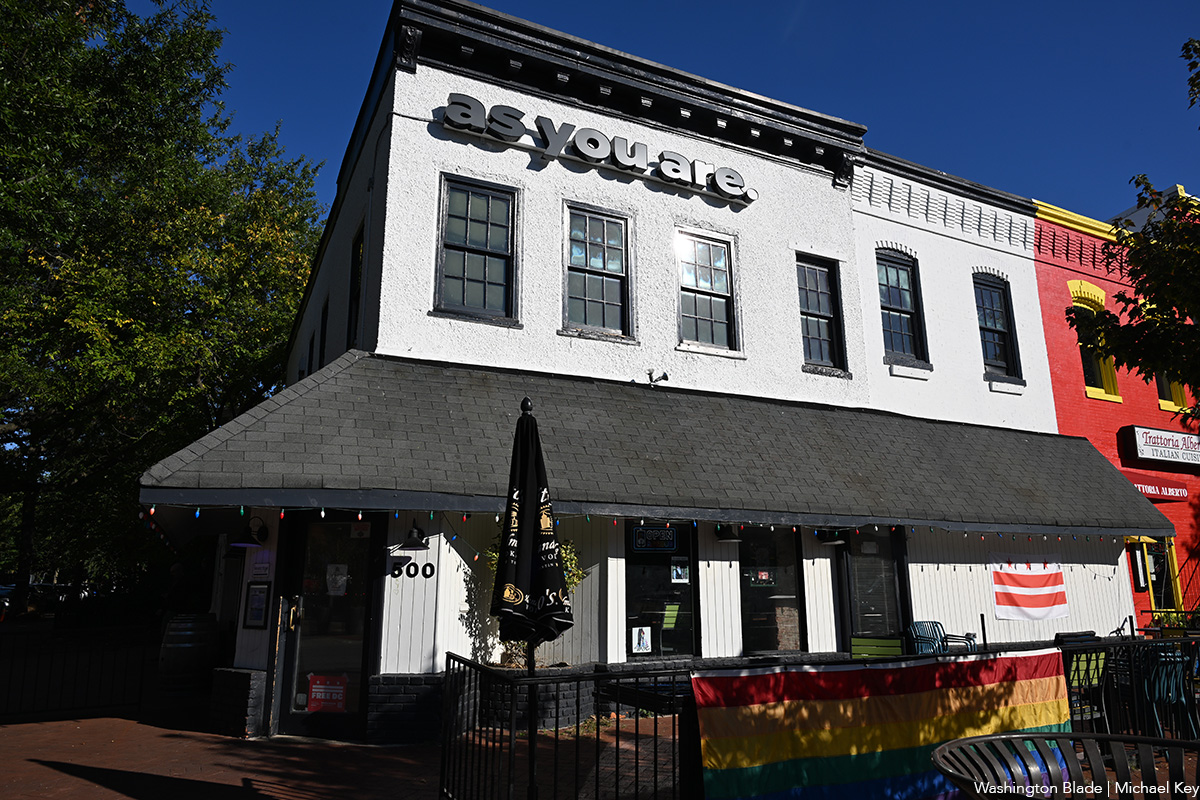
500 8th St., S.E.
As You Are doesn’t just see itself as a café turned nightclub — it proudly brands itself as home. Owners Jo McDaniel and Rach “Coach” Pike are no strangers to LGBTQ nightlife, both having worked at A League of Her Own in Adams Morgan. This dynamic duo built their own “haven for queer expression and connection,” with a special spotlight on Sapphic events and DJs, a scene that can be hard to find elsewhere. Whether you’re coming for coffee, cocktails, or a night of dancing, As You Are makes everyone feel welcome.
Editor’s Choice: Number Nine
Best Outdoor Drinking: Trade
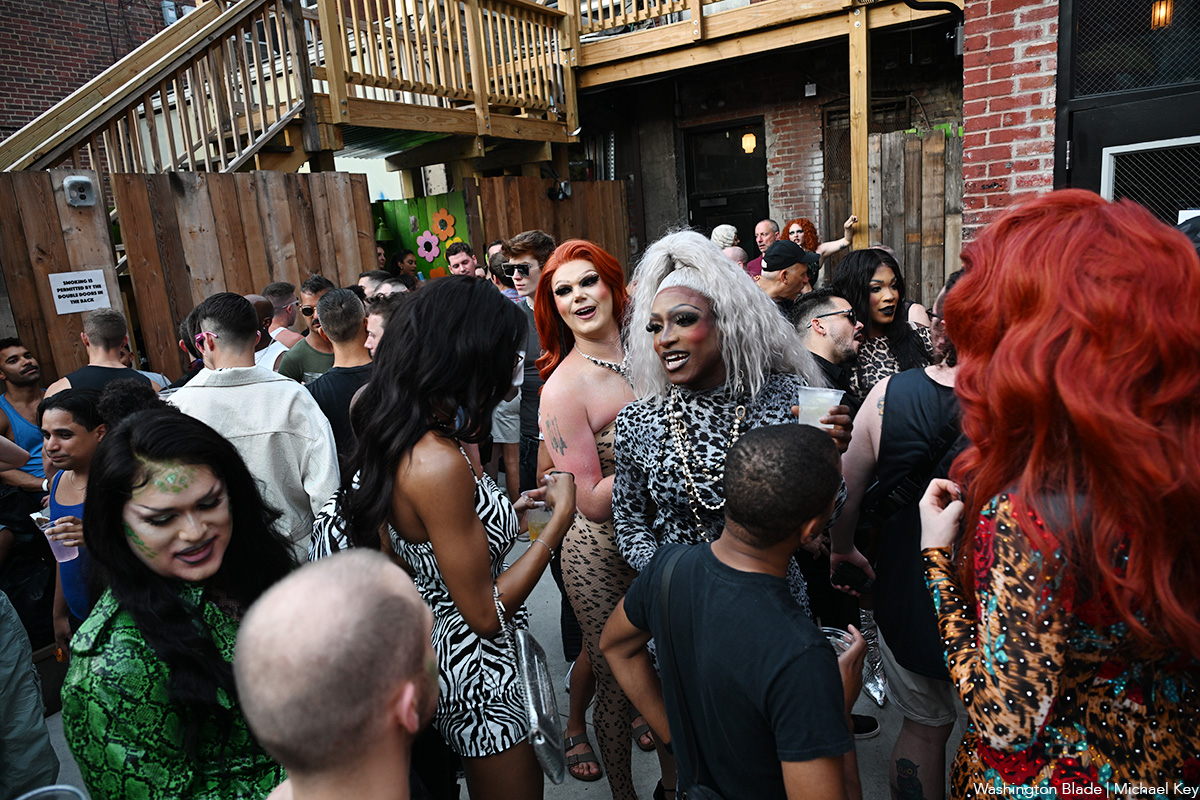
1410 14th St., N.W.
Edging out LGP, which won last year, Trade snagged the top spot this year likely due to its sizeable patio, newly expanded during Pride season. With echoes of erstwhile Town patio, Trade’s outdoor space brings the gay community together to enjoy its XL happy hour around the brightly lit tree that stands at attention in the center of the space.
Editor’s Choice: Little Gay Pub
Best Happy Hour Presented by ABSOLUT: Annie’s Paramount Steakhouse
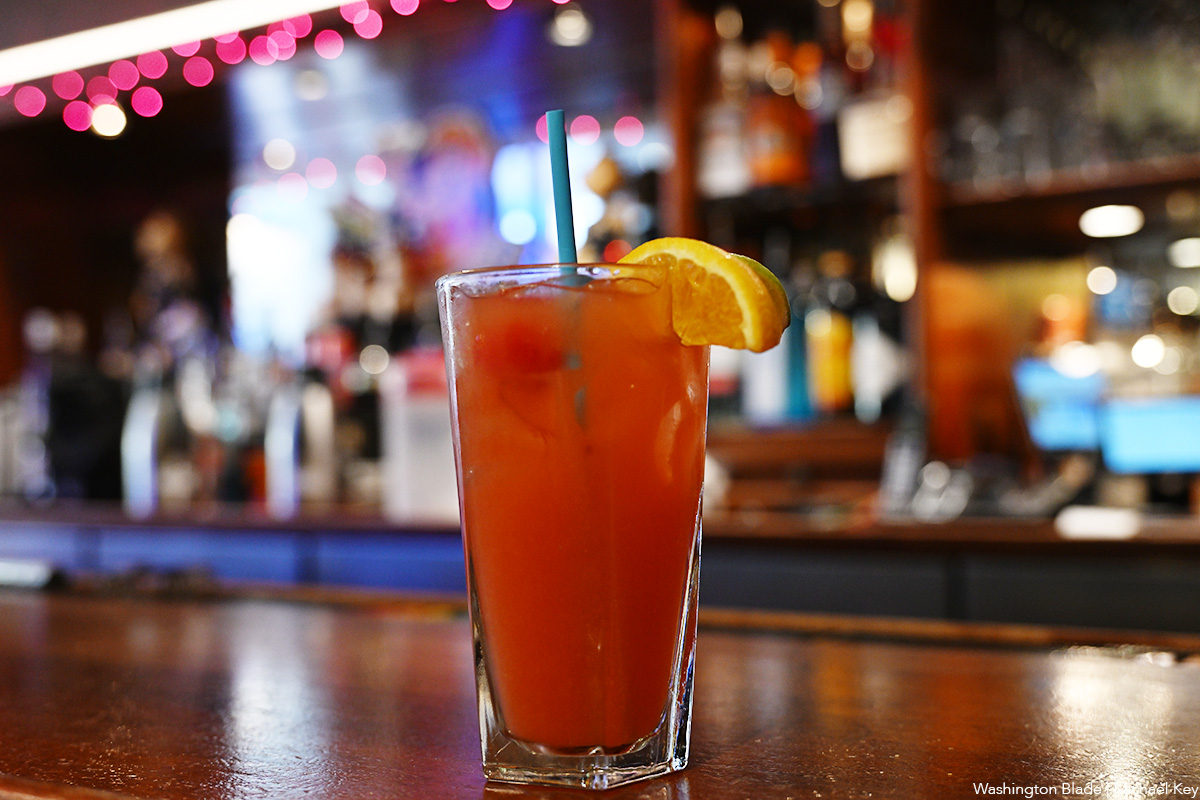
1607 17th St., N.W.
Annie’s Paramount Steakhouse has been a Dupont Circle fixture for more than 75 years. George Katinas opened the restaurant in 1948 on the corner of 17th and Church streets, N.W., where JR.’s is now located. He later renamed it in honor of his sister Annie. Annie’s Paramount Steakhouse, which is now located on 17th Street between Corcoran and R streets, continues to welcome locals and visitors alike with its signature cocktails, food, and camaraderie.
Editor’s Choice: Crush
Best LGBTQ Bar: Crush
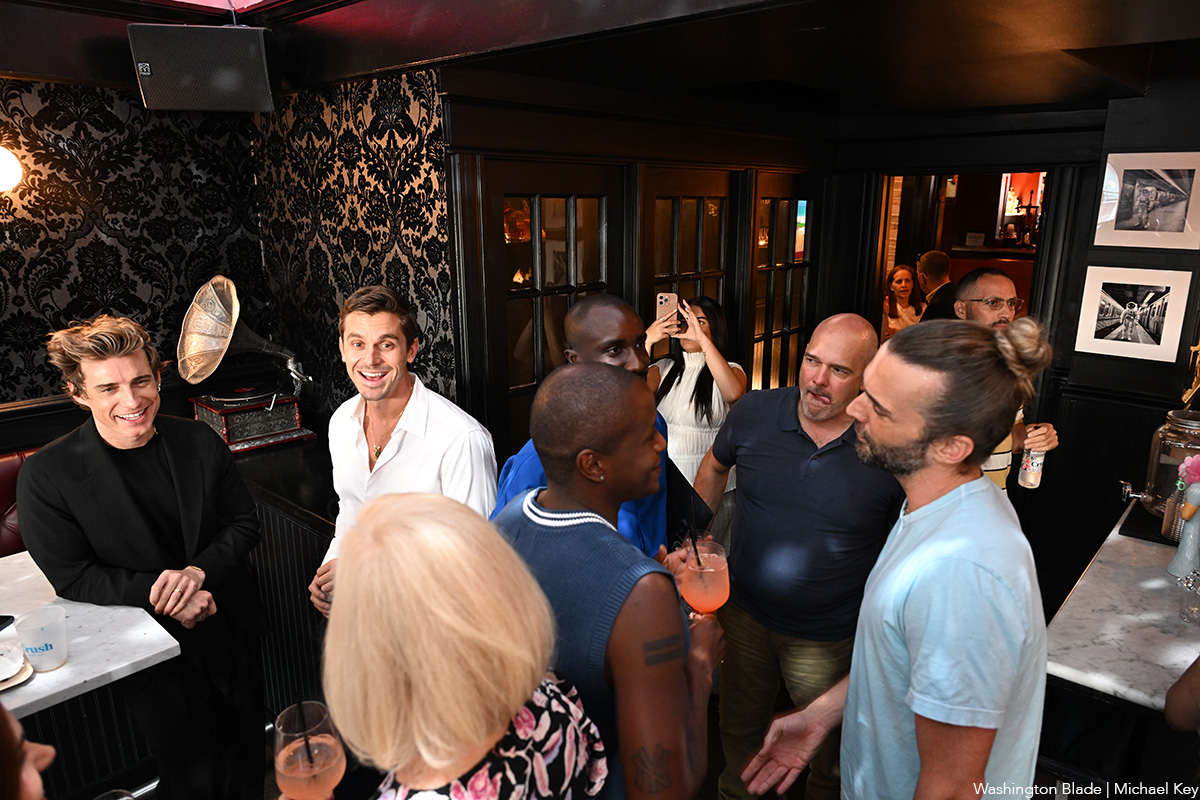
2007 14th St., N.W.
Crush Dance Bar, which opened in the busy U Street corridor in 2023, is one of the city’s most popular LGBTQ establishments.
Its walls — adorned with posters of Lady Gaga, Kylie Mingoue, Janet Jackson, and myriad other pop divas — provide the perfect backdrop for revelers who are looking to let loose. Owners Stephen Rutgers and Mark Rutstein have succeeded in making Crush the city’s “all-inclusive nightlife destination on 14th Street.”
Editor’s Choice: Trade
Best LGBTQ-Friendly Bar: Dacha Beer Garden

Multiple locations
Dacha, a longstanding popular outdoor watering hole, is not officially a gay bar. Yet, you will consistently see groups of D.C.’s LGBTQ community hanging out at Dacha Beer Garden drinking boots of beer and enjoying a selection off the German-style beer garden’s extensive menu. With its giant murals of gay icons Elizabeth Taylor at the Shaw location and Jackie Onassis in the Navy Yard spot, it’s easy to see why gay, straight, and truly everyone can find something to enjoy.
Editor’s Choice: Jane Jane
Best LGBTQ Bar Outside the District: Freddie’s Beach Bar
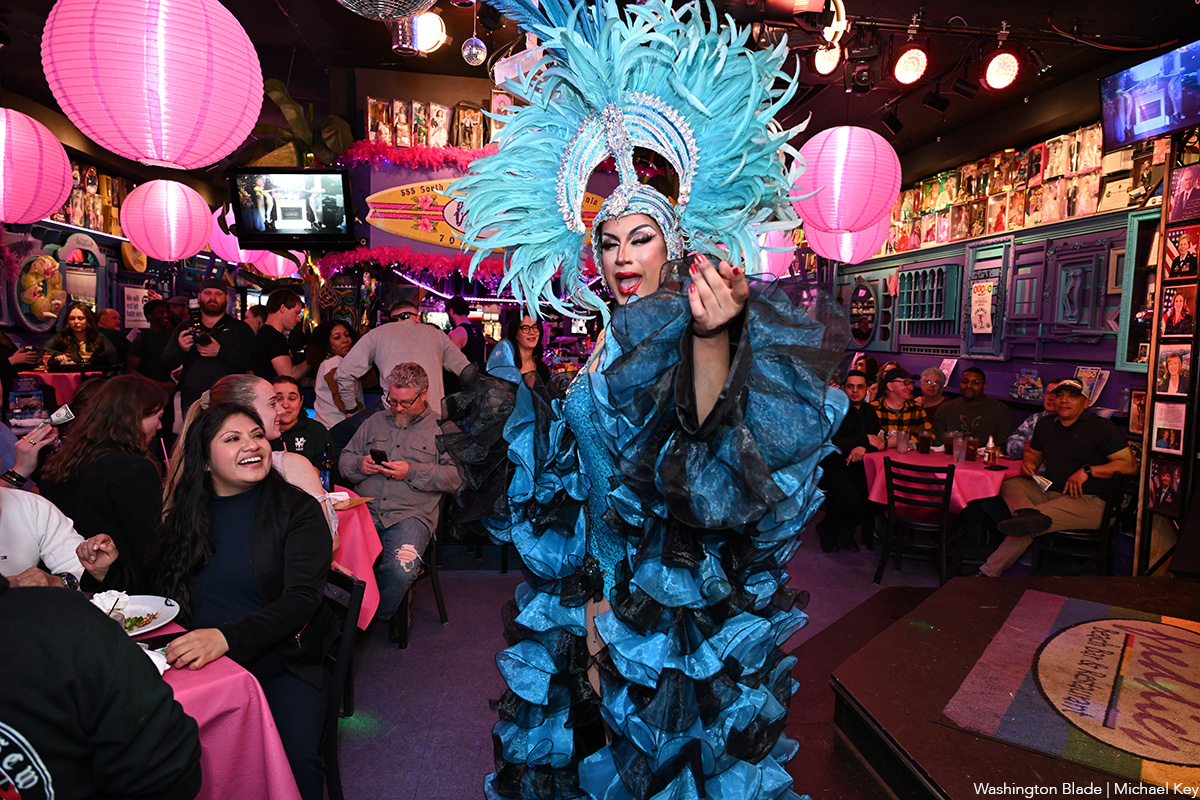
555 23rd St. S
Arlington, Va.
The DMV LGBTQ bar scene discussion must mention longstanding Freddie’s Beach Bar in National Landing, Arlington. Freddie’s has been a staple in the area since it opened more than 20 years ago. Serving classic cocktails and a full menu, the bar is also known for its infamous Sunday Buffet Brunch, and daily events including drag shows, bingo, and karaoke, it makes sense that Washington Blade readers have voted Freddie’s the best “LGBTQ+ but straight friendly restaurant and bar” outside of the District for several years.
Editor’s Choice: Baltimore Eagle
ARTS & ENTERTAINMENT
Best Theater Presented by Wild Side Media: Arena Stage
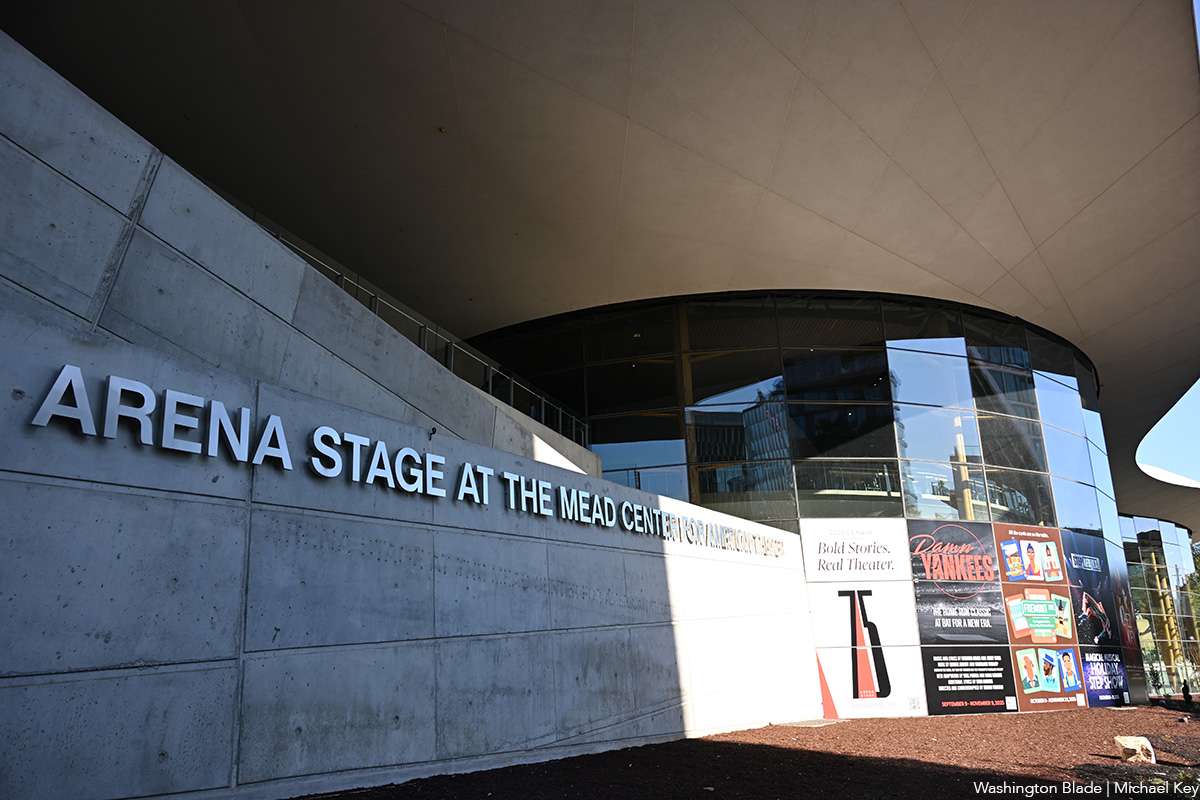
1101 6th St., S.W.
Famous for its in-the-round productions, the Tony Award-winning Arena Stage located just steps from the Wharf, is the country’s largest theater committed to presenting American plays and playwrights.
Arena is currently presenting the Broadway bound revival of “Damn Yankees” (through Nov. 9) directed by Sergio Trujillo and starring Rob McClure as Applegate, Ana Villafañe as Lola, and Jordan Donica as Joe. It’s a fresh take on a beloved classic.
Editor’s Choice: Studio Theatre
Best Theater Production: “Kiss of the Spider Woman,” Gala Hispanic Theatre
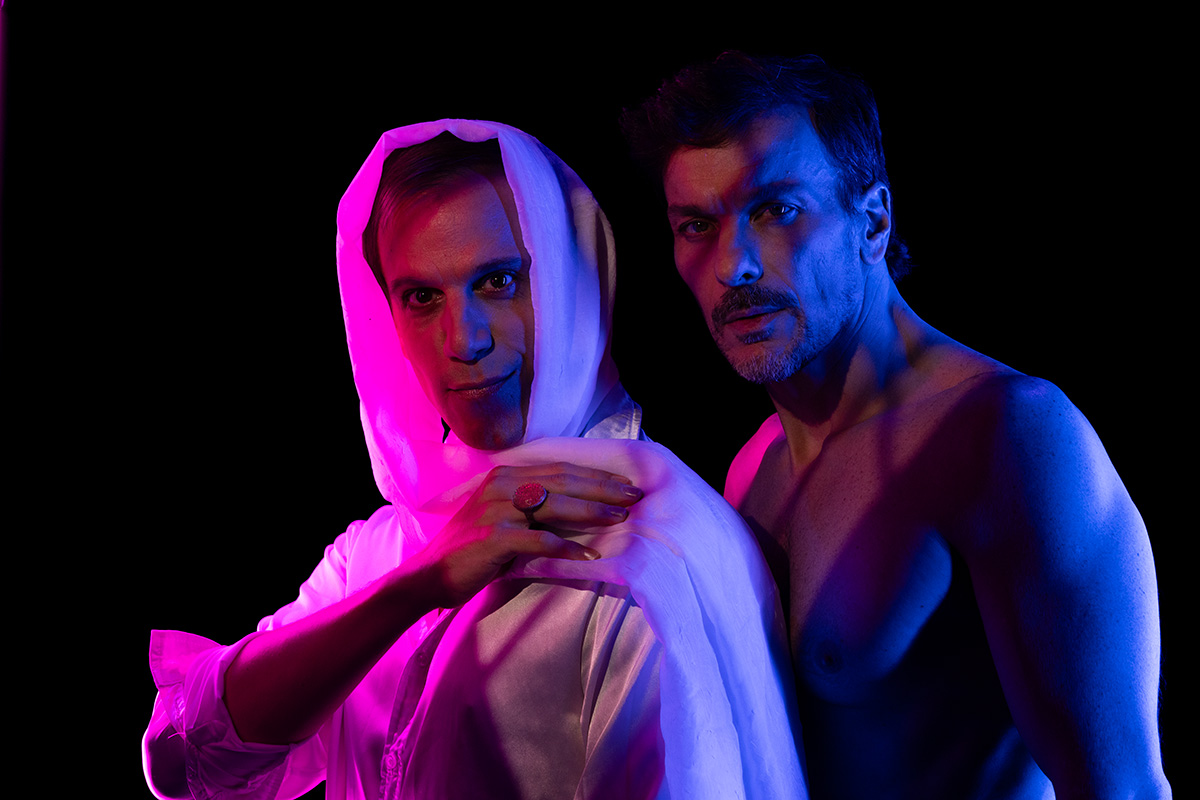
3333 14th St., N.W.
In September, GALA Hispanic Theatre in Columbia Heights kicked off its 50th anniversary season with an exciting revival production of out playwright Manuel Puig’s “Kiss of the Spider Woman”
First a novel published in 1976 (the same year GALA was founded), then a play, followed by a Broadway musical and films, “Kiss of the Spider Woman” is a stunningly enduring work. GALA’s production was brought to life by a triad of queer talent including director José Luis Arellano, and appealing actors Martín Ruiz and Rodrigo Pedreira
Editor’s Choice: “Summer, 1976,” Studio Theatre
Best Live Music in D.C. Presented by Wild Side Media: 9:30 Club

815 V St., N.W.
No stranger to the Blade’s “Best of,” the 9:30 club has been a favorite of DMV audiences in search of live entertainment since 1980. Over the years, the key destination venue has hosted a wide range of artists ranging from the Red Hot Chili Peppers to Alison Moyet to Tony Bennett, making it one of the most respected live music spots in America.
Editor’s Choice: The Anthem
Best Live Music Outside of D.C.: Wolf Trap

1551 Trap Rd.
Vienna, Va.
In nearby Northern Virginia, Wolf Trap National Park for the Performing Arts boasts a sprawling green campus with a major theater as well as smaller other venues all with pitch perfect acoustics.
Arvind Manocha, the out president and CEO of Northern Virginia’s Wolf Trap Foundation for the Performing Arts for more than a decade, loves his job. And for him, part of that means promoting diversity and queer inclusion.
As part of its impactful lineup, Wolf Trap presents “Out & About,” an annual two-day outdoor music festival spotlighting LGBTQ artists and vocal allies. With the new musical event, Manocha and his programming team bring together entertainment and visibility by featuring big queer names like headliner Brandi Carlisle.
Editor’s Choice: Merriweather Post Pavilion
Best Local Artist Presented by Wild Side Media: Miss Grace David
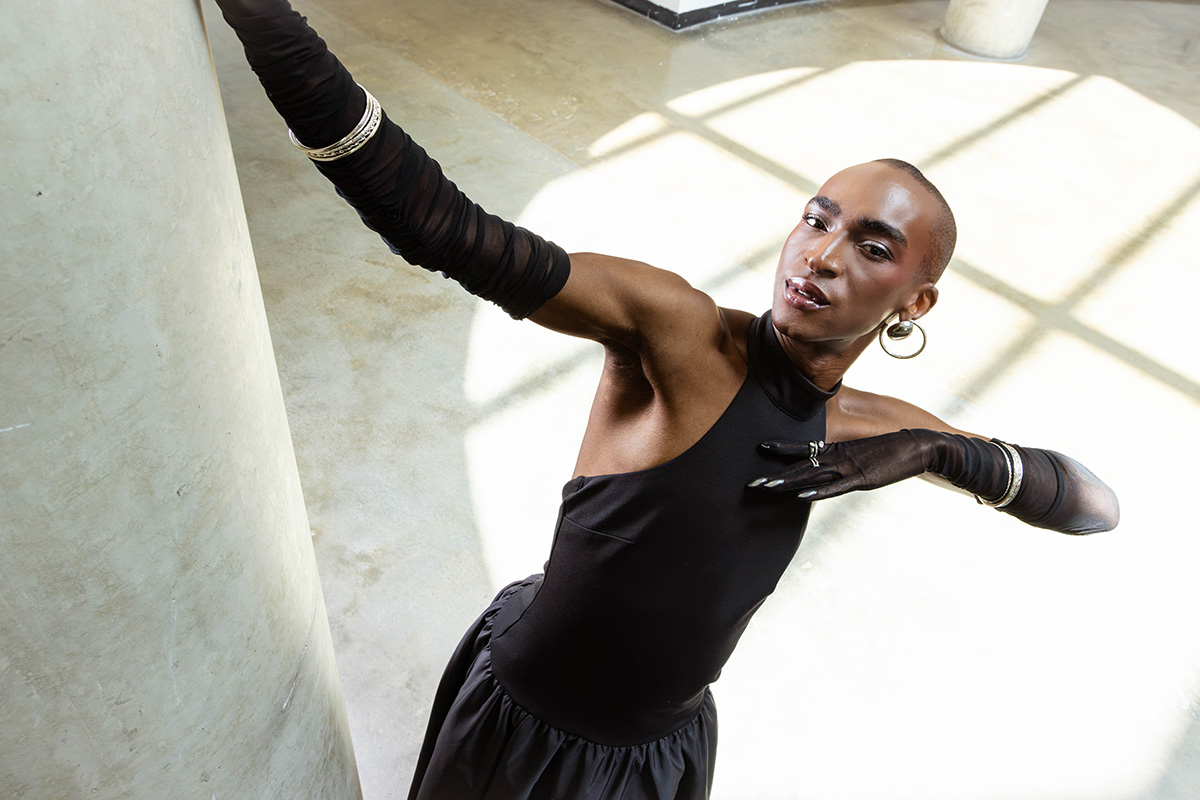
Miss Grace David is a Black, queer, and non-binary femme performance and textile artist based in the D.C. area. By using character performance, textile production, world-making, and storytelling, their work connects human emotion and personal experience with visual abstraction.
Editor’s Choice: Diane D’Costa
Best Museum: National Museum of African American History & Culture
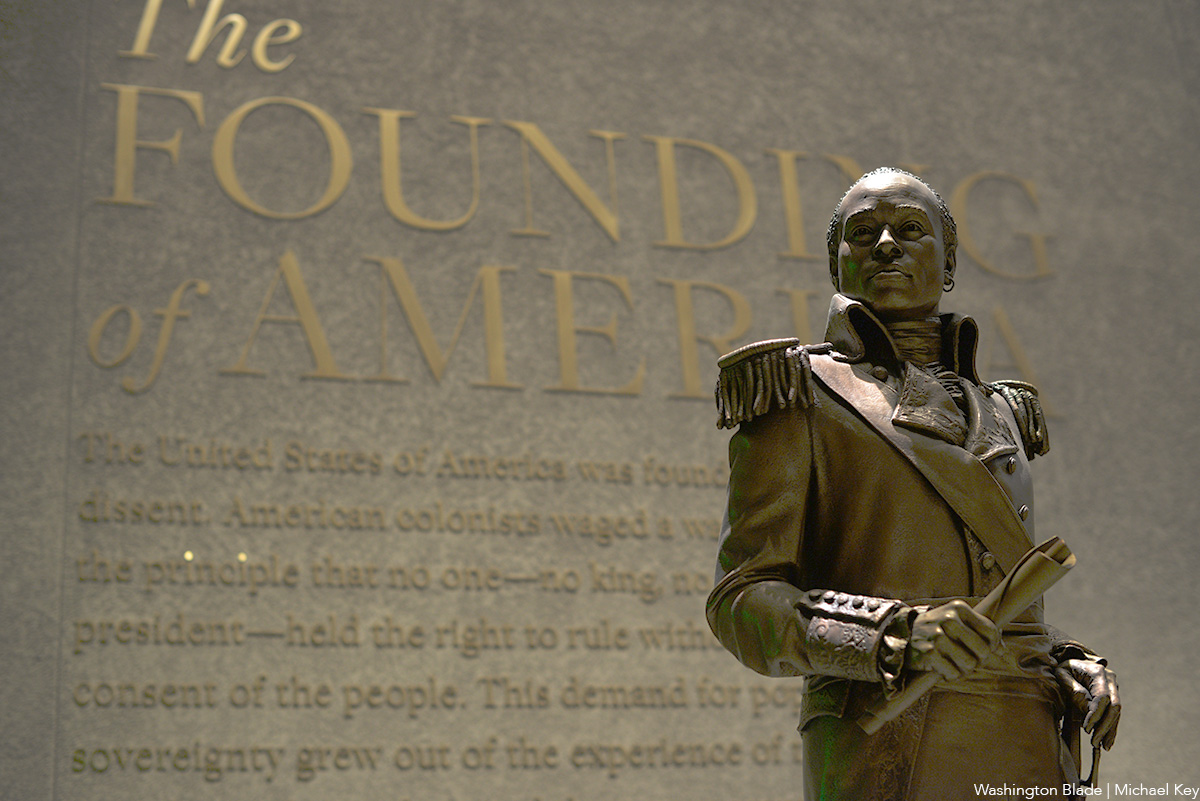
1400 Constitution Ave., N.W.
Since opening its doors in 2016, the museum has engaged millions of people worldwide, sharing the unvarnished truth about African-American experiences, advances, and contributions. The anti-DEI crusade of the Trump administration serves as a reminder of the important role museums play in telling the full American story. The museum remains closed due to the federal government shutdown.
Editor’s Choice: National Gallery of Art
Best Professional Sports Team: Washington Spirit
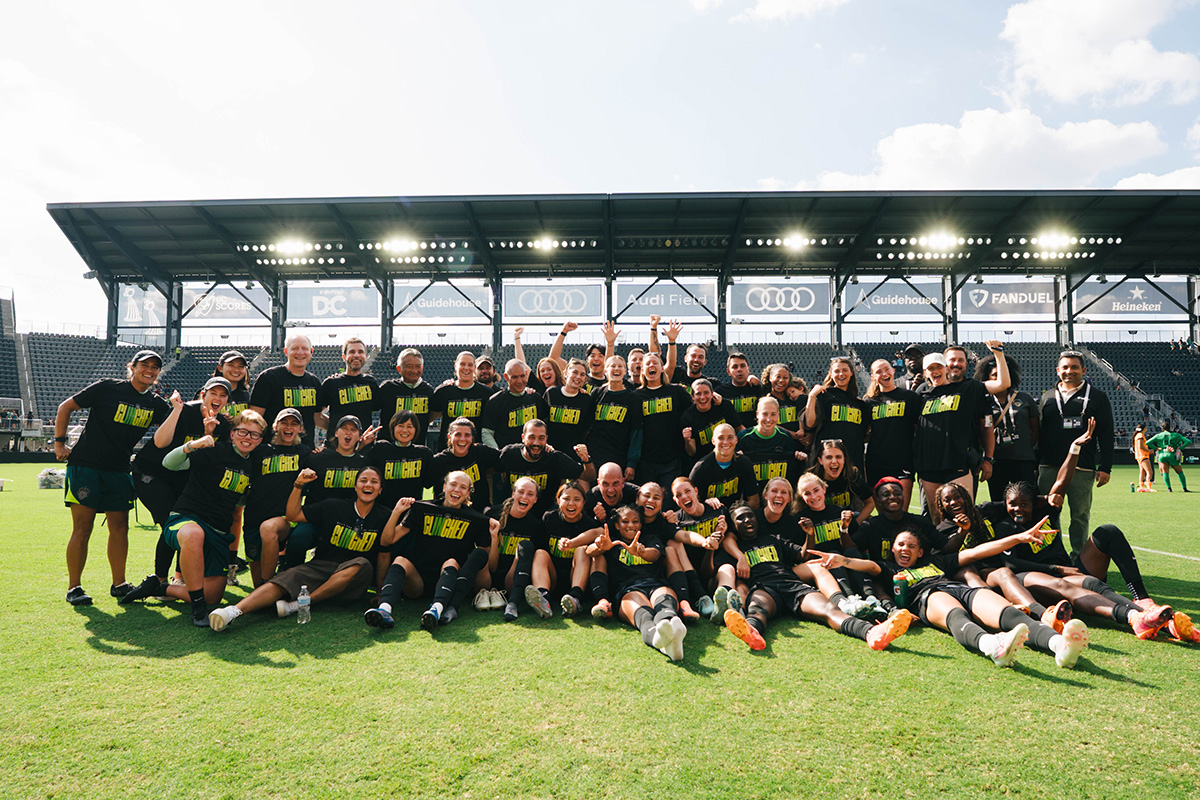
For the second year in a row, Blade readers voted the Washington Spirit, D.C.’s premier professional women’s soccer team, as the best local professional sports team. The highly regarded team last year was ranked second in the National Women’s Sports League.
It has consistently supported local LGBTQ groups like SMYAL, and its many LGBTQ fans believe Washington Spirit understands the importance of playing hard and supporting LGBTQ representation in sports.
Editor’s Choice: Washington Commanders
COMMUNITY & BUSINESS
Most Committed Activist: Preston Mitchum
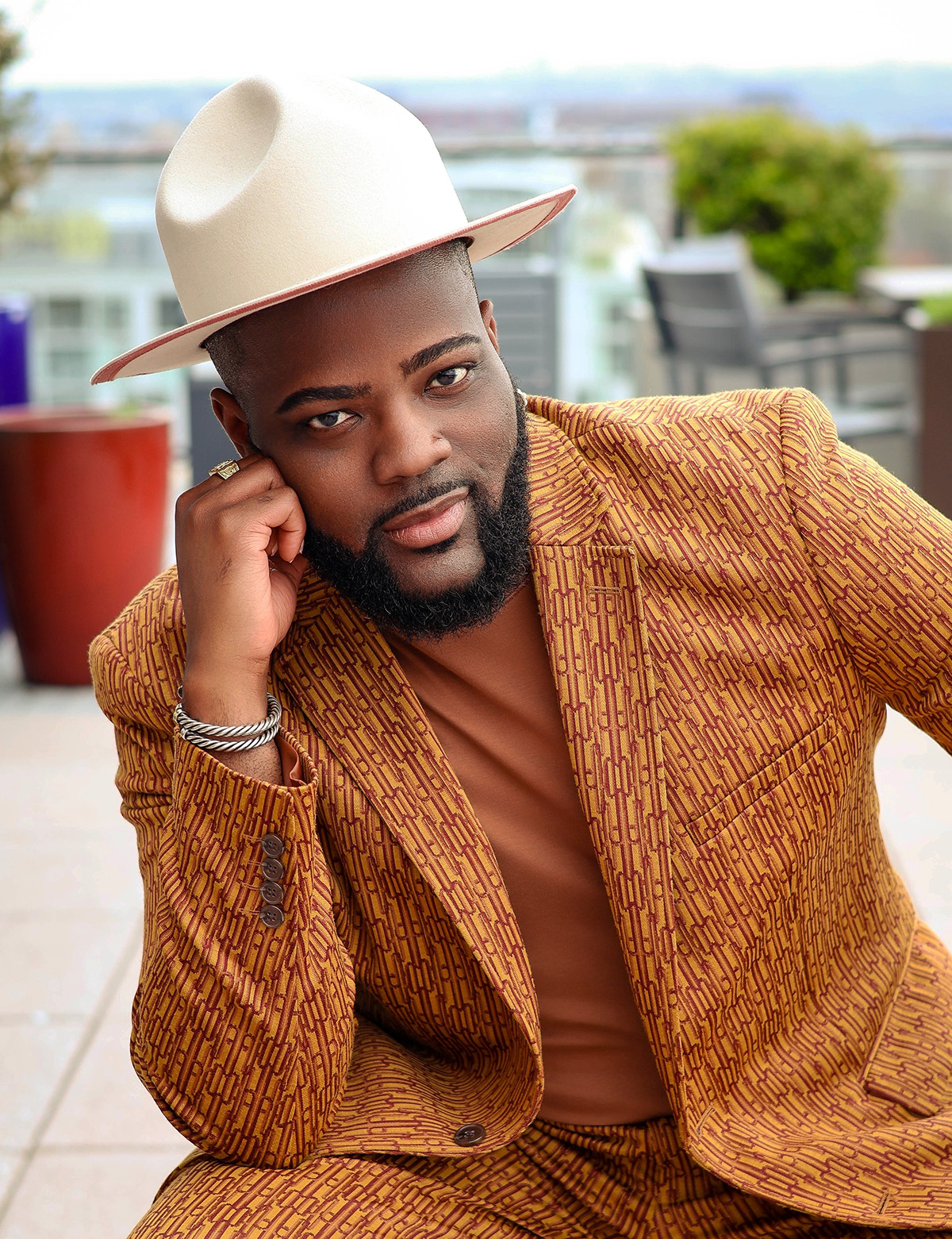
An acclaimed D.C. attorney and digital creator, Preston Mitchum is described online by people who know him as a Black, queer advocate and activist, with a focus on the power of Black people, young people, and queer, trans, and non-binary people
With more than a decade of legal and policy experience, he has worked for and or provided support for more organizations and causes you can shake a stick at in the areas of racial and gender justice, LGBTQ liberation, and reproductive health, rights, and justice policies.
As a respected public speaker, he has appeared on TV news programs and was quoted in news publications, including the Washington Post, on the wide range of issues on which he has worked. “A force to be reckoned with, Preston Mitchum isn’t just a name, it’s a symbol of commitment, passion, and the embodiment of change,” one of his admirers states in an online posting.
Editor’s Choice: Jordyn White
Best LGBTQ Public Official: George Garcia
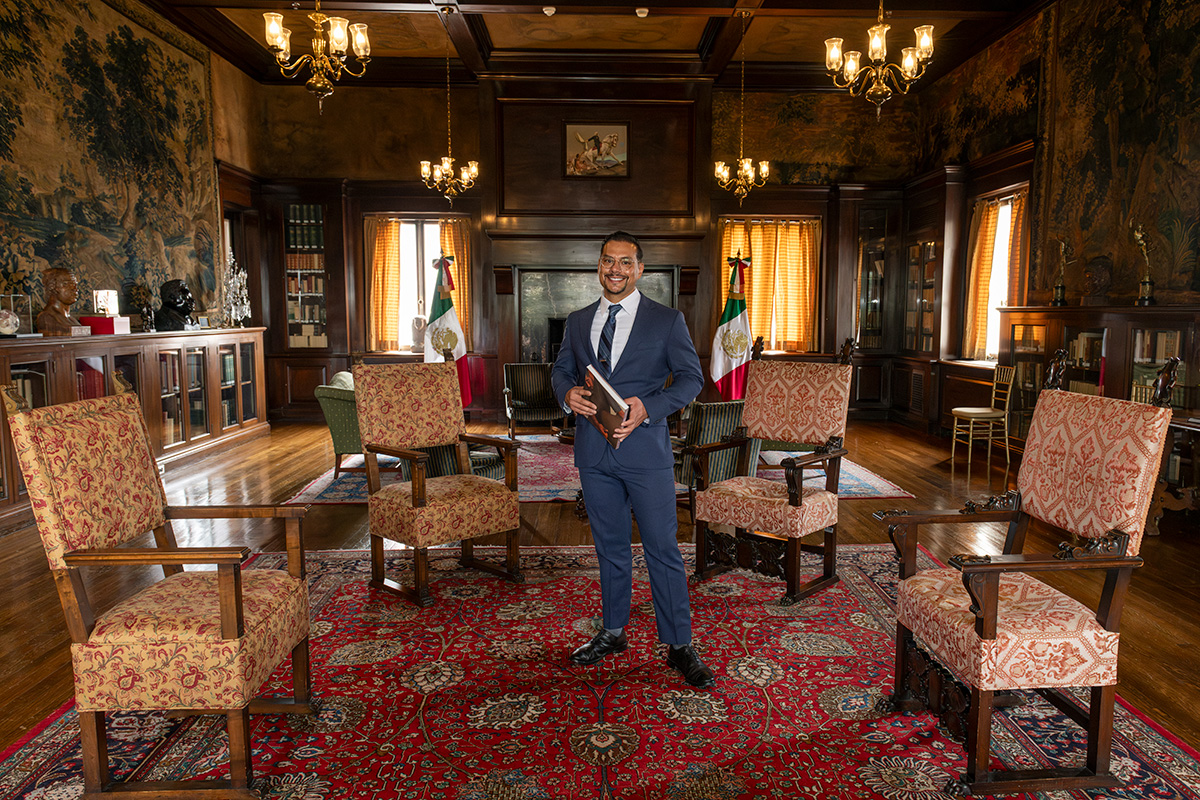
D.C. Mayor’s Office on Volunteerism and Partnership
George Garcia served as Director of Operations for the Mayor’s Office of LGBTQ Affairs since September 2024, and prior to that he served as the LGBTQ Affairs office’s Grants and Partnerships Specialist since February 2023. In early October of this year, he began a new job as Deputy Director of Operations and Finance for the Mayor’s Office of Volunteerism and Partnerships, which is also known as Serve DC.
He is described in an LGBTQ Affairs Office statement as a dedicated community leader with more than 14 years of experience advocating for underserved populations, especially within the LGBTQ community. He holds a master’s degree in public administration from D.C.’s American University, where he honed his expertise in public policy, strategic planning, and leadership. While working in the LGBTQ Affairs Office, he played a lead role in the city’s support for WorldPride events this year, “coordinating 10 community coalitions and managing a $5 million budget.”
Editor’s Choice: Council member Zachary Parker
Best Community Ally: Robert White
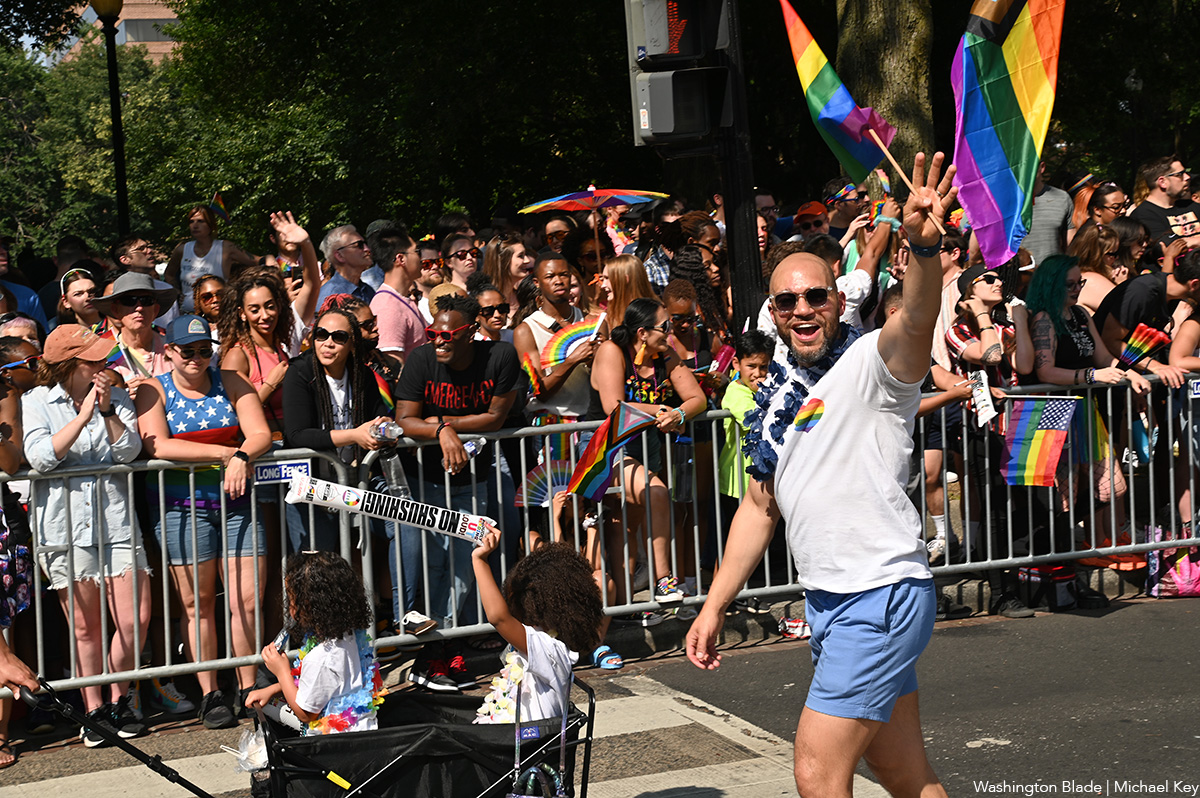
An At-Large member of the D.C. City Council since 2016, Robert White has emerged as one of the Council’s strongest supporters and allies of the LGBTQ community. He currently chairs the Council’s Committee on Housing. And in September he announced he is a candidate for the D.C. congressional delegate seat for which he is running in the city’s June 2026 Democratic primary.
A self-described proud fifth generation Washingtonian and an attorney, he has served prior to being elected to the Council as the city’s first Director of Community Outreach for the D.C. Office of the Attorney General. He currently also serves as an adjunct professor at the Georgetown University Law Center.
Editor’s Choice: Erin Palmer
Best Medical Provider: Whitman-Walker Health

1201 Sycamore St., S.E.
Whitman-Walker Health was founded in 1973 as the Gay Men’s VD Clinic as a volunteer operation in a church basement before incorporating as the Whitman-Walker Clinic in 1978. It was named after poet Walt Whitman and Dr. Mary Edwards Walker, a physician who worked in D.C. during the Civil War before becoming a women’s rights activist.
It became a leading first responder to the HIV/AIDS epidemic in the 1980s, providing medical care and support for gay men and others impacted by the epidemic. It has since expanded into a comprehensive community health center with services that include primary care, dental, mental health, and legal aid, with a continued focus on serving the LGBTQ community in the D.C. metro area.
Editor’s Choice: AIDS Healthcare Foundation
Best Non-Profit: SMYAL
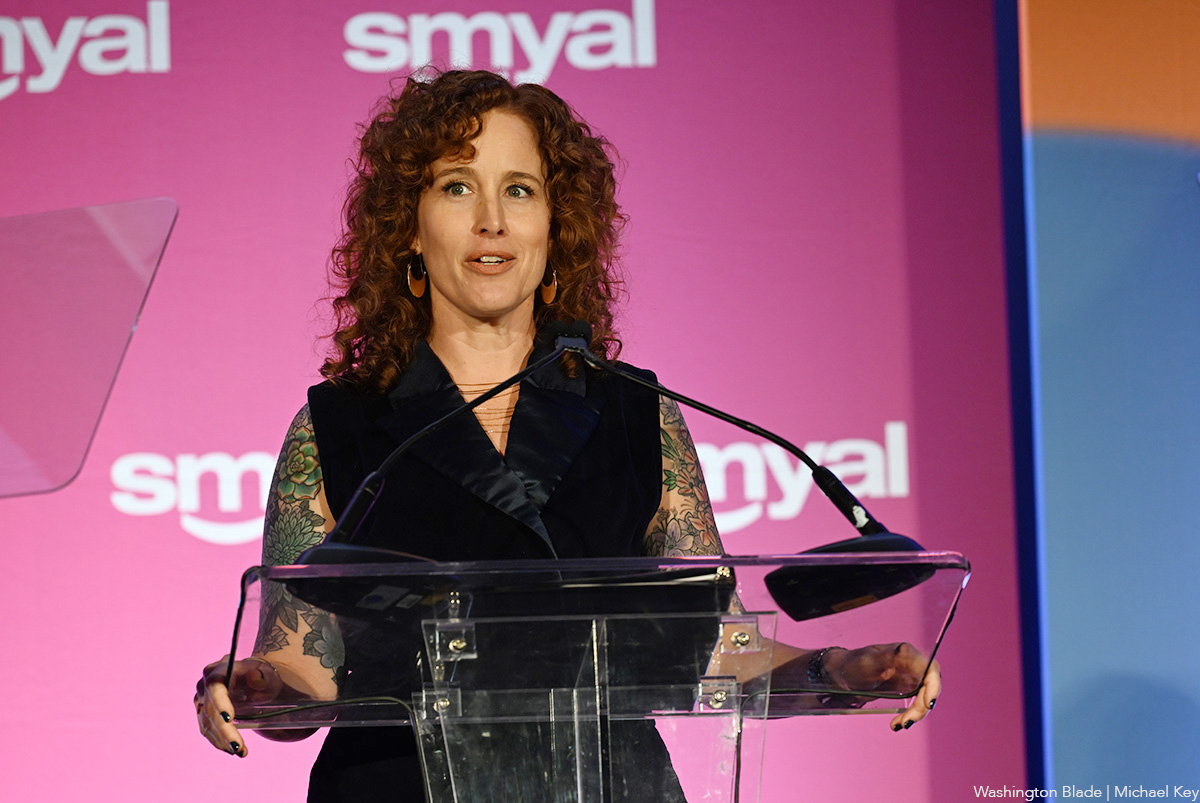
410 7th St., S.E.
Celebrating its 41st anniversary this year, SMYAL continues its role as an acclaimed service provider for LGBTQ youth in the D.C. area. Through its after-school programs, counseling services, and LGBTQ youth drop-in center, SMYAL provides LGBTQ youth with safe spaces to express themselves, find support, and build community.
Among other things, it awards $35,000 in scholarships to students each year and provides education and training for adults working with LGBTQ youth in schools, housing programs, local government agencies, and hospitals. SMYAL’s Youth Housing Program provides transitional housing for at least 55 LGBTQ youth experiencing homelessness.
Editor’s Choice: The D.C. Center
Best LGBTQ Center Outside of D.C.: Pride Center of Maryland
2418 St. Paul St.
Baltimore, Md.
The Pride Center of Maryland, which serves as an LGBTQ community center, provides a wide range of services for youth, adults, seniors, and families. It states on its website that its programs “are designed to meet the diverse needs of our community and provide a safe and welcoming space for all.”
Its programs include mental health counseling, HIV health services, support groups, education and training, a computer lab, and a game room along with space for community events and meetings. While its headquarters is based in Baltimore, its website points out it has “a presence throughout the state, including Prince George’s County, Montgomery County, Frederick, and Charles counties, and conducts outreach and education activities within those counties.”
Editor’s Choice: CAMP Rehoboth
Best Day Trip: Annapolis
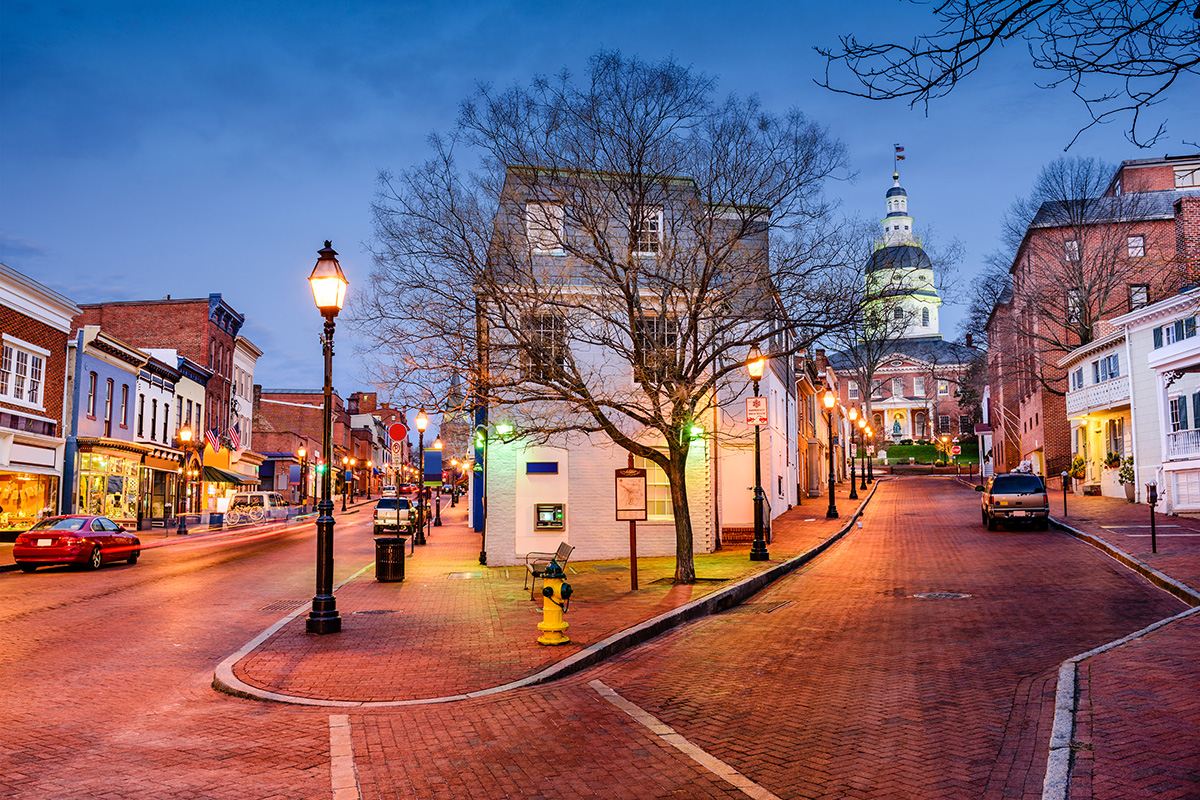
downtownannapolispartnership.org
Less than an hour from D.C., Annapolis makes the perfect day trip. With its charming streets, historic waterfront, and the Naval Academy’s good-looking midshipmen, Maryland’s state capital is filled with visual pleasures. What’s more, Annapolis offers a range of attractions, including parks, galleries, and museums that cater to the LGBTQ community. For more information go to annapolispride.org.
Editor’s Choice: Baltimore
Best Adult Store: Bite the Fruit
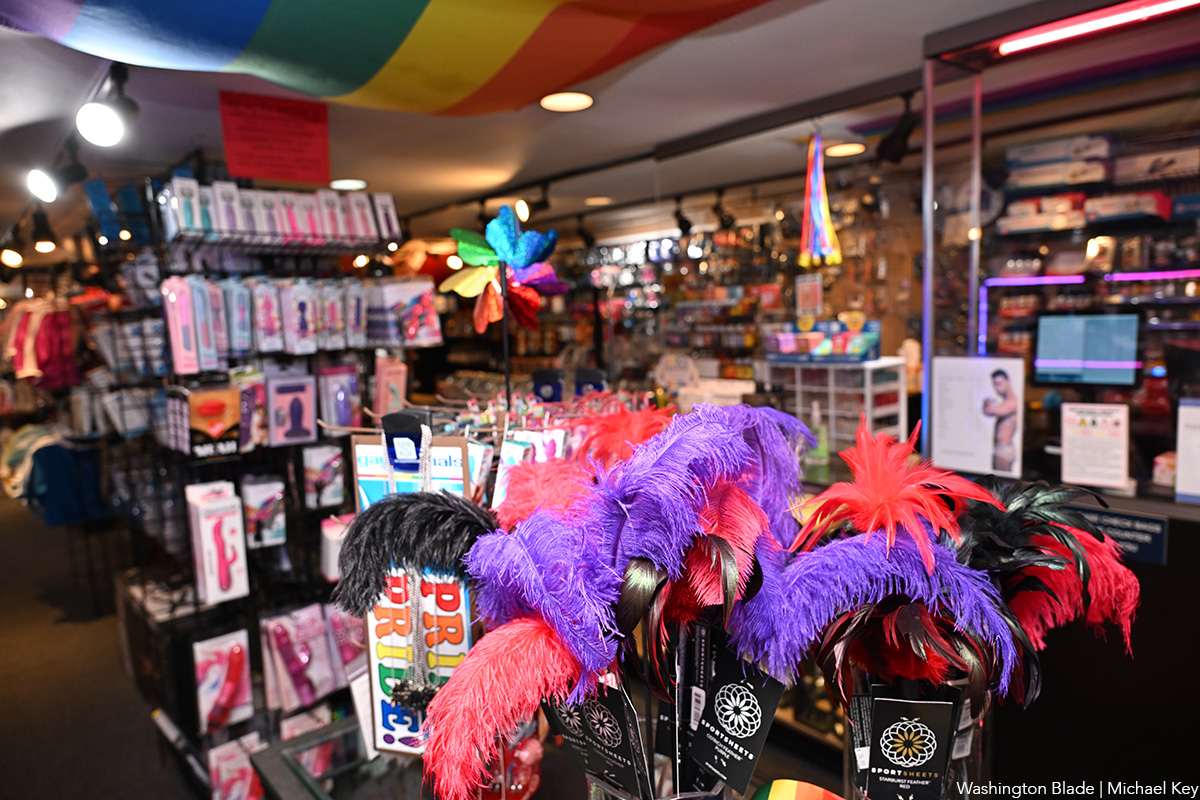
1723 Connecticut Ave., N.W. (second floor)
Go ahead, succumb to the temptation found at Bite the Fruit. The busy queer-owned Dupont Circle retailer of adult novelties and provocative apparel specializes in promoting “healthy sexual and sensual exploration.”
Editor’s Choice: What’s Your Pleasure DC
Best Local Content Creator: Bri Battle, @queertalkdc
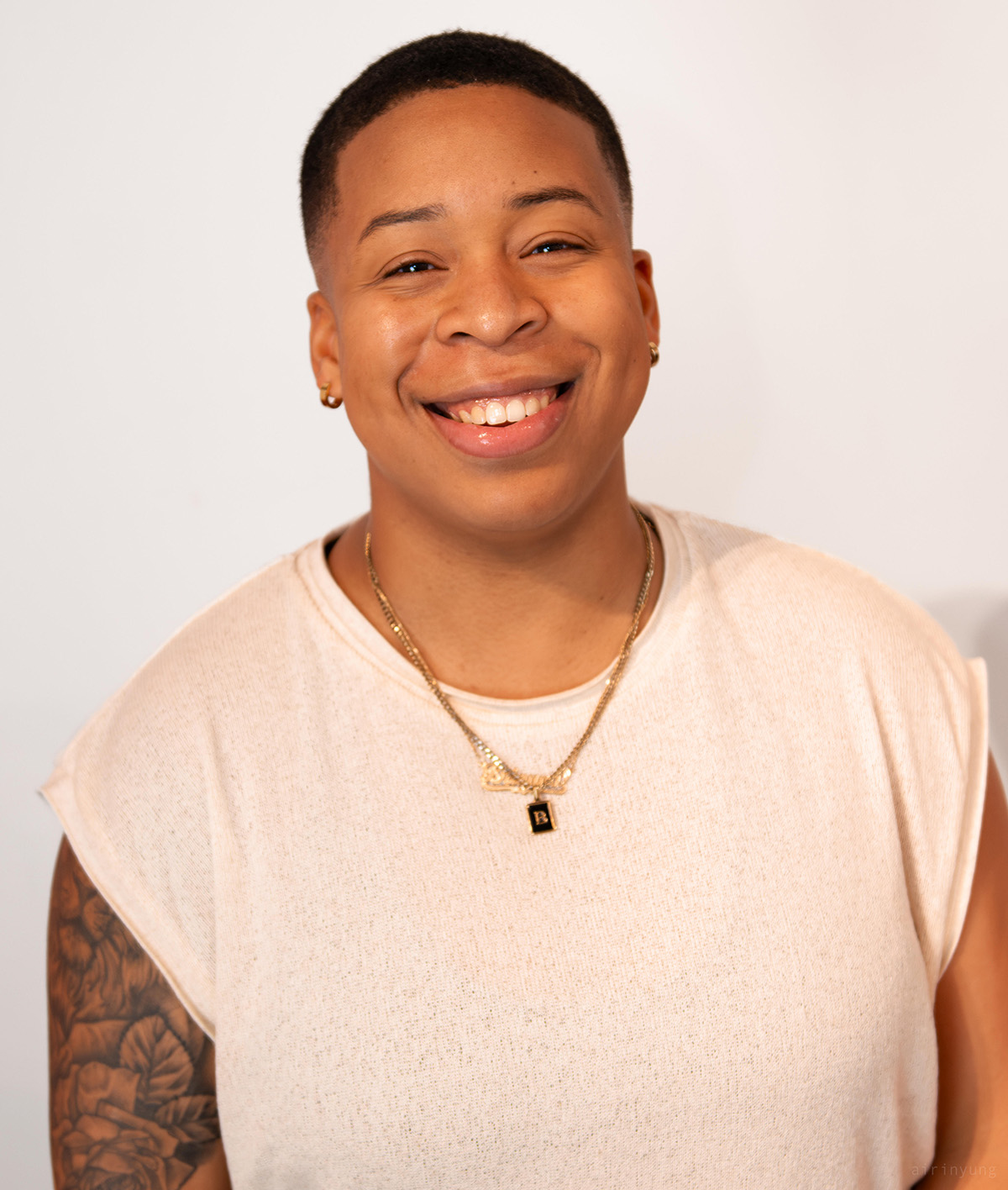
Bri Battle’s @queertalkdc promises to inform readers about “everything queer in the DMV and beyond.” Some of the events and organizations Battle has promoted include DMV Dyke Camp 2025, All Things Go, and the Columbia Mental Health clinics. Battle has also championed taking oneself out as a form of self-care.
Editor’s Choice: AJ Dronkers, @aj_dc
Best Local Website: Washingtonian Problems
instagram.com/washingtonianprobs
Washingtonian Problems is a website that revels in “celebrating the quirks and spirit of the District.” Some of its recent posts highlight the impact of the federal government shutdown in D.C., such as asking readers about local businesses that are “doing government shutdown specials.” Others note U.S. Rep. Marjorie Taylor Greene (R-Ga.) and other Capitol Hill personalities who try to make their mark in the nation’s capital.
Editor’s Choice: Popville
Best Local TV/Radio Personality: Tommy McFly, NBC4
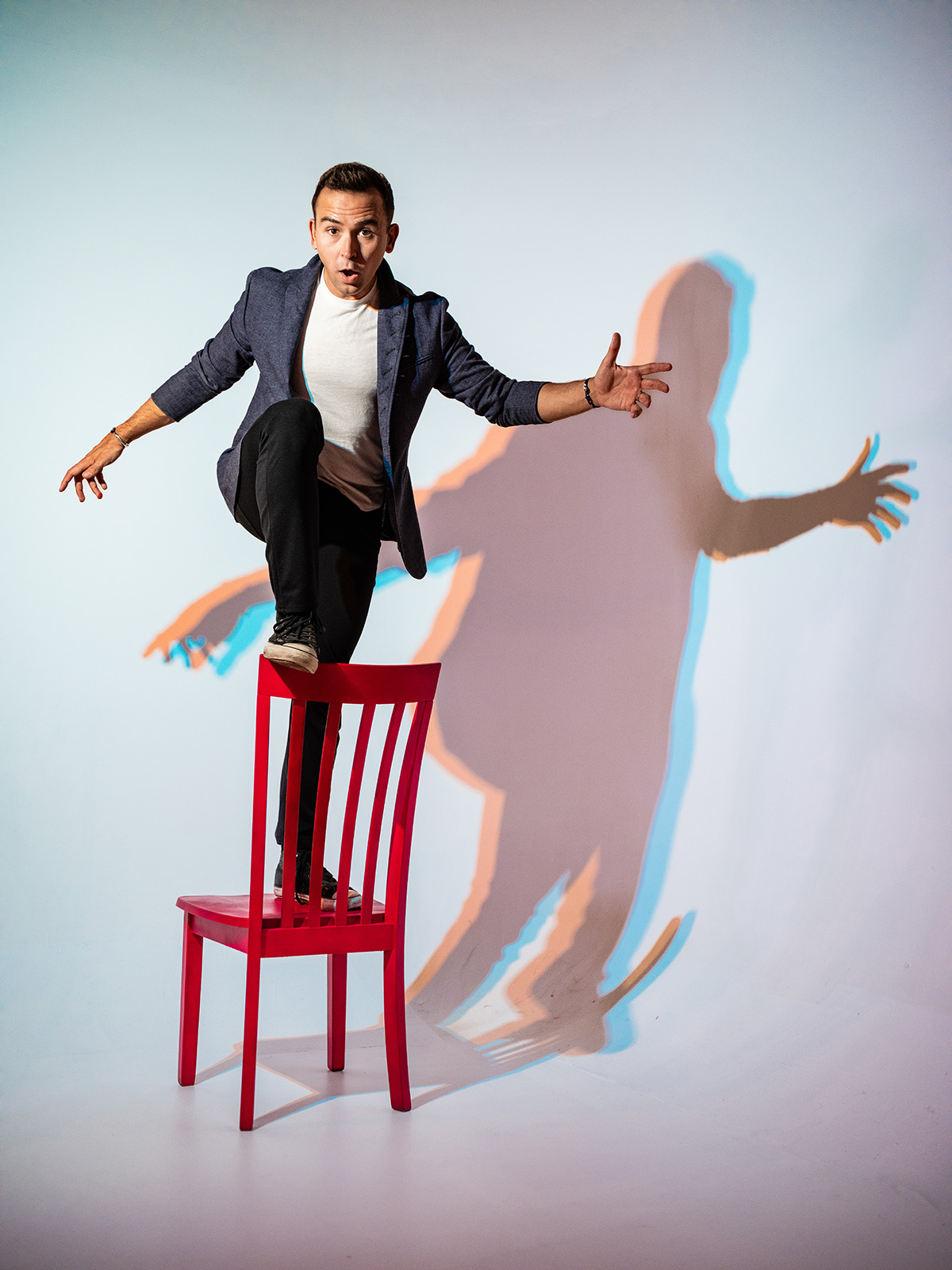
Tommy McFly has been a fixture on local airwaves for more than a decade. Washingtonians can currently watch him doing “The Scene” on NBC4.
“I’m proud to be surrounded by so many incredibly talented queer media professionals in D.C.,” McFly told the Washington Blade. “Just like on the airwaves, our vibrant community is made better because so many people feel they can live their lives authentically here — at work, in public, and at home. I know that isn’t the case everywhere. It’s something we need to cherish. And we have a responsibility to keep bringing everyone along.”
McFly was in the closet when he moved to D.C. in 2006. He said the city since then “has embraced me and my husband, Chrys, in countless ways.”
“But the opportunity to be your neighbor — a friendly face on TV, at live events, in your feed and on the street — is the most incredible gift, and one I’ll never take for granted,” said McFly.
Editor’s Choice: Lorenzo Hall, WUSA 9
Best Fitness or Workout Spot: VIDA Fitness
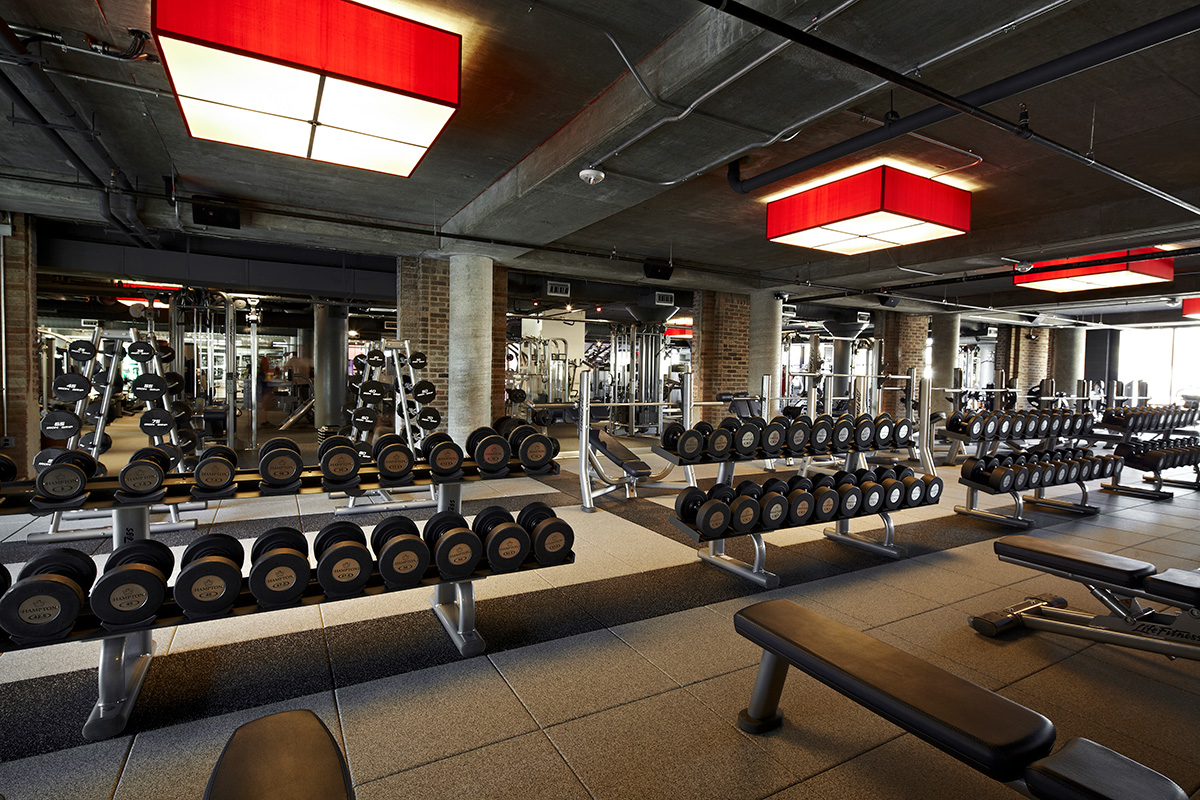
Multiple locations
For the second year in a row, VIDA Fitness is the most popular gym among LGBTQ Washingtonians.
Vida has locations in Logan Circle, the Navy Yard, City Center, U Street, Ballston, and Reston. The exclusive Penthouse Pool at the U Street location remains the go-to summer destination for locals who don’t want to schlep to the beach.
Editor’s Choice: Barry’s Bootcamp
Best Lawyer: Erin Palmer

Erin Palmer has been the associate director of the Pro Bono Institute’s Corporate Pro Bono project since 2024. The organization’s website notes she “brings extensive experience in legal ethics, litigation, and public interest advocacy.”
She is an alum of the American University Washington College of Law and of the University of Pennsylvania. Palmer is also a former member of the D.C. Advisory Neighborhood Commission.
Runner-up: Chase Strangio
Best Dentist: Dr. Robert McKernan, Big Gay Smiles
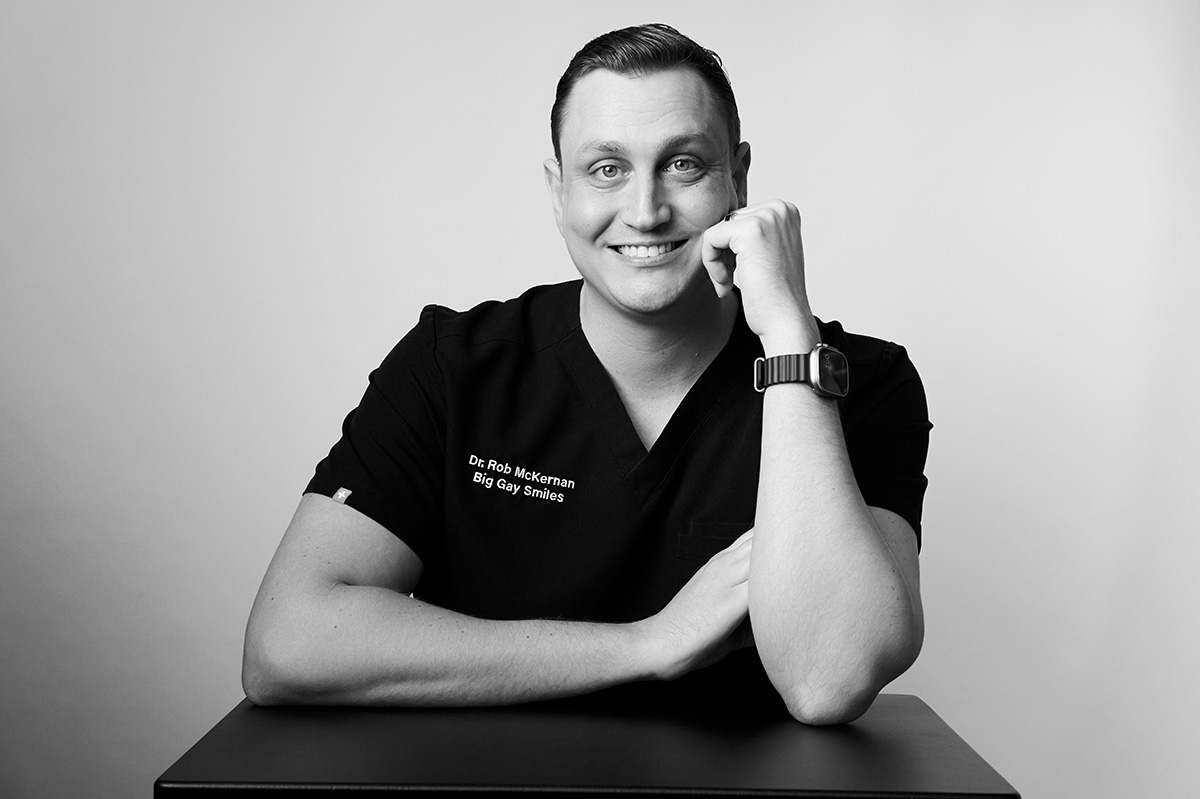
Dr. Robert McKernan of Big Gay Smiles continues to make Washingtonians “smile with Pride.”
“Big Gay Smiles Dental is an LGBTQ2IA+ owned practice that prioritizes comfort, quality, and community,” says Big Gay Smiles on its website. “We understand the stressors related to going to the dentist and actively work to redefine what it means to provide queer- (and ally-) focused dental care.”
Big Gay Smiles also donates 10 percent of its annual revenue to HIV/AIDS service organizations.
Editor’s Choice: Dr. Gregory Martin, DDS
Best Amateur Sports League: Rogue Cornhole
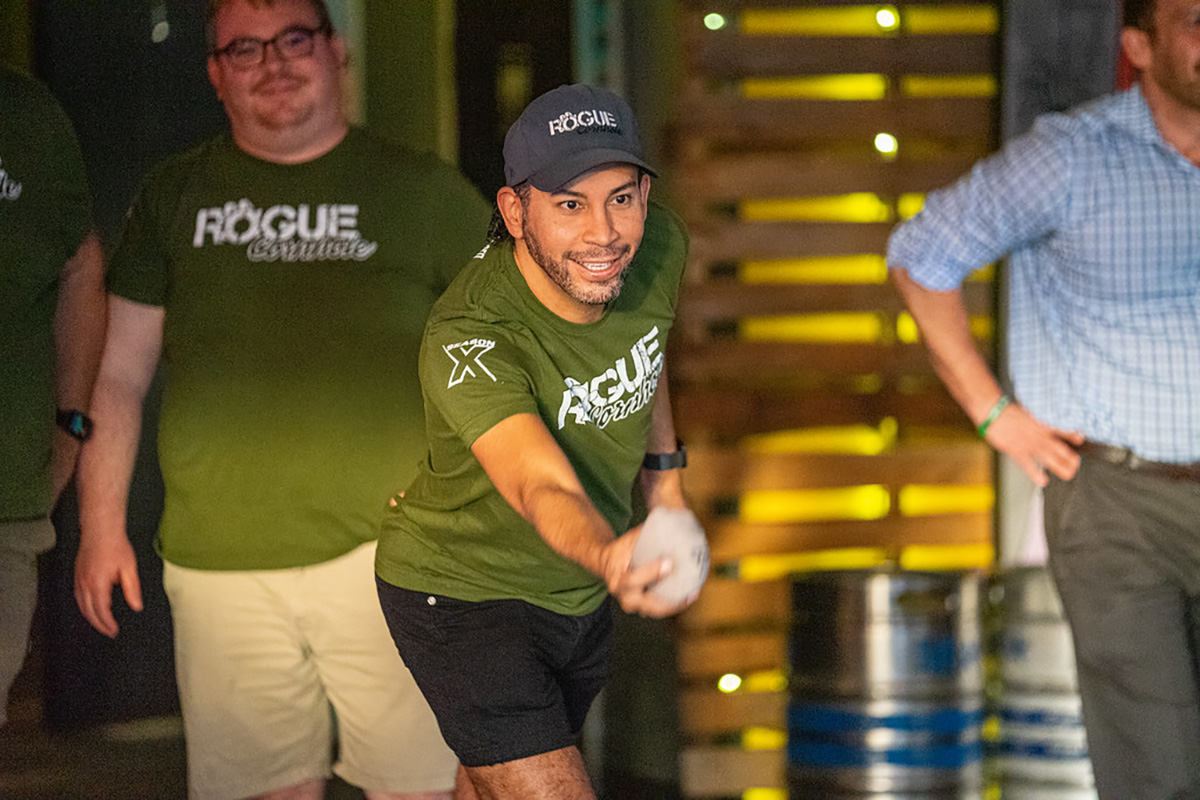
Rogue Cornhole describes itself as a “fun, socially minded, LGBTQ+ non-profit that strives to better our communities through volunteer efforts and raising funds for local non-profit organizations. The group, while championing cornhole, pledges to “have fun, cherish friendships, meet new people, and to be engaged with and committed to bettering our community through educational efforts.”
Editor’s Choice: DC Front Runners
Best LGBTQ Social Group: Gay Men’s Chorus of Washington

The Gay Men’s Chorus of Washington, DC, has inspired gay men and many others since its founding more than 40 years ago. The chorus, which has performed at the White House, the Kennedy Center, and many other famed institutions, currently includes more than 250 members. It remains “the LGBTQ+ voice of equality in the nation’s capital.”
Editor’s Choice: Capital Sapphics
Best Local Businessperson: Russwin Francisco, Bite the Fruit
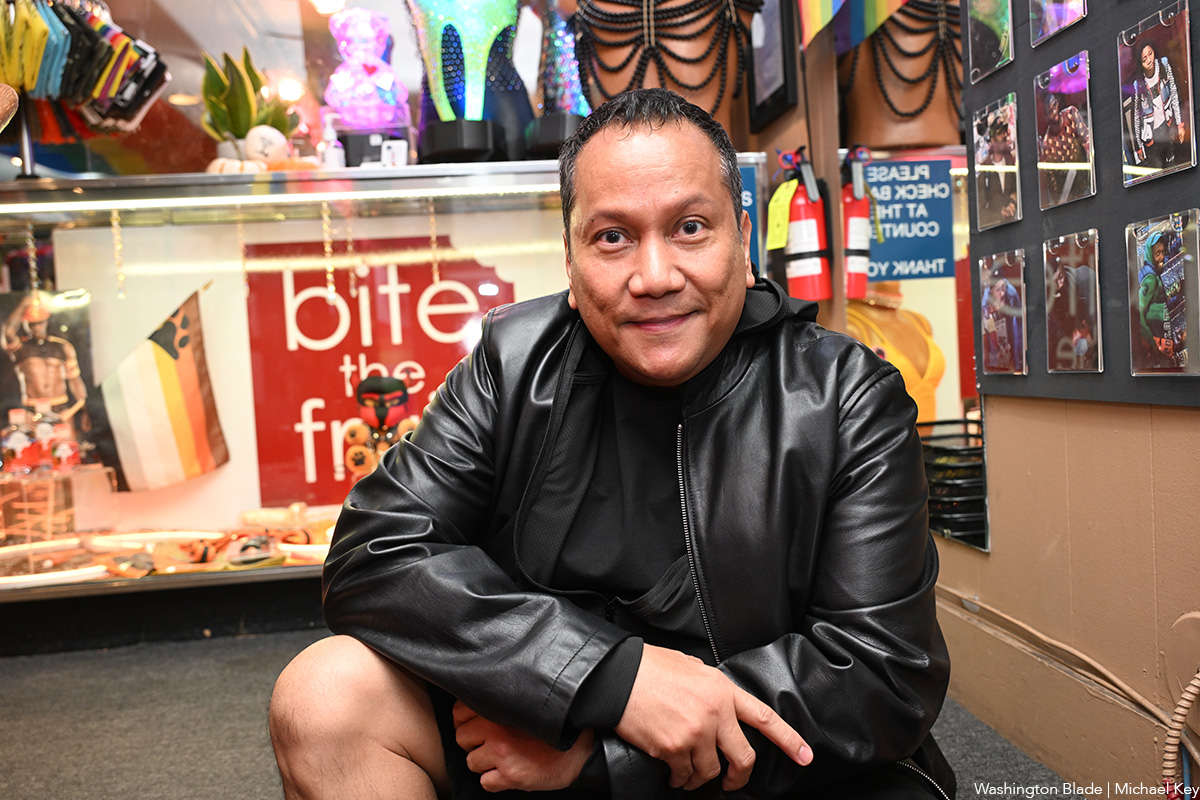
1723 Connecticut Ave., N.W. (second floor)
Established in 2012 in D.C., Bite the Fruit is gay-owned, straight-friendly and kink forward. It is a peerless retailer of adult novelties and provocative apparel that promotes healthy sexual and sensual exploration.
Editor’s Choice: Gregory Jones, Capital Center for Psychotherapy & Wellness
Best Clergy: Bishop Thomas Wieczorek
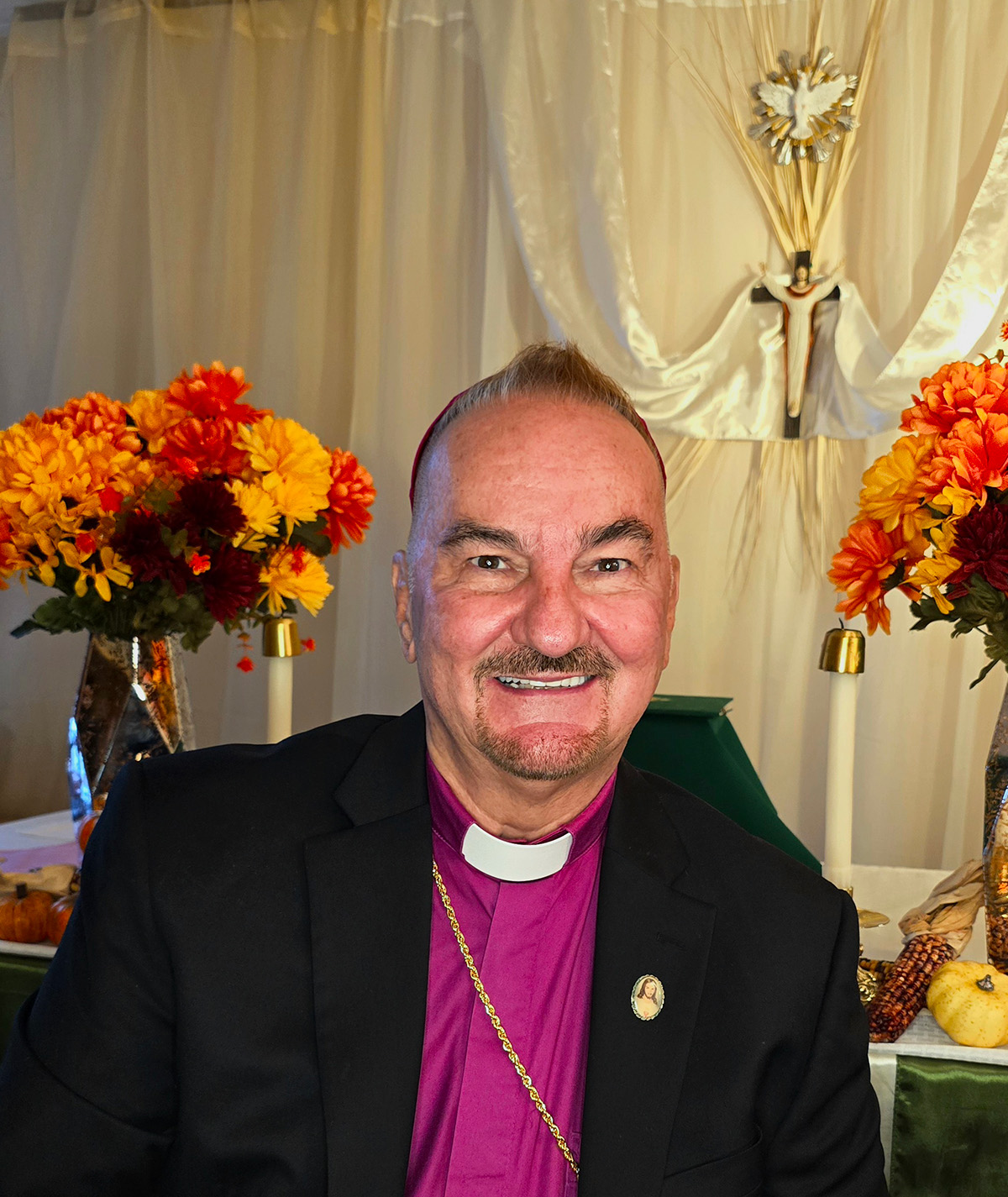
Thomas Wieczorek is a priest with the D.C.-based affiliate parish of St. Mary’s National Catholic Church of North America; he was elected auxiliary bishop in 2022.
Wieczroek has held many titles during his lifetime: award-winning newspaper reporter, baker, police officer, fire chief, deputy and director of public safety, city manager, and consultant. He is active in D.C. and other communities, having been the vice chairperson of Capital Pride, chairperson of Ionia-Montcalm County Domestic Violence Program, and other groups.
Editor’s Choice: Rev. Dr. Adalphie Johnson
Best Real Estate Agent: Michael Moore, Compass
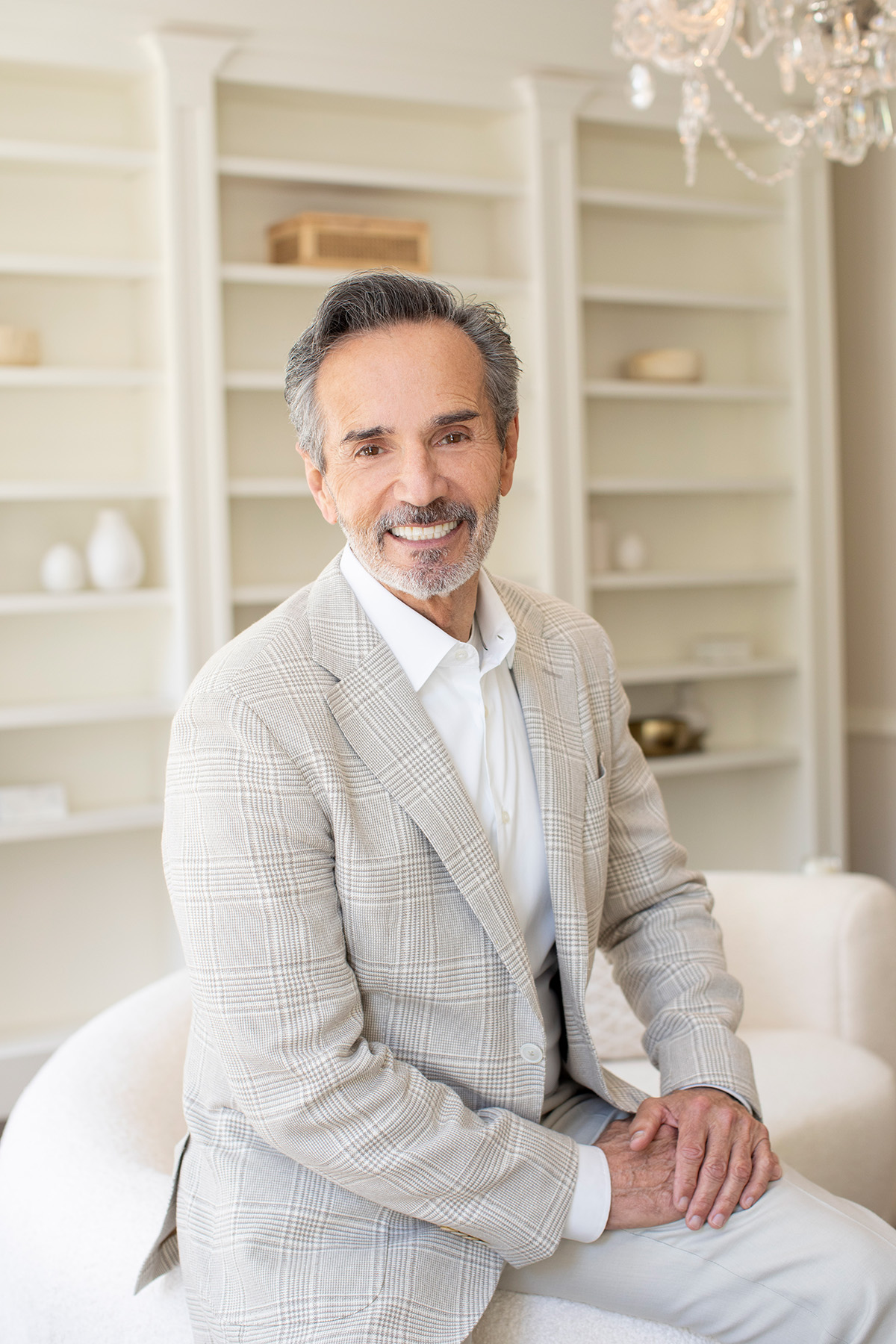
1313 14th St., N.W.
Michael Moore cares about doing good work for people through each step of the buying and selling process. For him, the client experience is the heart of the business, and his commitment to investing in the longevity of those relationships defines his career. He’s also been a longtime advocate for AIDS LifeCycle bike rides, Caron Treatment Centers, and Food and Friends.
Editor’s Choice: Lamar Brathwaite, Coldwell Banker
Best Real Estate Group: Bediz Group, RLAH
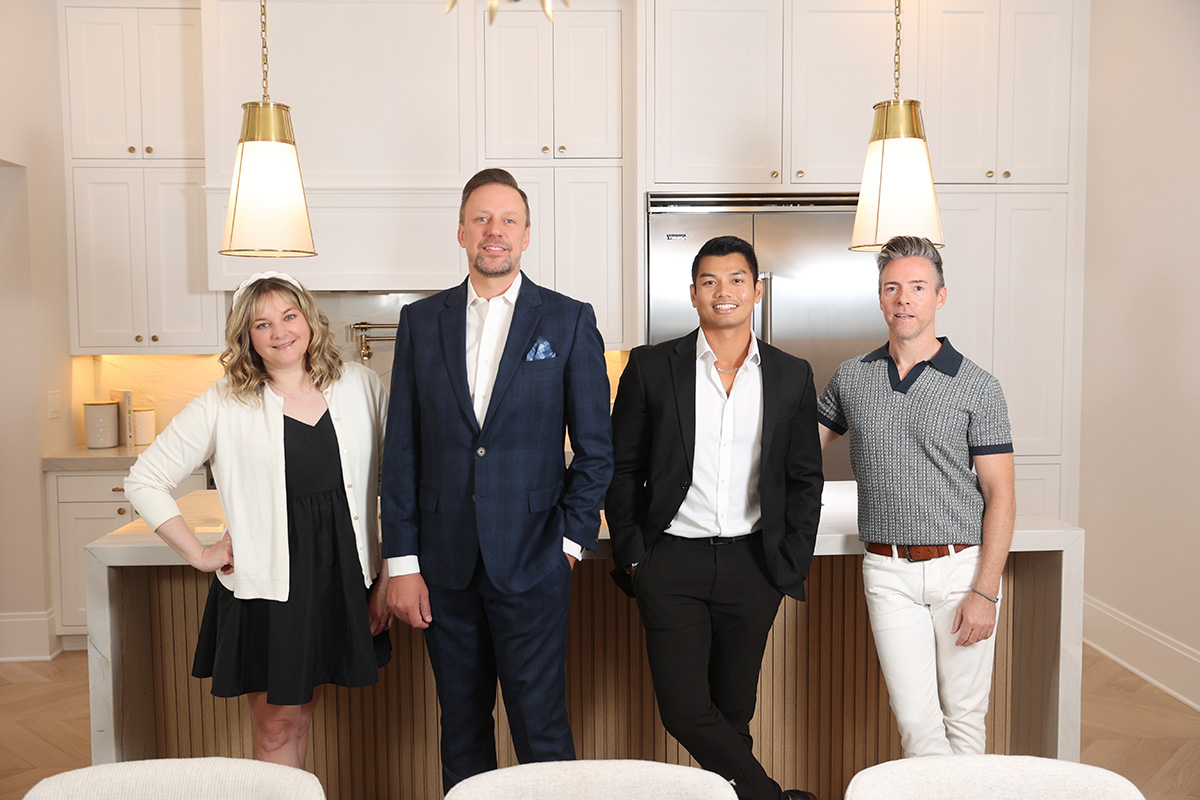
Multiple locations
202-642-1616
The Bediz Group is a real estate team of seven agents and this is its fifth win in this category. In addition to real estate services, Bediz Group also offers an in-house creative team that provides high-caliber marketing collateral that ensures your property stands out. The group’s weekly emails reach more than 3,600 readers and it promotes its listings on its social media platforms.
Editor’s Choice: The Tom Buerger Team, Compass
Best LGBTQ-Owned Business: LGBT+ Counseling Collaborative

This collaborative is a dedicated team of queer and trans-identifying psychotherapists serving LGBTQ+ clients, their families, and allies. The group’s mission is to provide culturally competent, social justice oriented, queer affirming, neurodiverse-informed, and trauma informed therapeutic services to clients who want to actively engage in healing and processing around personal history, generational cycles, and systemic issues with clinicians who have similar lived experiences and values.
Editor’s Choice: Urban Adventures
Most LGBTQ-Friendly Workplace: Stratus Firm
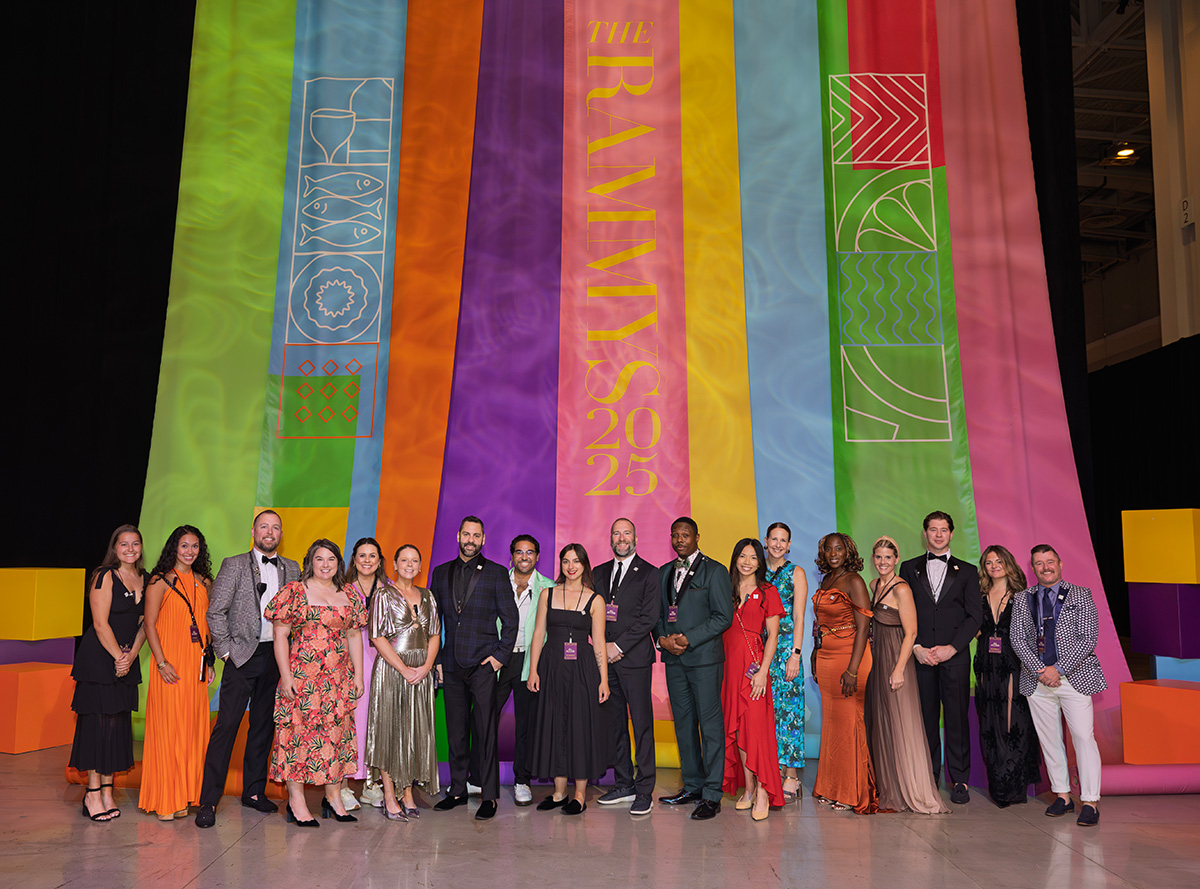
Stratus specializes in events that are dynamic, large-scale, and production-heavy and produces high-impact experiences for a wide range of corporations, associations, and nonprofits.
Editor’s Choice: Whitman-Walker Health
Best Home Furnishings: Miss Pixie’s
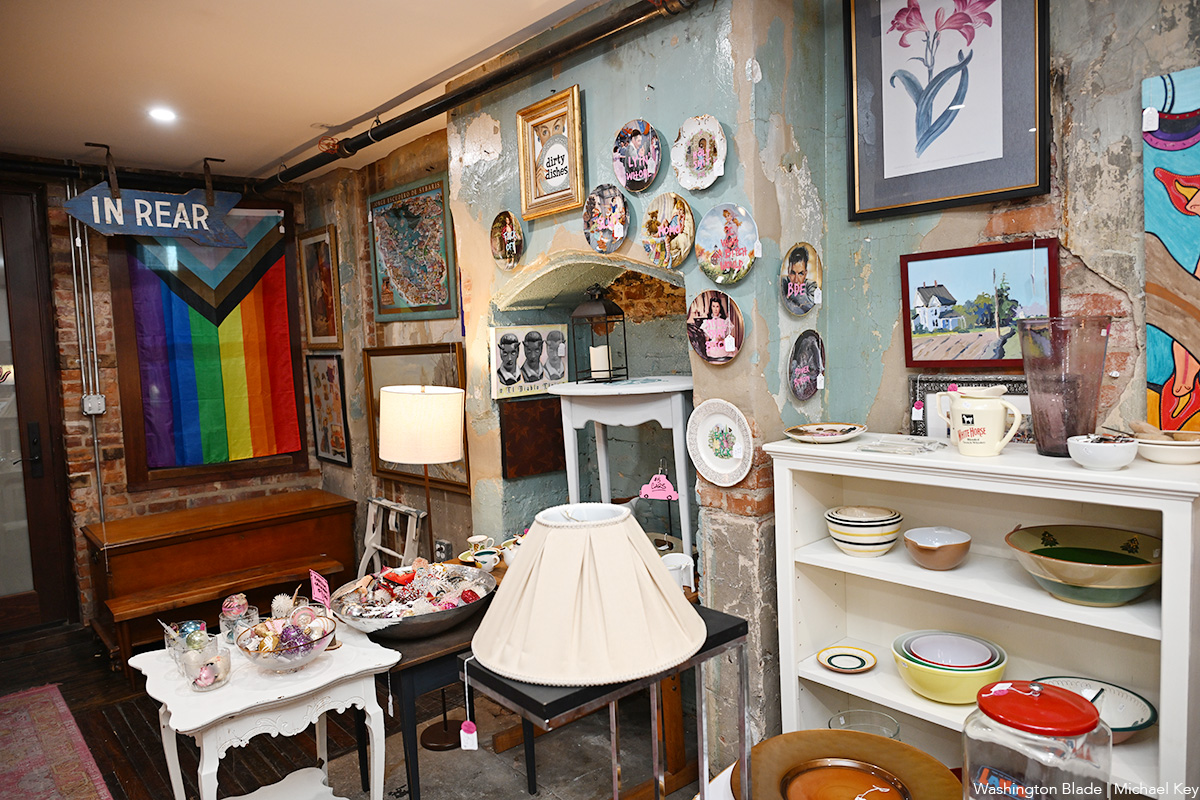
1830 Columbia Rd., N.W.
Established in 1997, Miss Pixie’s opened at 1810 Adams Mill Rd. NW in Adams Morgan in a tiny 550-square-foot space with 18-foot ceilings. Miss Pixie quickly learned to “stack it deep and sell it cheap,” and most of the weekly inventory was gone by the end of each week.
Sadly, Miss Pixie’s announced the store is closing on Oct. 31 so stop by soon for 20 percent off many items.
Editor’s Choice: West Elm
Best Pet Business or Vet: City Paws Animal Hospital
1823 14th St., N.W.
City Paws has assembled a team of caring, compassionate, and highly skilled veterinary professionals who share the same dedication to delivering the highest quality veterinary care while building solid and lasting client relationships.
Editor’s Choice: Canino Dog Boutique
Best Salon/Spa: Logan 14
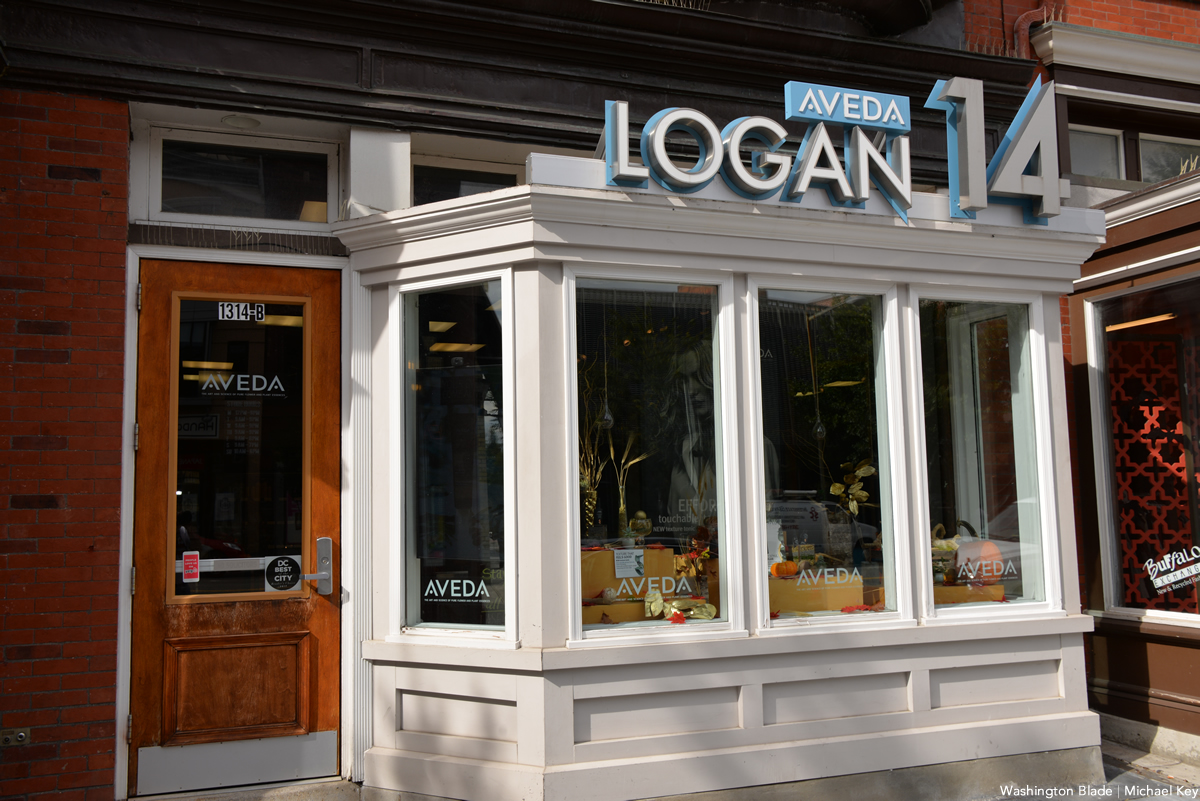
1314 14th St., N.W.
Logan 14 Aveda Lifestyle Salon & Spa is the winner for the ninth consecutive year. The salon places an environmentally conscious, queer-affirming focus on hair, skin and makeup services. The LGBTQ-owned salon strives to create a nurturing environment and uses entirely naturally derived Aveda products. Guests can opt for medspa treatments in addition to traditional salon services, all of which promote rejuvenation. The 14th Street salon opened in 2010 and features a 75% LGBTQ clientele.
Editor’s Choice: Bang Salon
Best Med Spa: ProMD Health
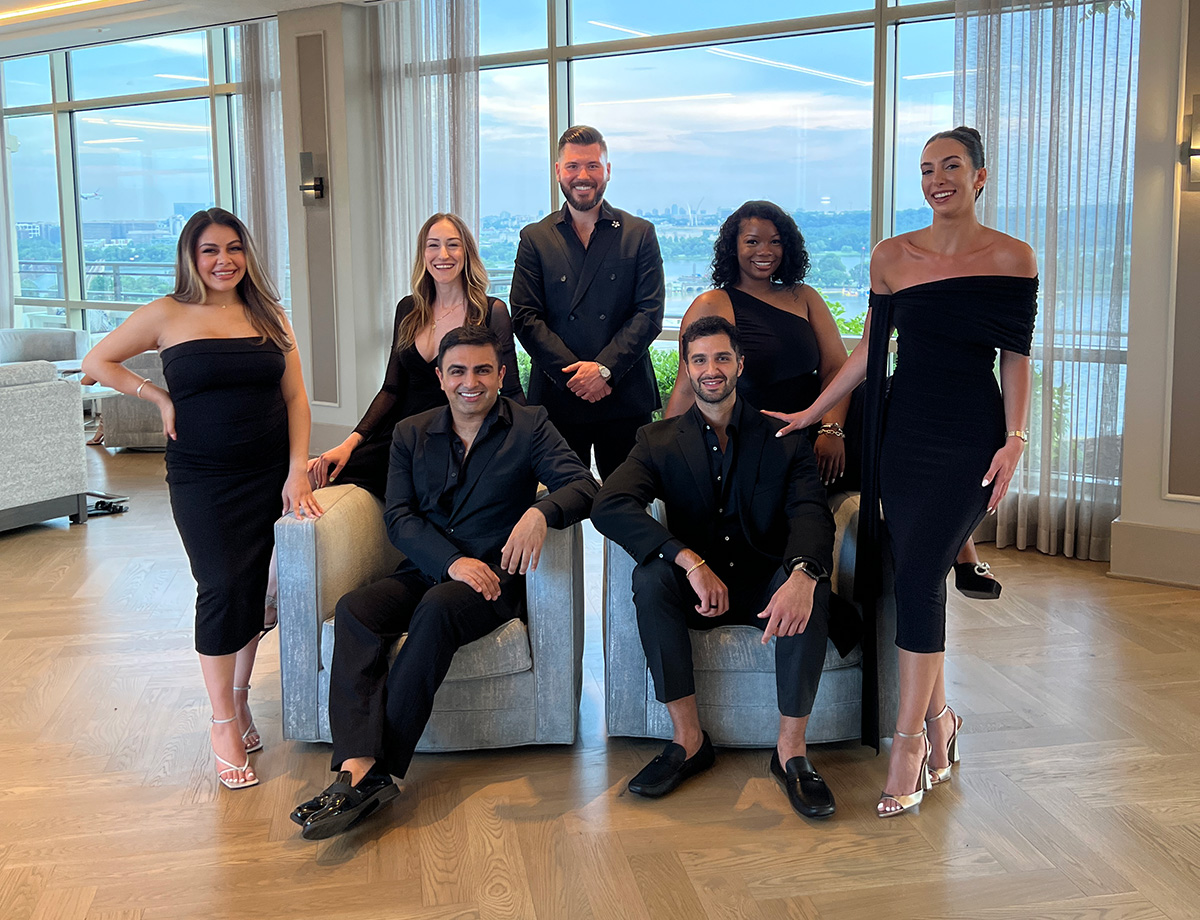
1003 K St., N.W. #835
Editor’s Choice: Javan Wellness
Best Hotel: Eaton DC

1201 K St., N.W.
Eaton DC was the 2024 Editor’s Choice in this category. A member of World Rainbow Hotels, Eaton DC is focused on diverse cultural programming, equitable community-building, and environmental sustainability. This flagship location is LGBTQ-friendly and offers an inclusive safe space for guests. The boutique hotel is also home to a Pride-themed hotel suite, featuring Marsha P. Johnson’s quotes on the wall, rainbow decor and decorations based on feedback from LGBTQ hotel staff. The hotel is nestled downtown, walking distance from the National Mall. Eaton Workshop’s original location is in Hong Kong.
Editor’s Choice: Dupont Circle Hotel
Best House of Worship: Sixth & I

600 I St., N.W.
Sixth & I is the winner for the second year in a row. The multi-denominational and non-membership institution is housed in a historic 1908 synagogue. The synagogue offers cultural and spiritual programming ranging from comedy, concerts, and live podcasts. Past live entertainment included talks from Janelle Monáe, Jonathan Van Ness and Ocean Vuong. Sixth & I also offers a range of LGBTQ-inclusive services and events, including Pride Shabbat services, gay weddings and other community events.
Editor’s Choice: Metropolitan Community Church of DC
Best Tattoo Parlor: Second Son Tattoo
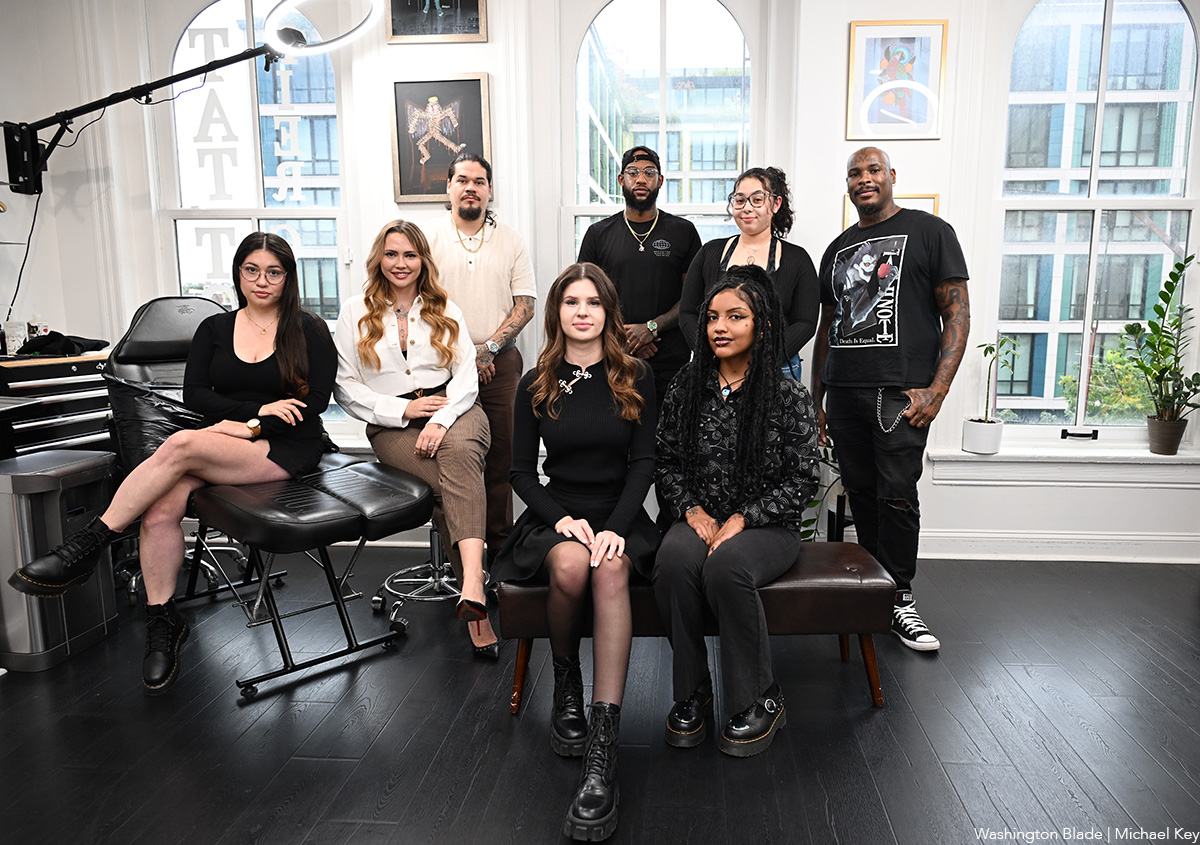
1712 14th St., N.W. (third floor)
This tattoo and piercing shop located just north of Logan Circle prioritizes safe and enjoyable experiences for its clients. While the shop isn’t LGBTQ owned, Second Son Tattoo strives to create custom tattoos best fit to customers’ wishes. The shop’s eight artists specialize in a variety of artistic specialties, including black and grey realism, florals, anime, and line work.
Editor’s Choice: Tattoo Paradise
Best LGBTQ Event: Capital Pride
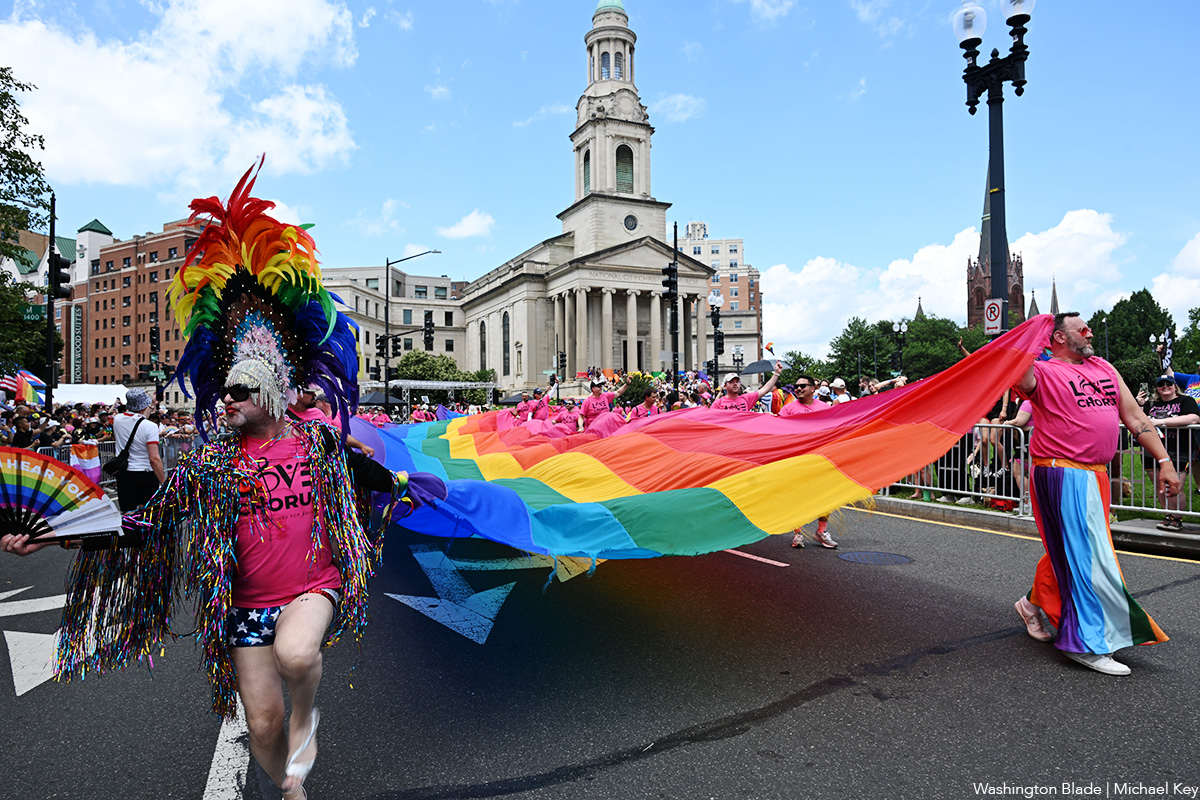
Capital Pride, an annual LGBTQ parade and festival held in June, is Washington’s premier Pride celebration. A parade featuring community organizations, corporate sponsors and local businesses, a street festival, a gala and a block party are just some of Capital Pride’s many featured events, all organized by the Capital Pride Alliance. The event originated as Gay Pride Day, a one-day block party, in 1975; the event is now a multi-day celebration that lights up a variety of neighborhoods. Capital Pride is set to be held from June 8-14 in 2026.
Editor’s Choice: Miss Adams Morgan Pageant
Best WorldPride Event: WorldPride Music Festival
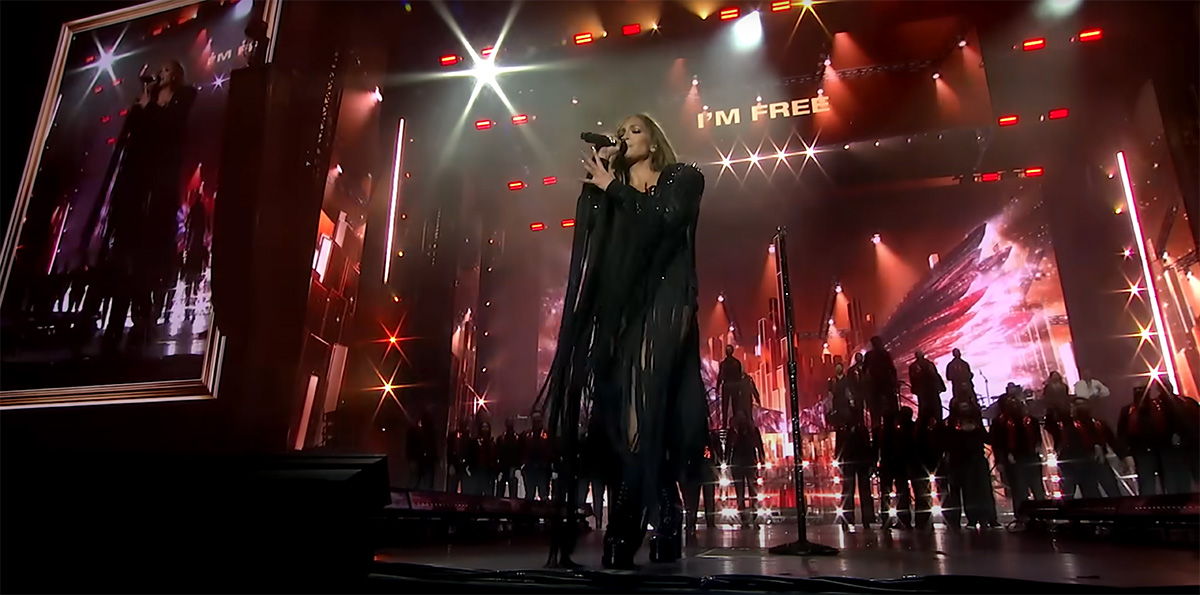
worldpridedc.org/events/music-festival-global-dance-party/
The WorldPride Music Festival served as the District’s dance party on June 6 and 7 for the 50th year of Capital Pride. The two-day music festival was held on RFK Festival Grounds on the banks of the Anacostia River. Featured artists included Jennifer Lopez, Troye Sivan and Reneé Rapp. The WorldPride Music Festival is set to be held in Amsterdam in 2026.
Editor’s Choice: MIXTAPE Pride Party
Best Diversity of Pride: DC Black Pride
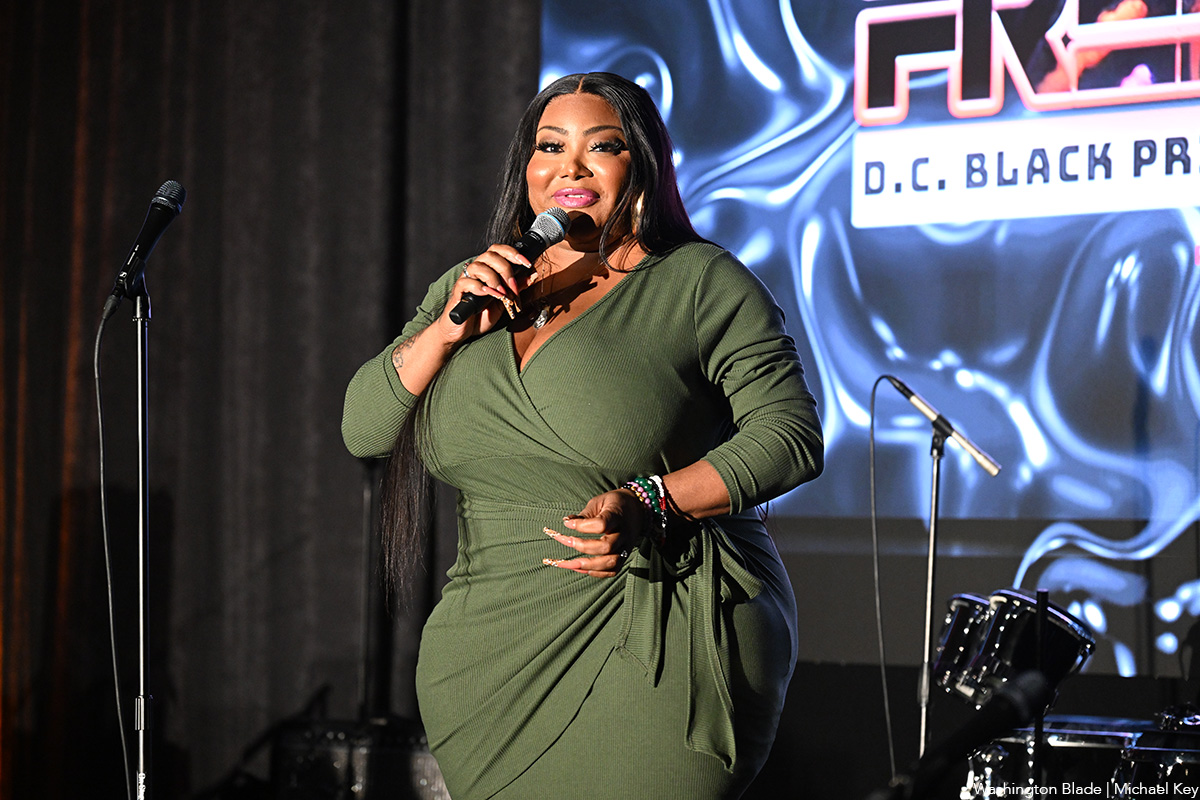
1001 16th St., N.W.
DC Black Pride, held on Memorial Day weekend, raises awareness and funding for HIV/AIDS while celebrating Black Pride and community. The event began with a Black Gay and Lesbian Pride event in 1991 and has since blossomed into an event of 500,000 Black LGBTQ attendees and allies. As the catalyst for Black Pride events, more than 50 cities globally center their celebrations around Washington’s model. The Center for Black Equity produces DC Black Pride annually.
Editor’s Choice: Trans Pride
Best Pride Outside of DC: Baltimore Pride

Baltimore Pride is the best non-D.C. winner for the second consecutive year. The Pride Center of Maryland hosts Baltimore Pride annually in celebration of LGBTQ contributions and diversity. The event began in 1975 with a peaceful activist demonstration and has since evolved into a range of events spread throughout the downtown area. The celebration takes place in and near Mount Vernon, Baltimore’s “gayborhood.” Typical events include the Pride Parade and Block Party, the Twilight on the Terrace Gala, Youth Pride and Pride in the Park.
Editor’s Choice: Virginia Pride, Richmond
Best Car Dealership: BMW of Fairfax
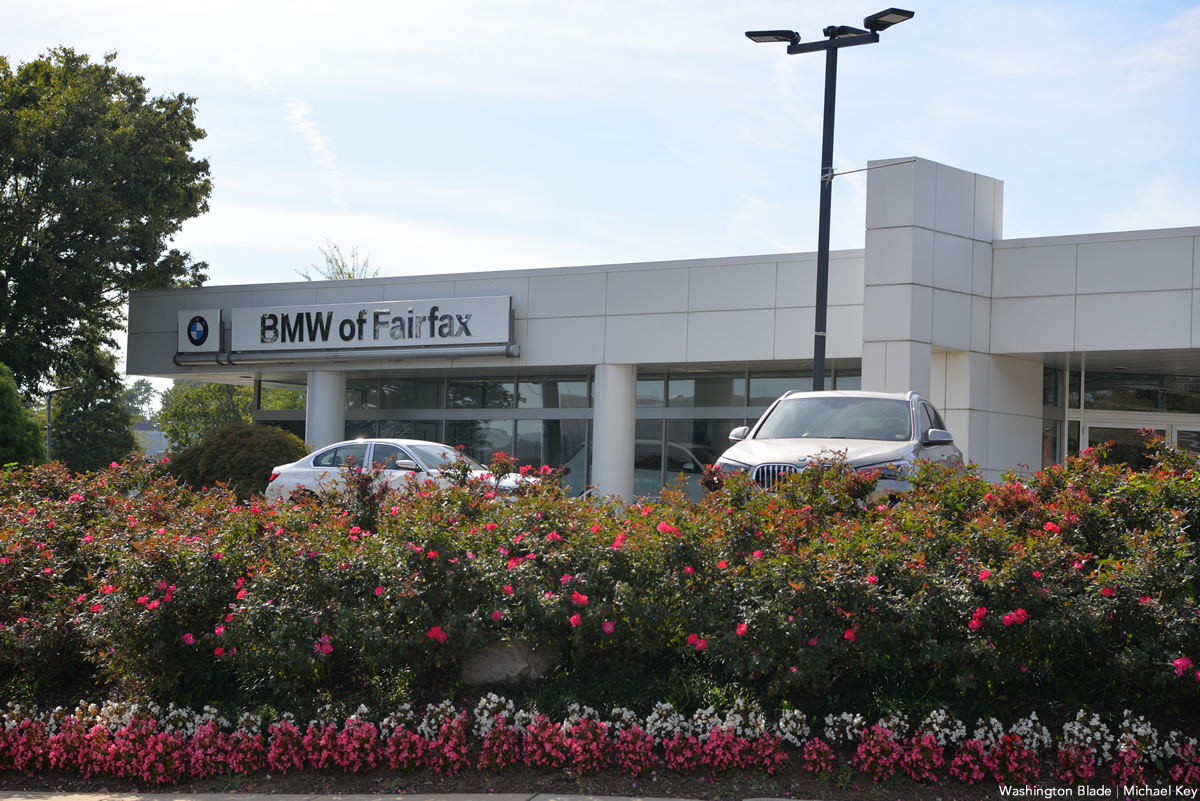
8427 Lee Hwy
Fairfax, Va.
Editor’s Choice: DARCARS
Best Private School: Edmund Burke
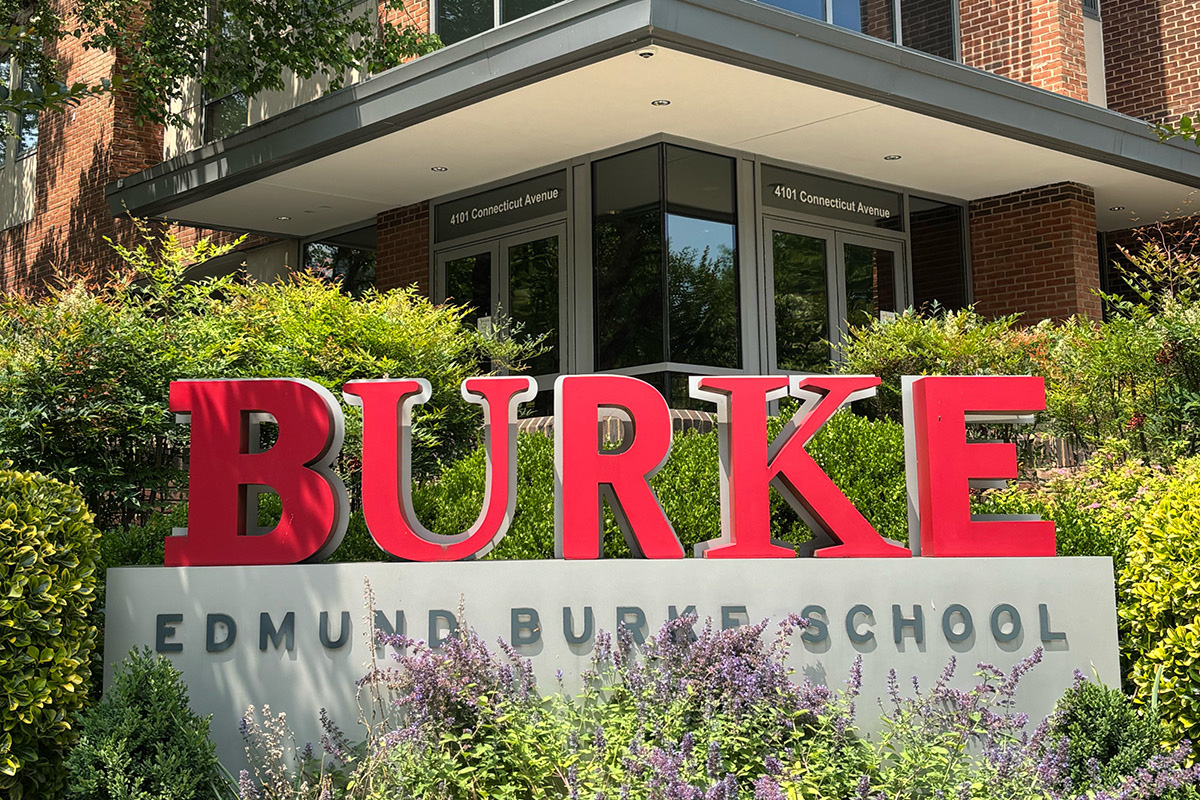
4101 Connecticut Ave., N.W.
Editor’s Choice: Maret School
FOOD & DRINK
Best Coffee Shop: Spark Social House
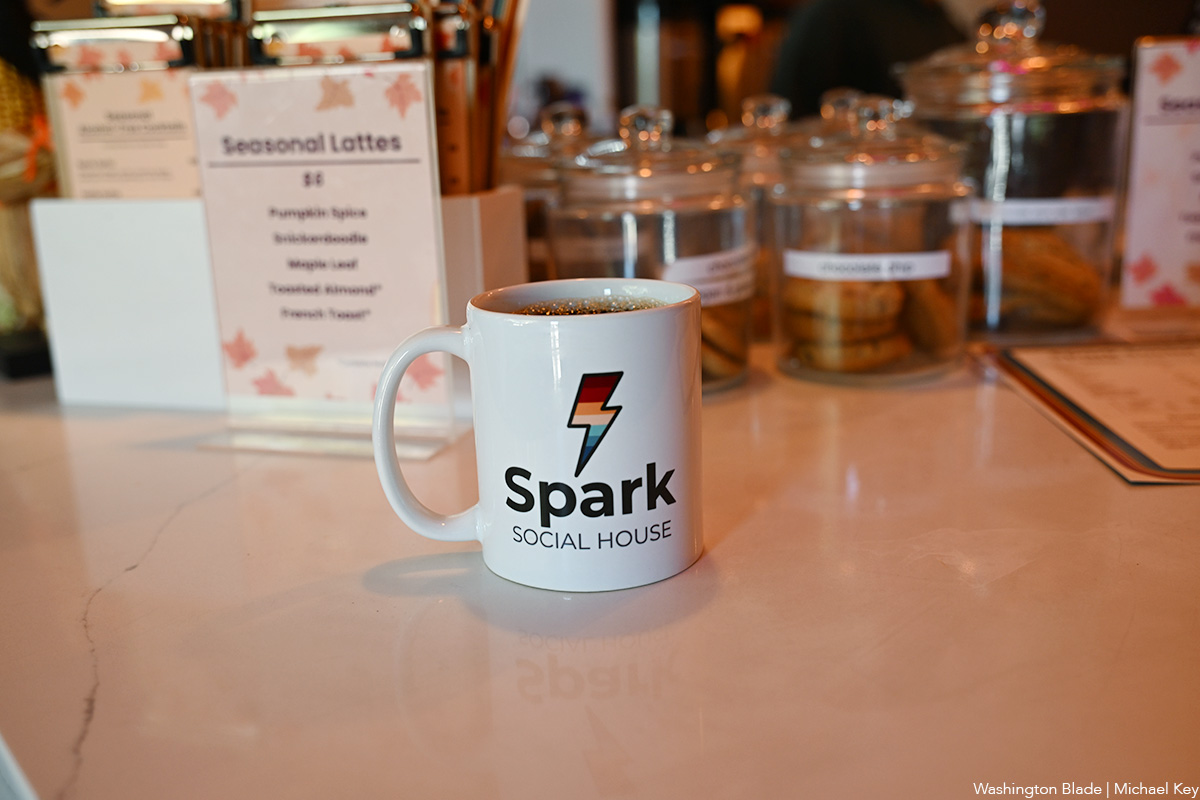
2009 14th St., N.W.
Spark Social House, which opened in March 2025, is Washington’s first LGBTQ alcohol-free bar, but is also so much more than that. A community gathering place in the heart of D.C.’s LGTBQ nightlife center at 14th and U Streets, N.W., the two-story space serves coffee and tea during the day, bringing in friends, colleagues, and dates in an inclusive, welcoming space. And in the evening, it becomes a sober party, with DJs, performances, and events.
Editor’s Choice: Three Fifty Bakery & Coffee Bar
Best Outdoor Dining: Hank’s Oyster Bar
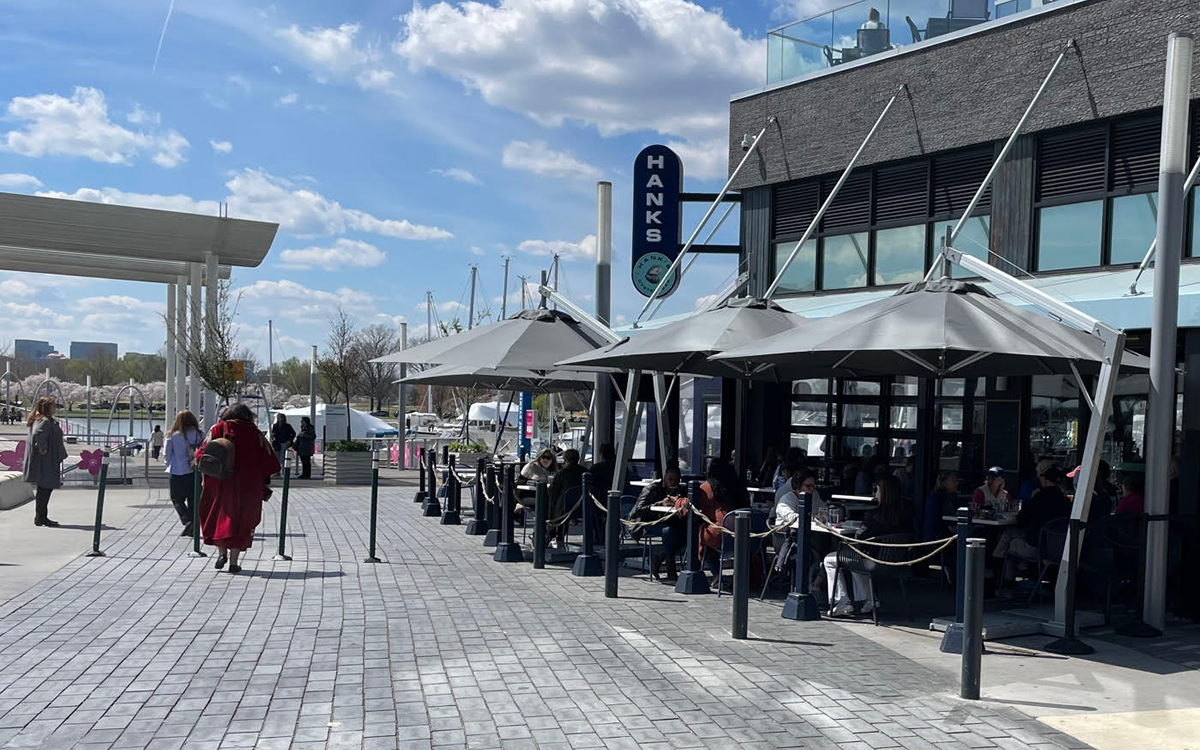
Multiple locations
With locations in Dupont, the Wharf, and Alexandria, this 20-year-old institution has collected numerous Blade awards, like Best Chef (owner Jamie Leeds) and Best Craft Cocktails. In Dupont, the outdoor patio is a classic scene, located right off 17th Street, for everything from first dates to catch-ups to events. As a community-oriented space, Hank’s has placed a sincere focus on being inclusive for its two decades, meaning that everyone is welcome on its breezy patio with both great food and great people watching. On the Wharf, The sweeping vistas pair especially well with oysters and lobster rolls.
Editor’s Choice: Barcelona
Best Restaurant: Tabard Inn

1739 N St., N.W.
One of the oldest hotels in Washington, D.C., the Tabard Inn opened in 1922 in the style of an English manor and has been oozing charm ever since. While not gay-owned, it’s become a welcoming gathering space for LGBTQ locals and visitors, owing to its geography in Dupont Circle, eccentric nature, somewhat hidden locale, and diverse staff and clientele. The restaurant, started as a tea room, is full of art and warmth, and places a focus on mid-Atlantic cuisine.
Editor’s Choice: Red Hen
Best Brunch: Shaw’s Tavern

520 Florida Ave., N.W.
Shaw’s Tavern has been a mainstay of the LGBTQ community for many years, with LGBTQ management and a prime location by nightlife and culture. Boasting a large outdoor patio, this New American restaurant is primed for big brunch business (running an impressive seven hours, from 10 a.m.-5 p.m.), especially wrapped around its bottomless mimosas and brunch cocktails and shots. Brunch brings sandwiches, flatbreads, waffles, lots of eggs, and a healthy dose of socializing.
Editor’s Choice: HER Diner
Best Brewery: Red Bear Brewing Company
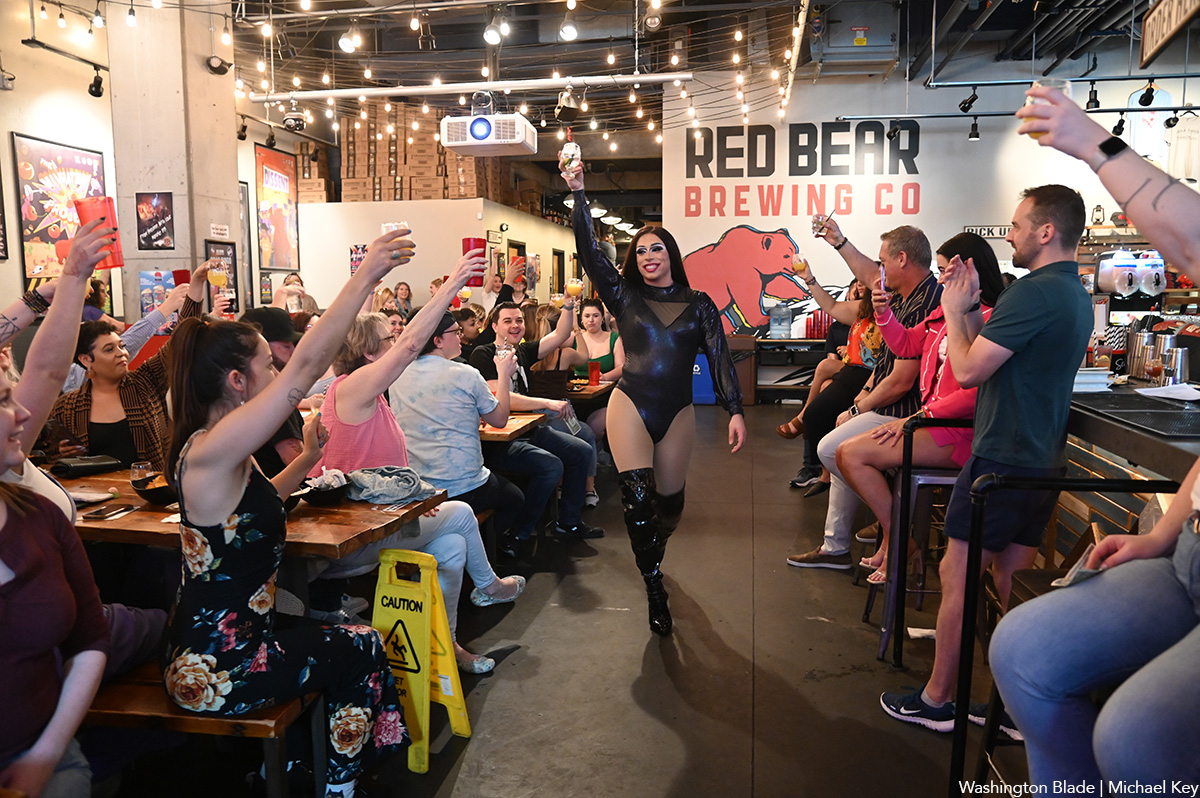
209 M St., N.E.
Having taken home Best Brunch, Best Neighborhood Bar, and Best Local Brewery awards in the past, this year, it’s back to win the Best Brewery award yet again. This gay-owned venue in the District hosts drag shows (including brunch), trivia, and stand-up performances, among other events, along with a big space for board games and casual conversation. It has poured brews with suggestive titles like “Hefe Don’t Preach,” “OktoBEARfest,” and “Tall, Dark and Nutty,” to name a few.
Editor’s Choice: DC Brau
Best Distillery: Republic Restoratives Distillery
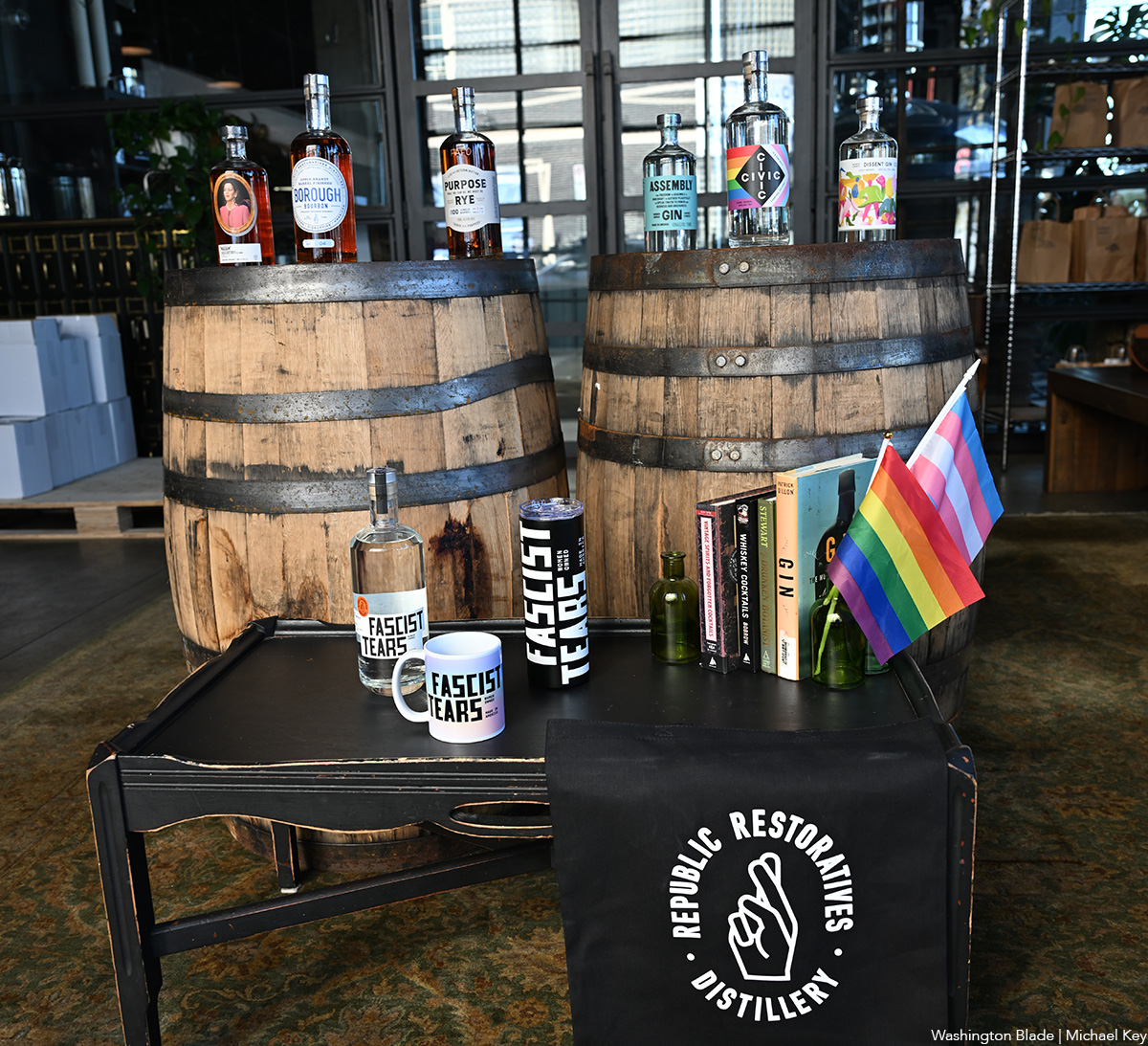
1369 New York Ave., N.E.
Winning this honor multiple times, Republic Restoratives is women-owned, community-led, made in the District, and as activist-oriented as they come. Republic’s vodka, Civic Pride, was created out of frustration with popular brands co-opting the rainbow flag while also supporting organizations or efforts that directly harm LGBTQ people. It created and then quickly sold out bottles of “Madam” a bourbon-rye whiskey on whose label Kamala Harris’s smiling visage is featured.
Editor’s Choice: Cotton & Reed
Best Burger: Duke’s Grocery

Multiple locations
The 2021, 2023, and 2024 winner, Duke’s Grocery serves burgers with a British accent. With locations in Dupont Circle (recently refreshed), Woodley Park, Navy Yard, and Foggy Bottom, this restaurant serves guests hearty portions of bar food. The burger has landed it on a whole bunch of lists, from Zagat to the Washington Post. Besides its famed Proper Burger, it also has salmon, Impossible, and Wagyu burgers. The Dupont location was closed for a year, undergoing a renovation, and recently reopened to royal fanfare.
Editor’s Choice: Lucky Buns
Best Pizza: Andy’s Pizza

Multiple locations
Andy’s Pizza serves up pizza straight from the long and storied New York tradition. Featuring stone deck ovens, long-fermented dough, Wisconsin mozzarella, California tomatoes, and a skilled pizzaiolo named Andy, this neighborhood pizzeria brings New York to D.C. while serving classic combinations. Andy’s has seven spots across the area, including one spot in Shaw across from 9:30 club and near popular gay bars. Options include flavors like pepperoni and white sauce, but the whole pies come in a range of options, including a Buffalo crispy chicken and a vegan pie with plant-based cheese.
Editor’s Choice: We the Pizza
Best Ice Cream/Gelato: Yala Greek Ice Cream
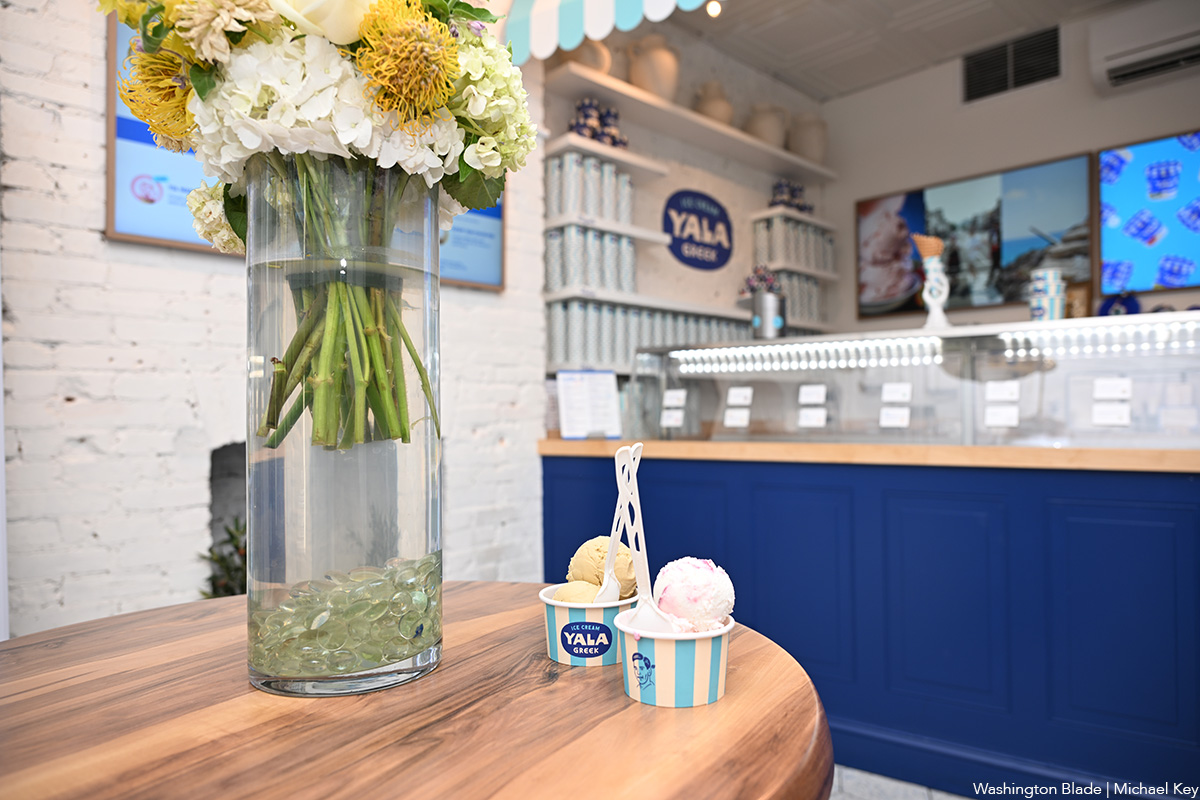
3143 N St., N.W.
The newest scoop on the block, Yala Greek Ice Cream, started by Chrys Kefalas and Salah Czapary, blends flavors from their heritage with sugar and cream to create D.C.’s latest frozen treat obsession. From classics like chocolate and vanilla to adventurous flavors like “Mornings with Thea,” a Greek yogurt ice cream with orange preserves, Yala uses mix-ins like pistachios sourced from the EU and milk from Maryland “A2” cows, known for being easier to digest. With lines often stretching around the block, it’s easy to see why Yala has quickly become a favorite for locals craving something sweet and unique.
Editor’s Choice: Jeni’s Splendid Ice Cream
Best Winery: Chester Gap Cellars

4615 Remount Rd.
Front Royal, Va.
chestergapcellers.com
Located in Front Royal, Virginia, just a little over an hour from Washington, gay-owned and gay-friendly Chester Gap Cellars offers the best in valley vistas and delightful vintages. The small estate winery’s owners also have an Airbnb where guests can eat, sleep, enjoy the outdoor fire pit, and indulge in more vino.
Editor’s Choice: District Winery
REHOBOTH BEACH
Best Rehoboth Drag Queen: Magnolia Applebottom
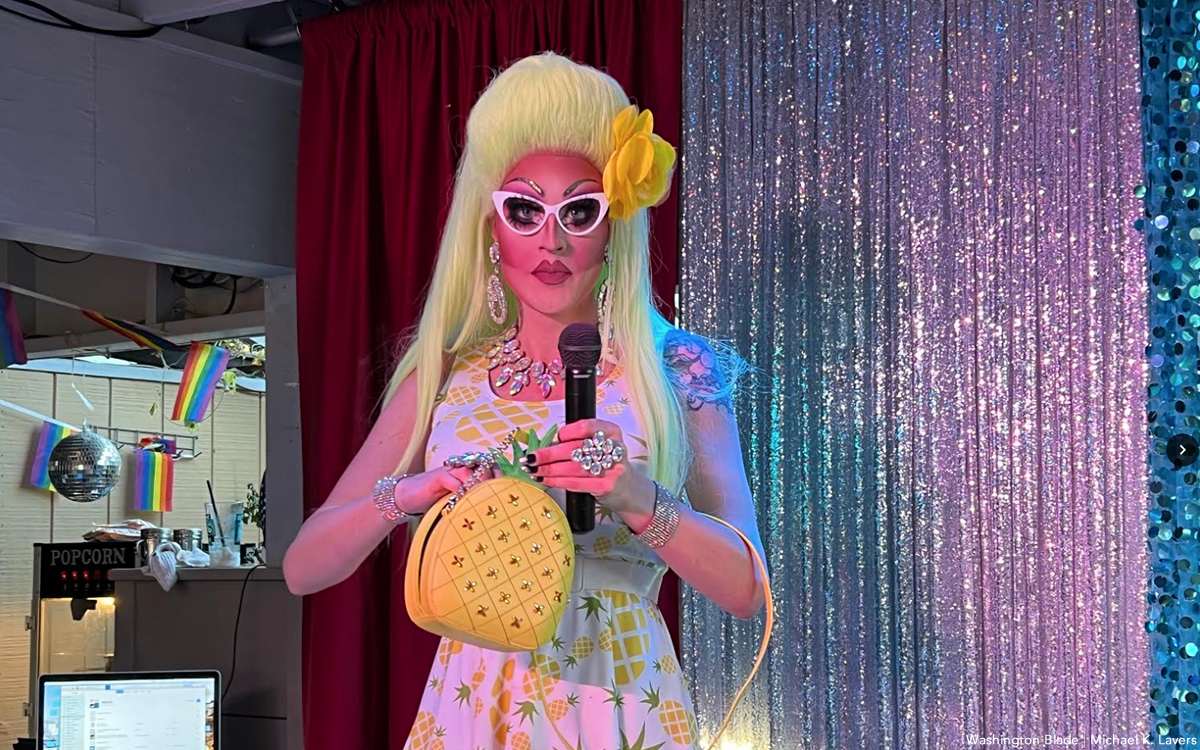
She’s done it again. Magnolia Applebottom (aka Jeremy Bernstein) is your pick for Best Rehoboth Drag Queen for the fourth consecutive year. At a time of anti-DEI crackdowns and legislative attacks on everything from drag to trans healthcare, the queens will show us the way as they have bravely done for decades. Magnolia remains a constant fierce and fearless presence not just in Rehoboth but throughout the Eastern Shore, from Salisbury to Milton, Del. Catch her at Diego’s in Rehoboth and during the month of October at the Milton Theater where Bernstein stars as Frank N Furter in “The Rocky Horror Picture Show.”
Editor’s Choice: Regina Cox
Best Rehoboth Drag Show: Splash Party with Magnolia at Diego’s

37298 Rehoboth Ave.
Rehoboth Beach, Del.
A second win for Magnolia this year and a repeat winner in this category from last year. The Splash Party at Diego’s remains one of the hottest events in town, Saturdays at 5 p.m. on the outdoor patio.
Editor’s Choice: Follies at the Beach, Freddie’s
Best Rehoboth-Area Live Show: Pamala Stanley at Diego’s
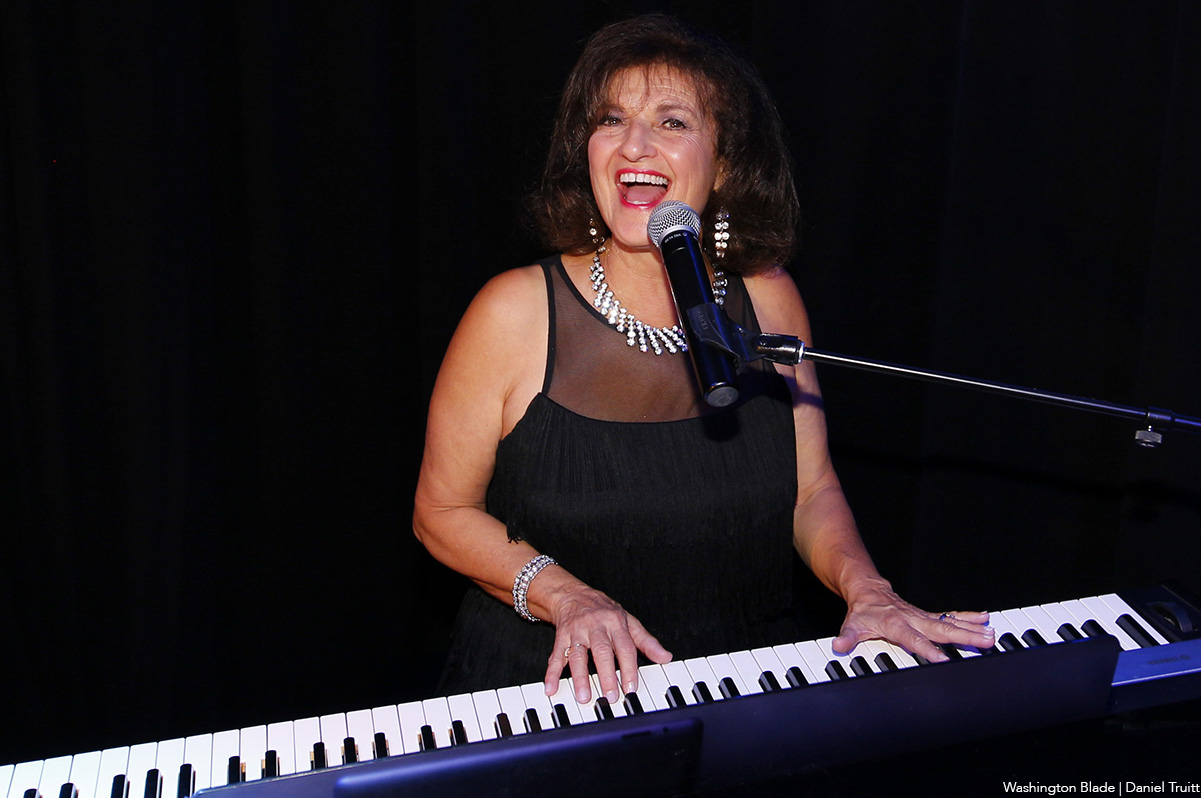
37298 Rehoboth Ave.
Rehoboth Beach, Del.
diegosbarnightclub.com
The beloved Pamala Stanley celebrated her 20th year of performing in Rehoboth Beach this summer with her Sunday night dance party and Monday night piano show. The Monday event is on pause now that the summer season is over, but you can still catch Pamala on Sundays starting at 5 p.m. through New Year’s. After 20 years, Pamala’s show remains the place to be seen on Sundays as locals and tourists alike come together to party. It’s two hours of upbeat, infectiously joyful pop and disco peppered with Pamala’s inimitable humor and wit.
Editor’s Choice: Naughty Bingo with Magnolia Applebottom at Diego’s
Best Rehoboth Outdoor Dining: The Back Porch Café

59 Rehoboth Ave.
Rehoboth Beach, Del.
Many locals know about the important role that the Back Porch Café played in elevating Rehoboth’s culinary scene but not many realize how pivotal the 51-year-old restaurant was in bringing together the quiet town’s gay, straight, and trans communities. The Back Porch was an important gathering place for the town’s creative residents and a place not just for excellent food but for art exhibitions. Today, the Back Porch continues to serve up top-notch French fare in an unpretentious, welcoming setting. The outdoor patio is one of the few places in Rehoboth where you can dine al fresco in a private, convivial courtyard. After dinner, take time to stroll the restaurant and take in the art that adorns the walls. There’s a lot of fascinating history to be found in this irreplaceable icon of Rehoboth Beach.
Editor’s Choice: The Purple Parrot
Best Rehoboth Coffee Shop: Rise Up
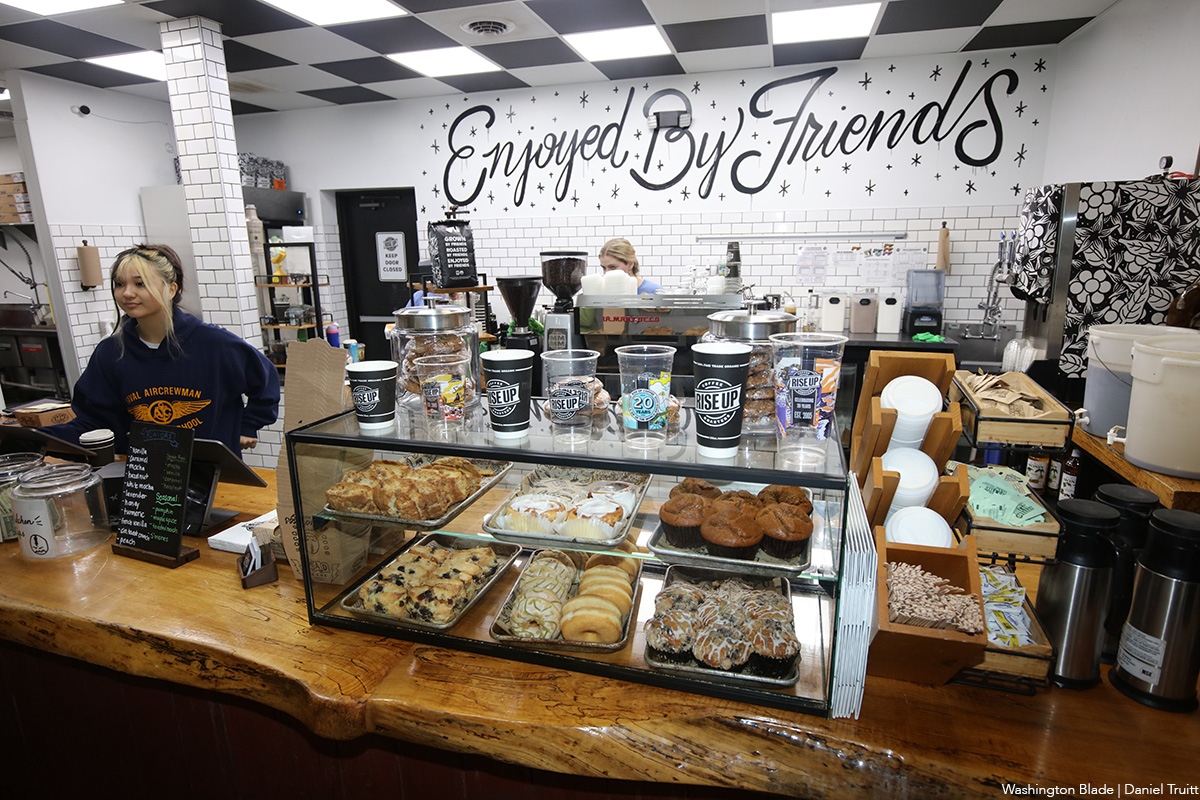
502 Rehoboth Ave.
Rehoboth Beach, Del.
Rehoboth’s coffee scene is in flux after the recent closure of the town’s Starbucks. Rise Up is part of a small regional chain of coffeehouses that offers a small menu and a cocktail bar. But most visitors grab a coffee or latté and relax in the spacious lounge or outdoor patio complete with complimentary Wifi enabling you to work or just quietly doom scroll.
Editor’s Choice: The Coffee Mill
Best Rehoboth Restaurant: Blue Moon

35 Baltimore Ave.
Rehoboth Beach, Del.
Perennial favorite Blue Moon remains on top after winning this category last year. With so much competition from regional and out-of-town chains like Atlas Restaurant Group, it’s nice to see a local, gay-owned restaurant continue to serve up the best food in town. Go early for the Moon’s excellent happy hour specials or to hear John Flynn on the piano then indulge in the luxurious lobster risotto or perhaps a comforting bowl of short rib stroganoff.
Editor’s Choice: Henlopen City Oyster House
Best Rehoboth Real Estate Agent: Andy Staton
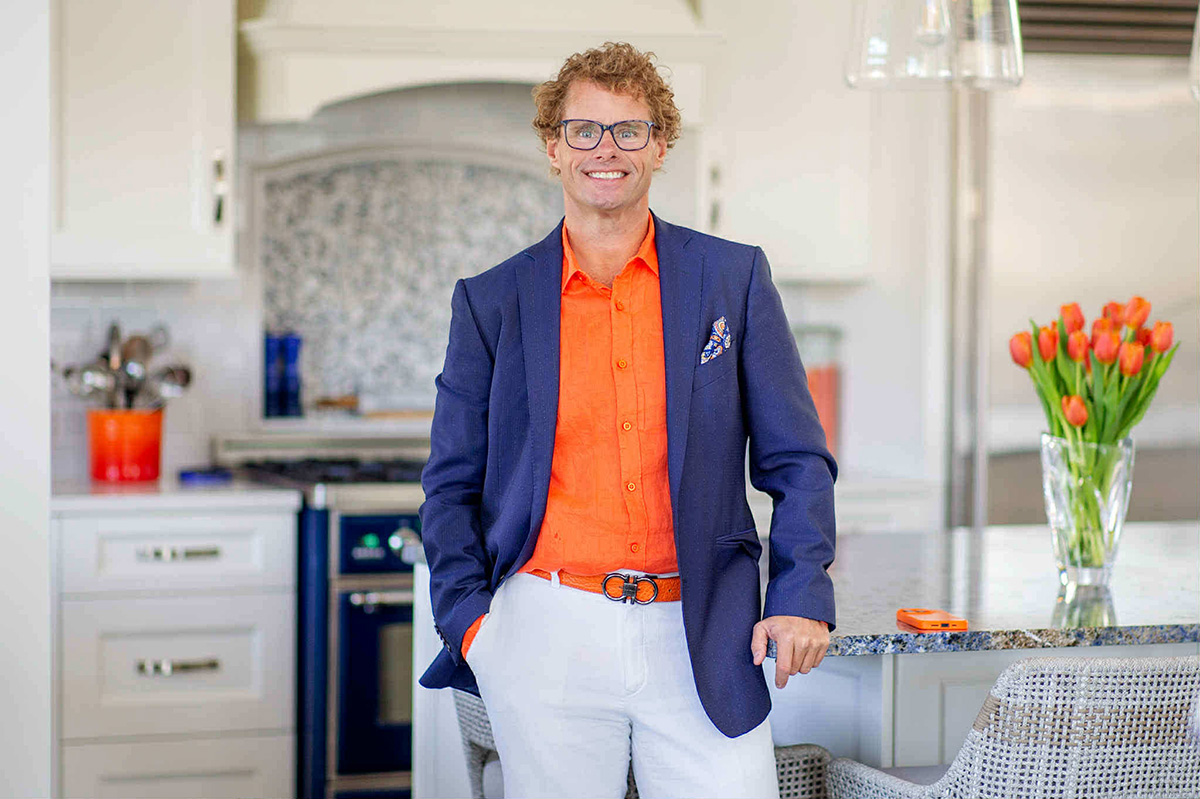
18949 Coastal Highway, Suite 304
Rehoboth Beach, Del.
After seven consecutive wins in this category by local legend Lee Ann Wilkinson, there’s a new agent atop the list. Longtime local Realtor Andy Staton is your pick for Best Rehoboth Realtor. The Andy Staton Group at Monument Sotheby’s “combines concierge style attention to customer detail to meet seller and buyer needs in a modern service-oriented approach,” according to its website. You may have seen Andy in his role as a TV host for the American Dream Network or in one of his videos promoting his love of pickleball.
Editor’s Choice: Chris Beagle
Best Rehoboth Business: Diego’s
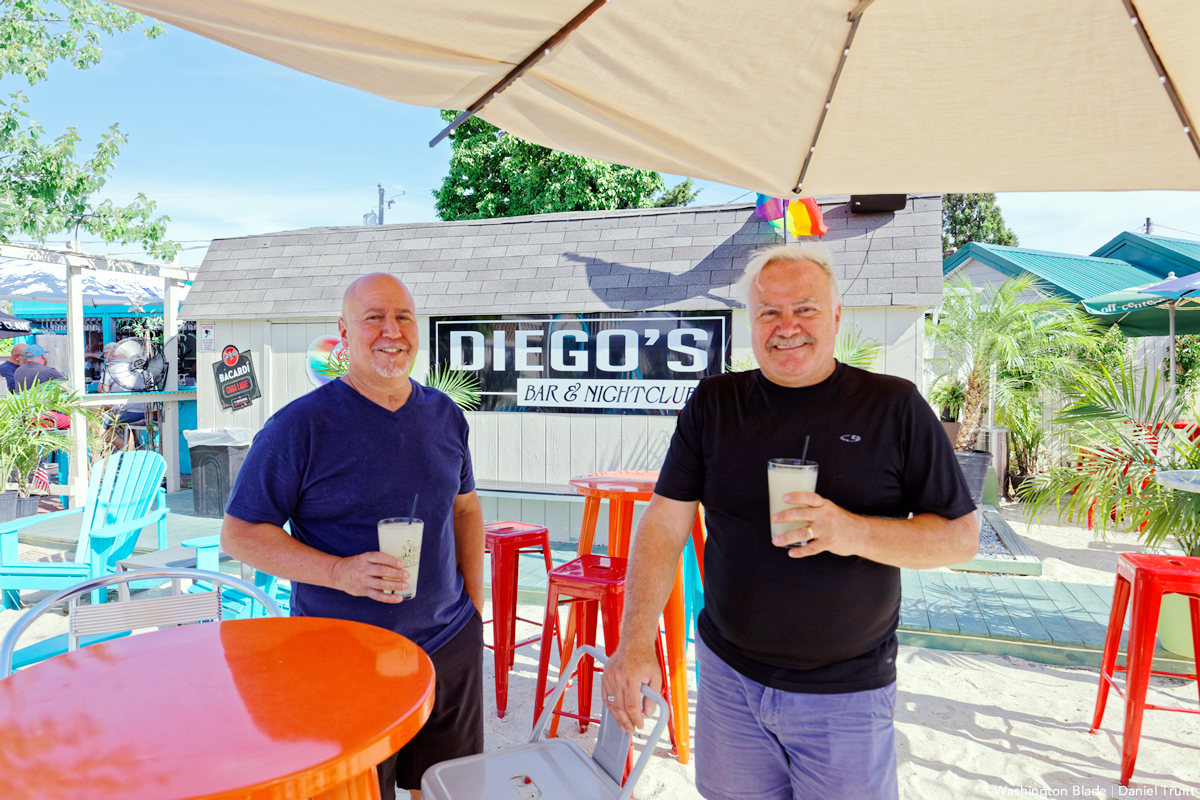
37298 Rehoboth Ave.
Rehoboth Beach, Del.
Diego’s dominated this year’s awards with multiple wins, showcasing the hard work of owners Darryl and Joe Ciarlante-Zuber to create an unabashedly queer space with year-round entertainment, friendly bartenders, and multiple indoor/outdoor spaces to gather with friends. Whether you come for an intimate happy hour with friends, a Sunday T-dance with Pamala Stanley, or late-night dancing with internationally renowned DJs, Diego’s never disappoints.
Editor’s Choice: Freddie’s Beach Bar
Best Rehoboth Bartender: Katie Lyell, Aqua Bar& Grill
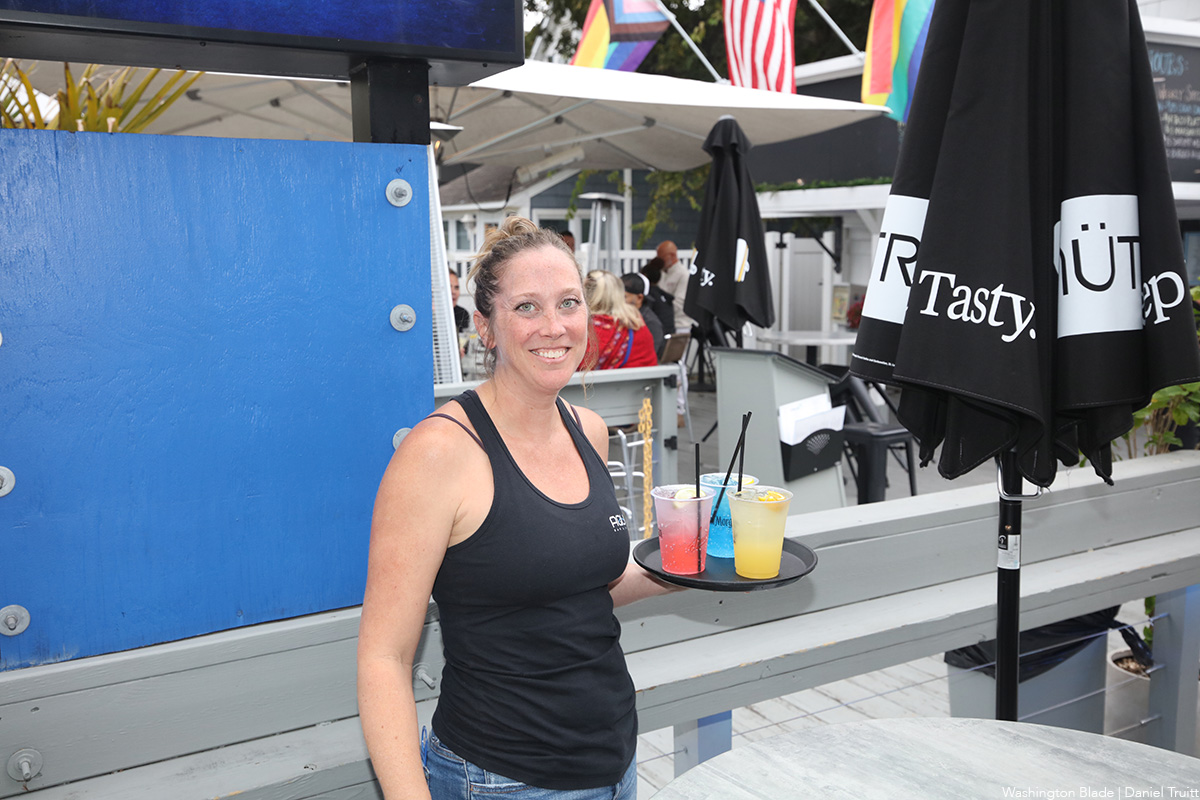
57 Baltimore Ave.
Rehoboth Beach, Del.
Katie Lyell is a first-time winner in this competitive category but she’s no stranger to the regulars at Aqua. Fighting the crowds to the bar in summer, you will be greeted by Katie’s always-smiling face.
Lyell, 39, is straight and has been married for two years. She grew up in Newark, Del., and attended Frostburg State University.
She’s in her eighth year bartending at Aqua and says the bar has become much more of a year-round destination since she started.
“We’ve been able to extend our season because of it,” she said, noting Aqua will hold its annual closing party on Jan. 1 and likely reopen for St. Patrick’s Day in March.
She plans to “hibernate” during the break and travel with her husband.
The best part of working at Aqua? “Getting to meet so many different people, even if it’s just for a 60-second interaction. I enjoy chatting with everyone. I really love my community.”
What’s her most dreaded drink order? “Three martinis at one time because I can only make two in a shaker.”
Lyell says the highlight of her summer was Memorial Day Weekend because customers count down to the unofficial summer kickoff weekend.
“I also really love Bear Weekend, it’s always a great time.”
Editor’s Choice: Eddie Adam, Diego’s
-

 District of Columbia12 hours ago
District of Columbia12 hours agoBowser announces she will not seek fourth term as mayor
-

 U.S. Military/Pentagon1 day ago
U.S. Military/Pentagon1 day agoPentagon moves to break with Boy Scouts over LGBTQ and gender inclusion
-

 Drag1 day ago
Drag1 day agoPattie Gonia calls out Hegseth’s anti-LGBTQ policies — while doing better pull-ups
-

 District of Columbia2 days ago
District of Columbia2 days agoSecond gay candidate announces run for Ward 1 D.C. Council seat

